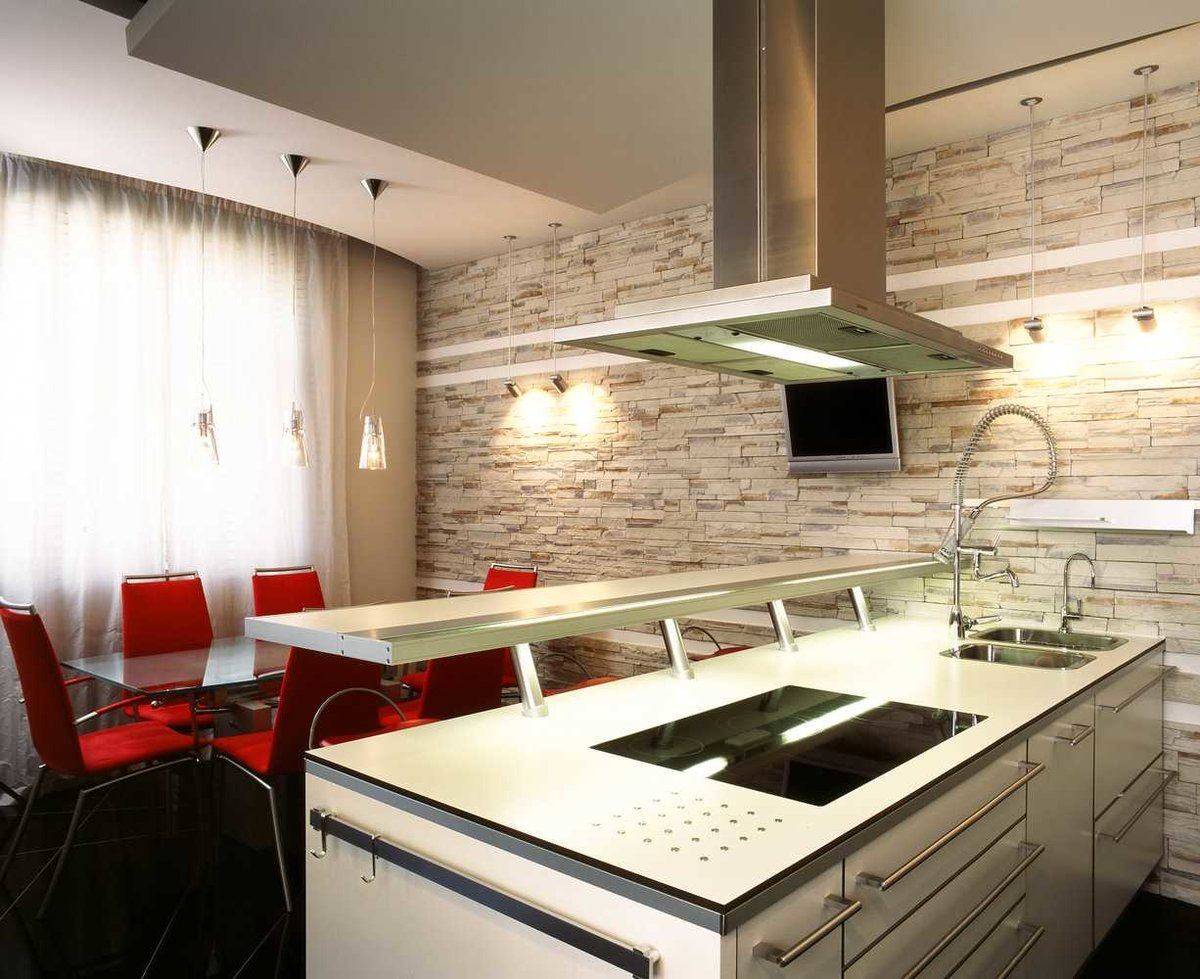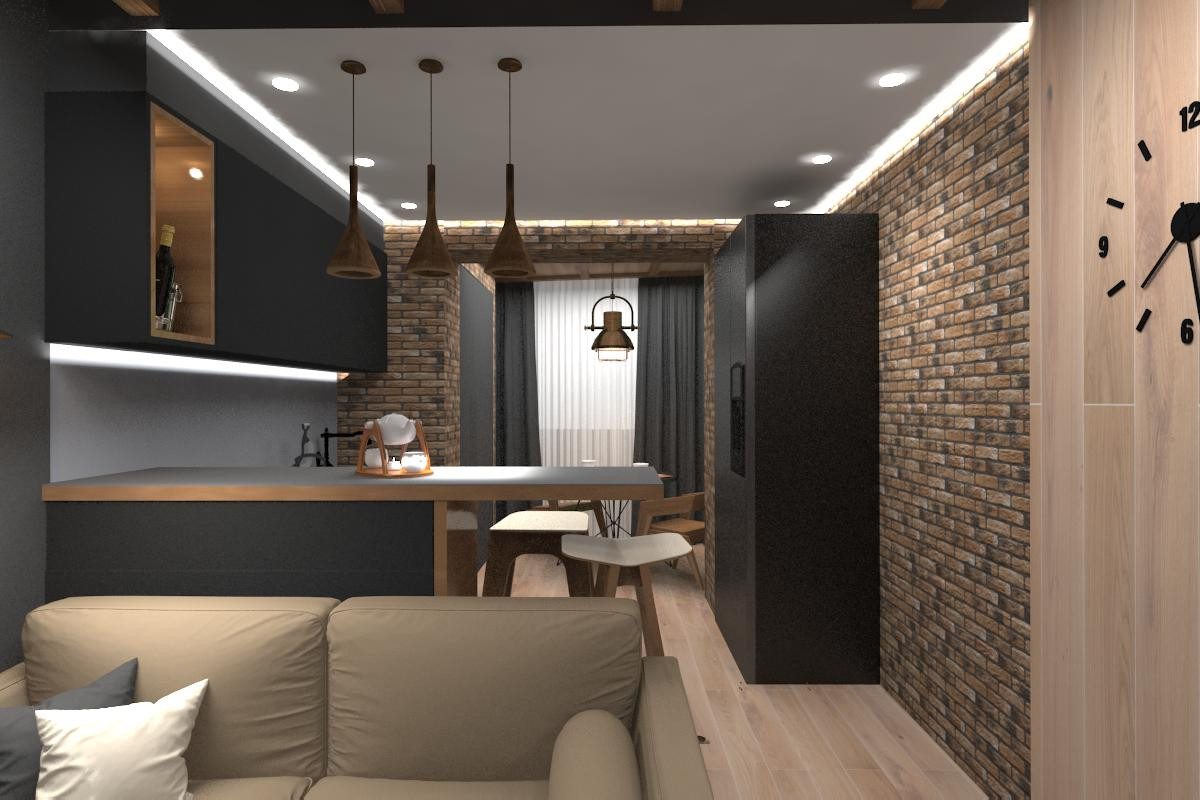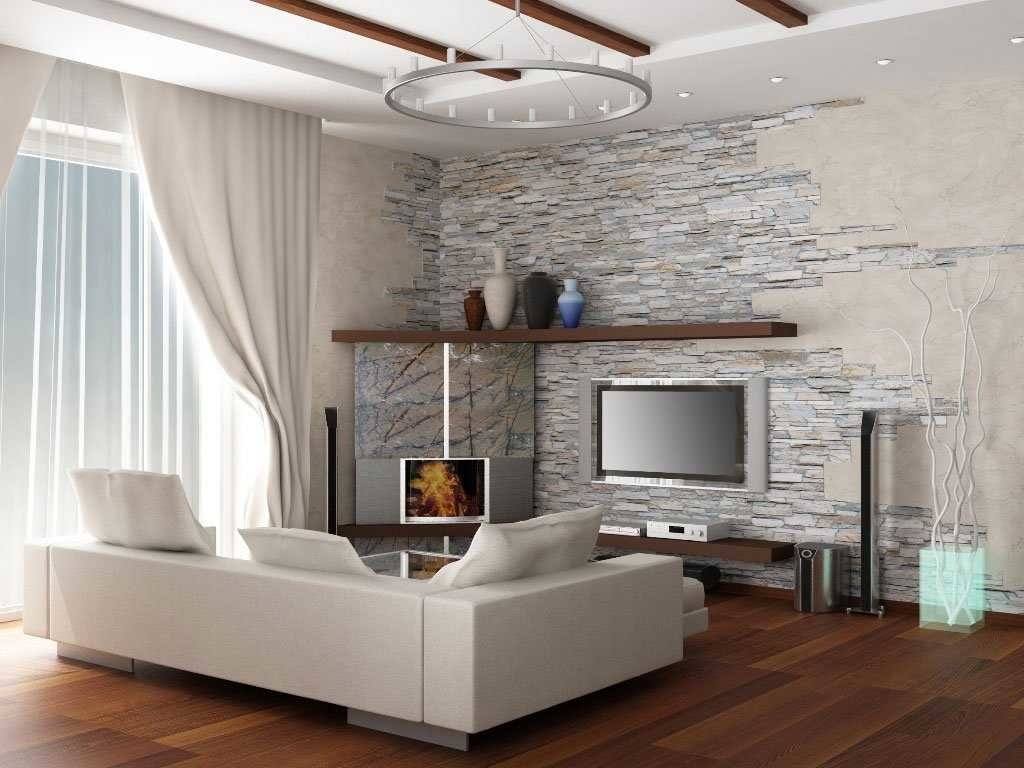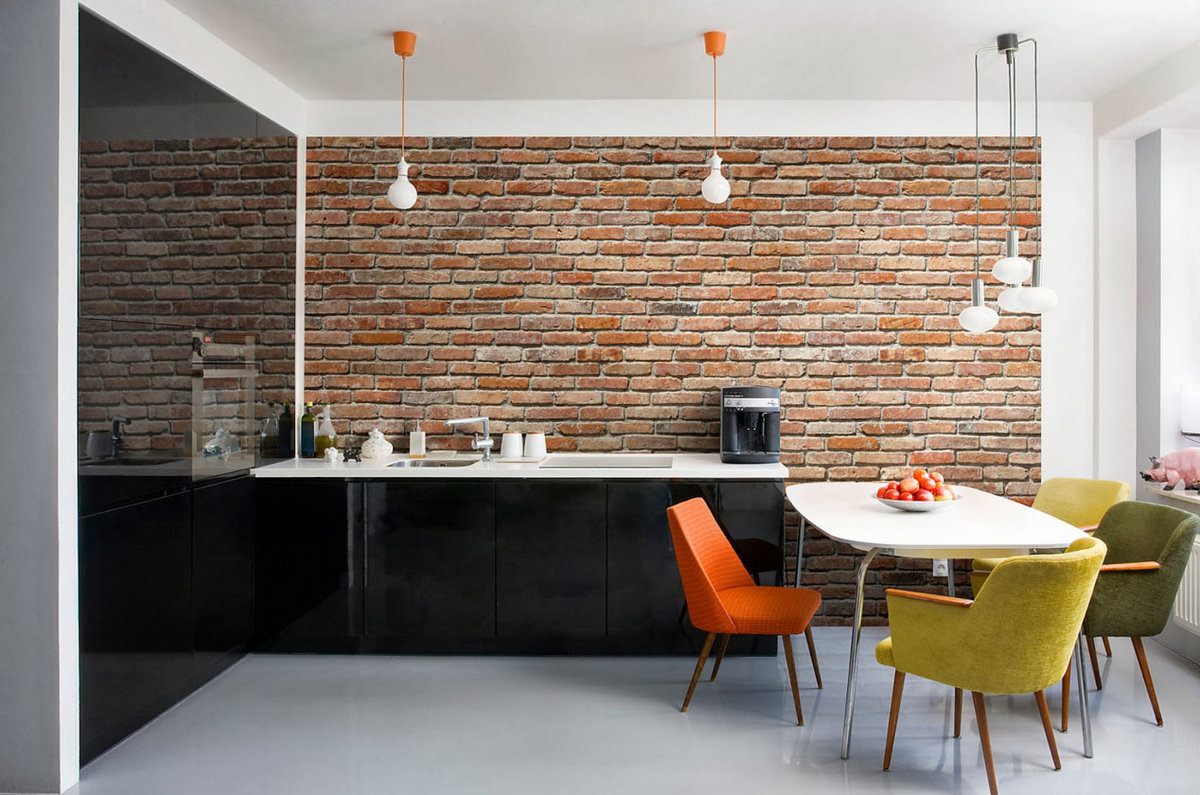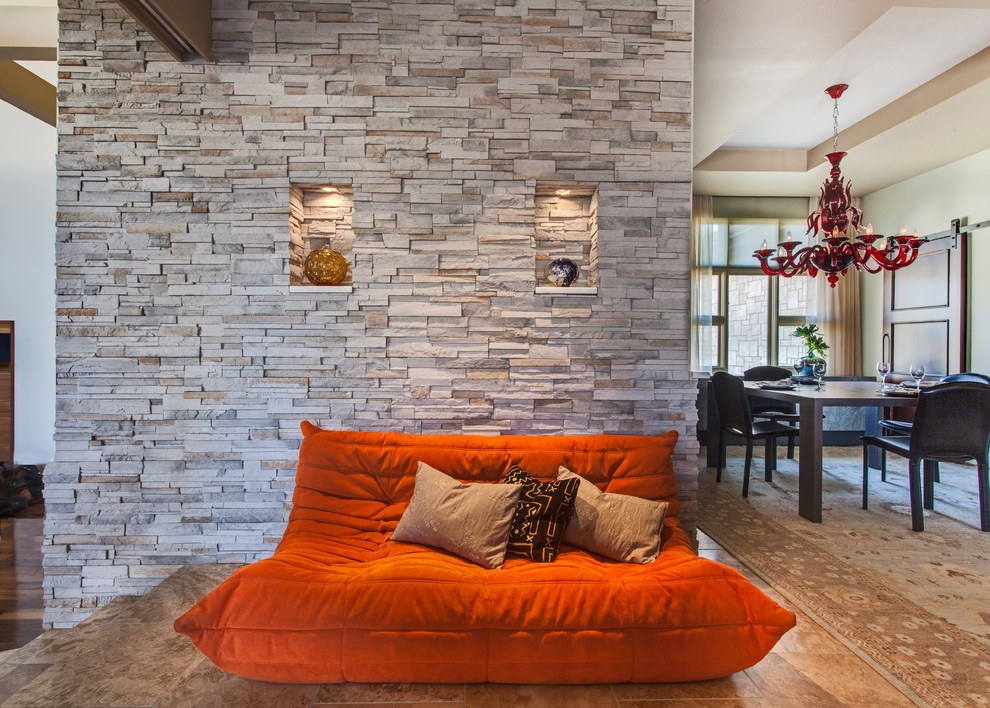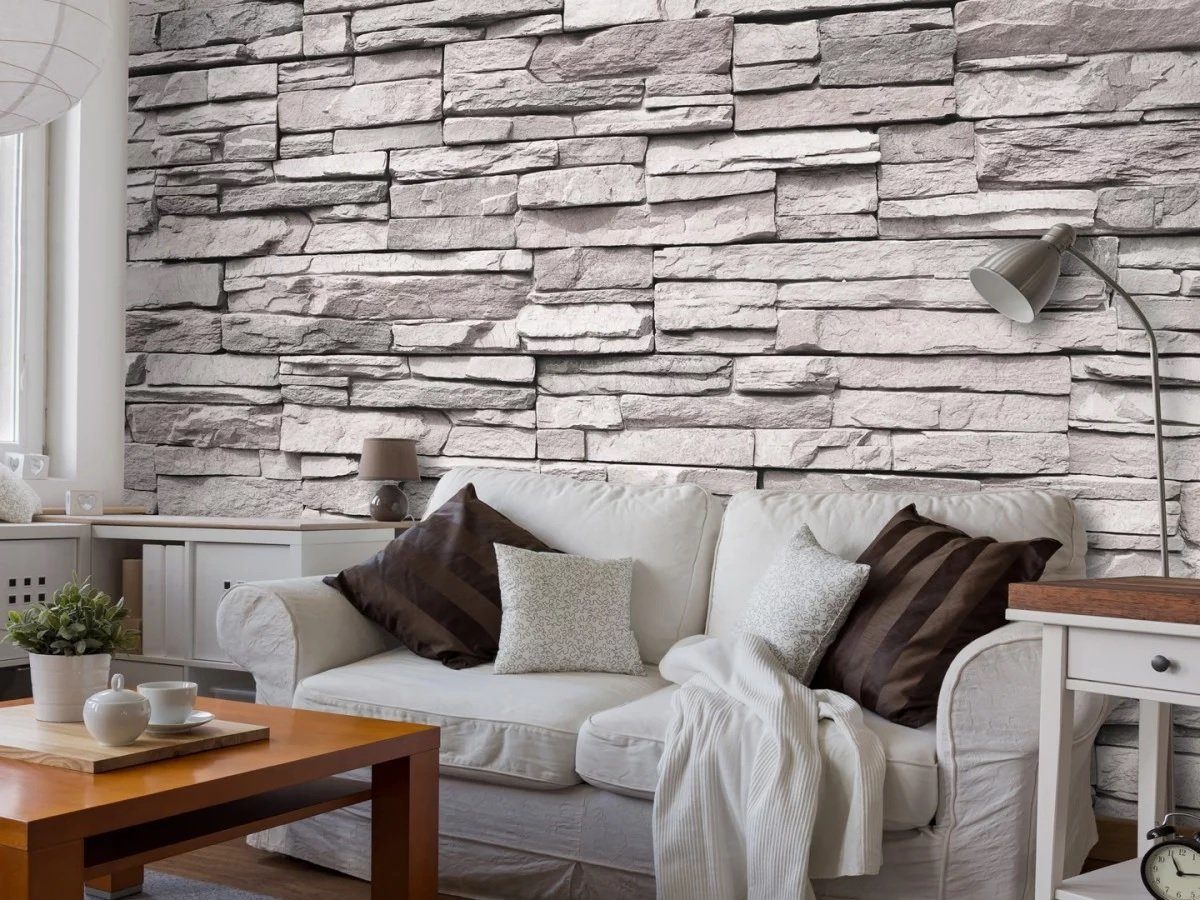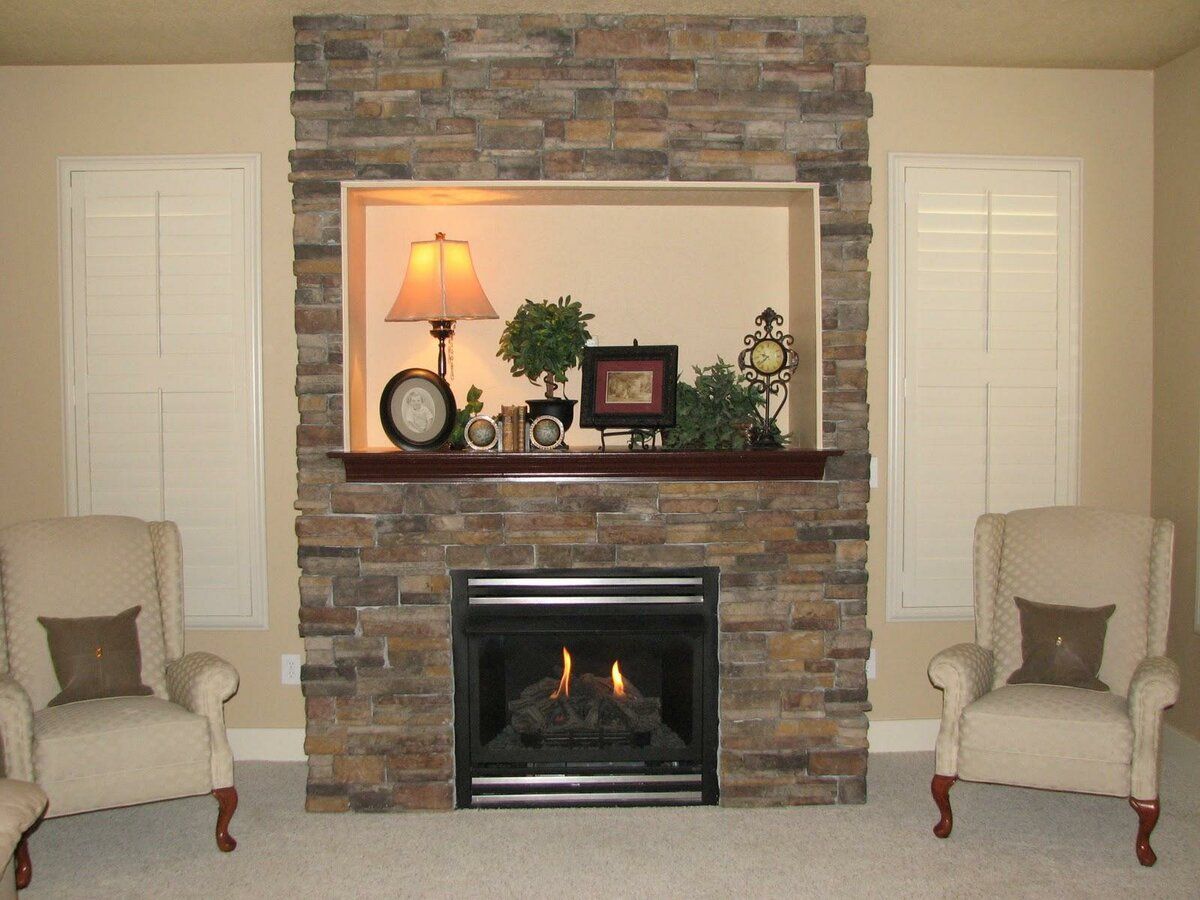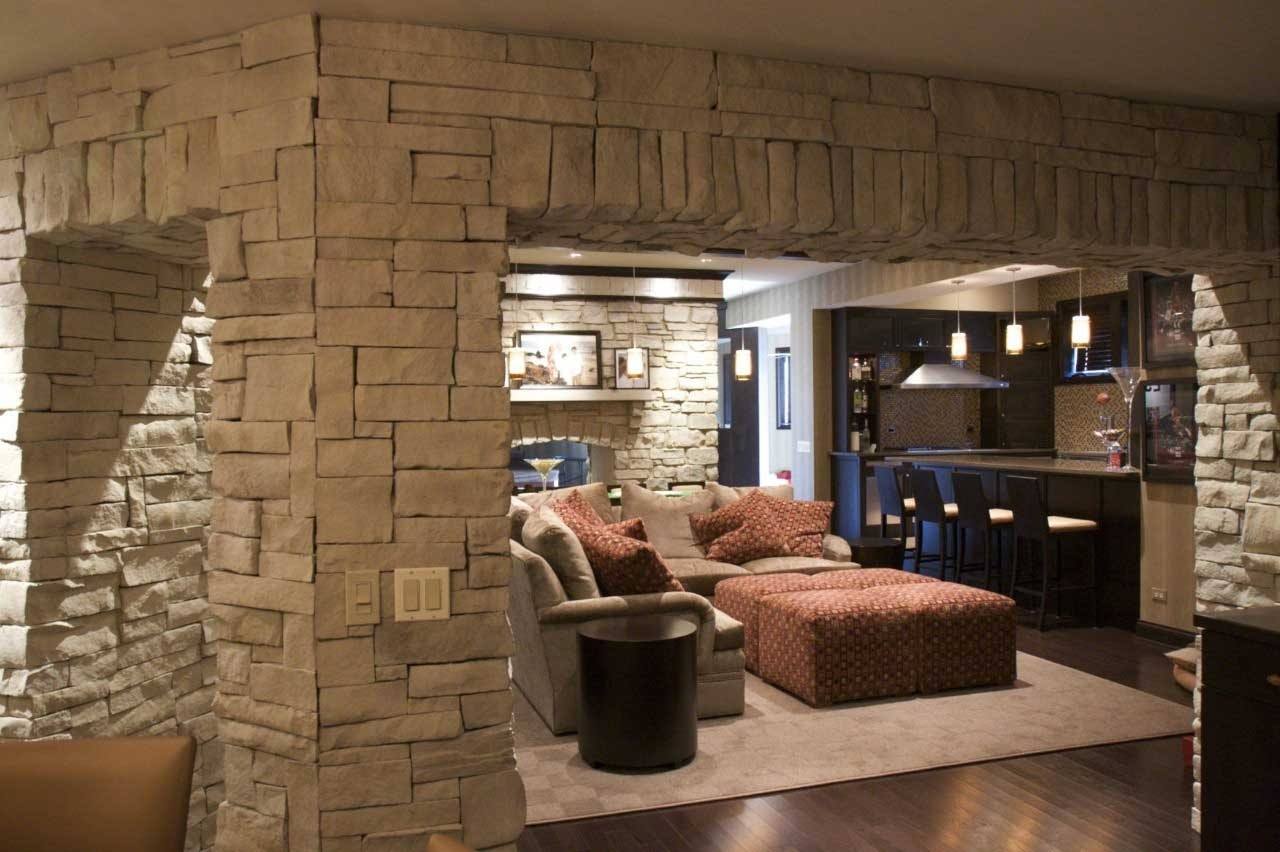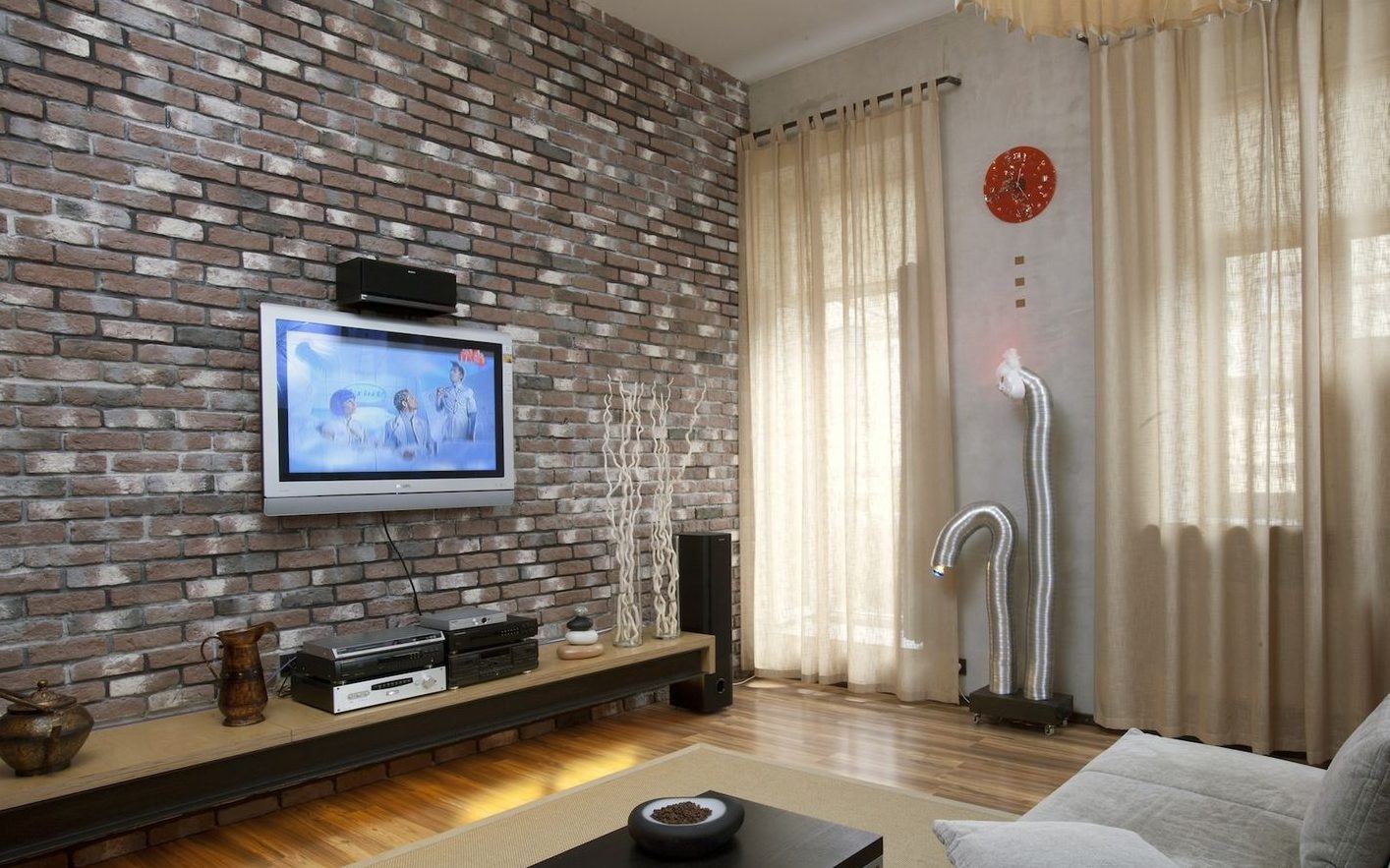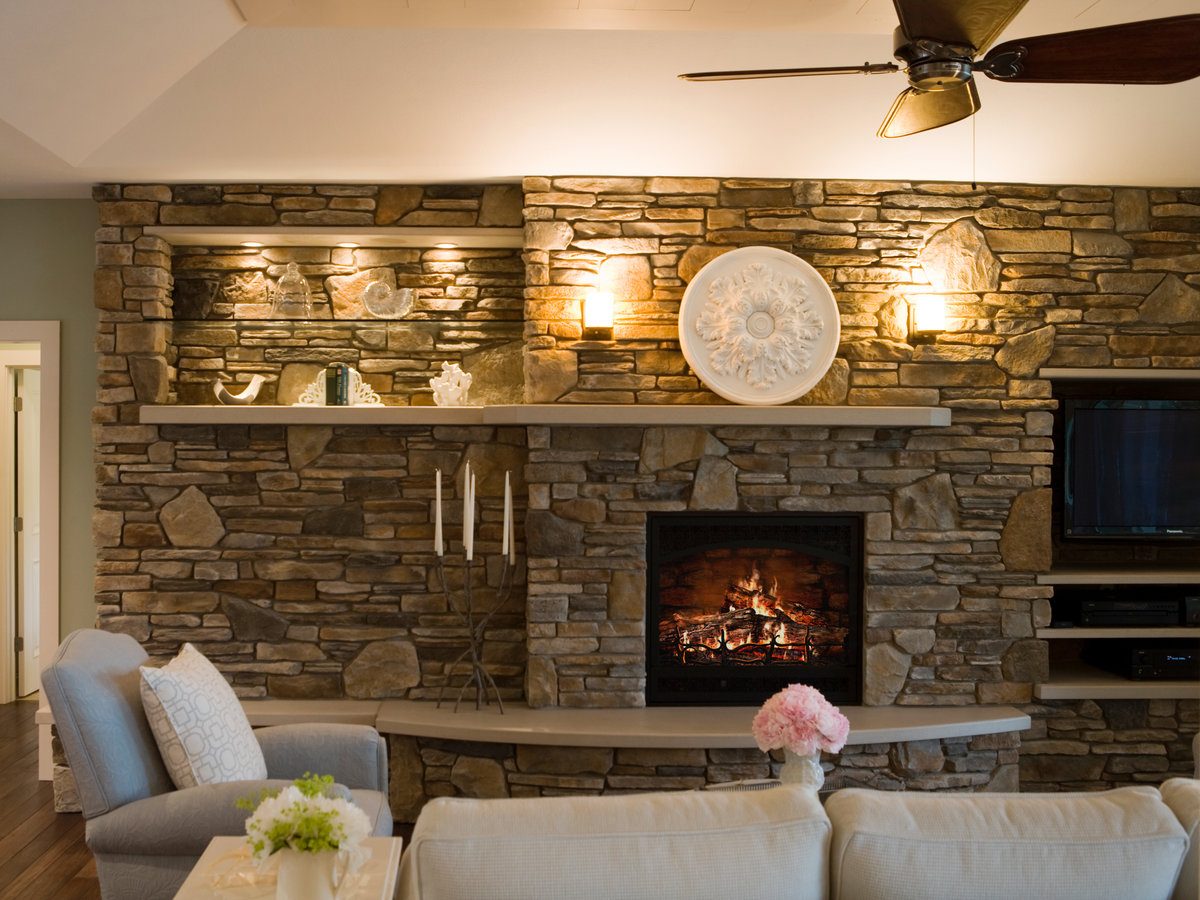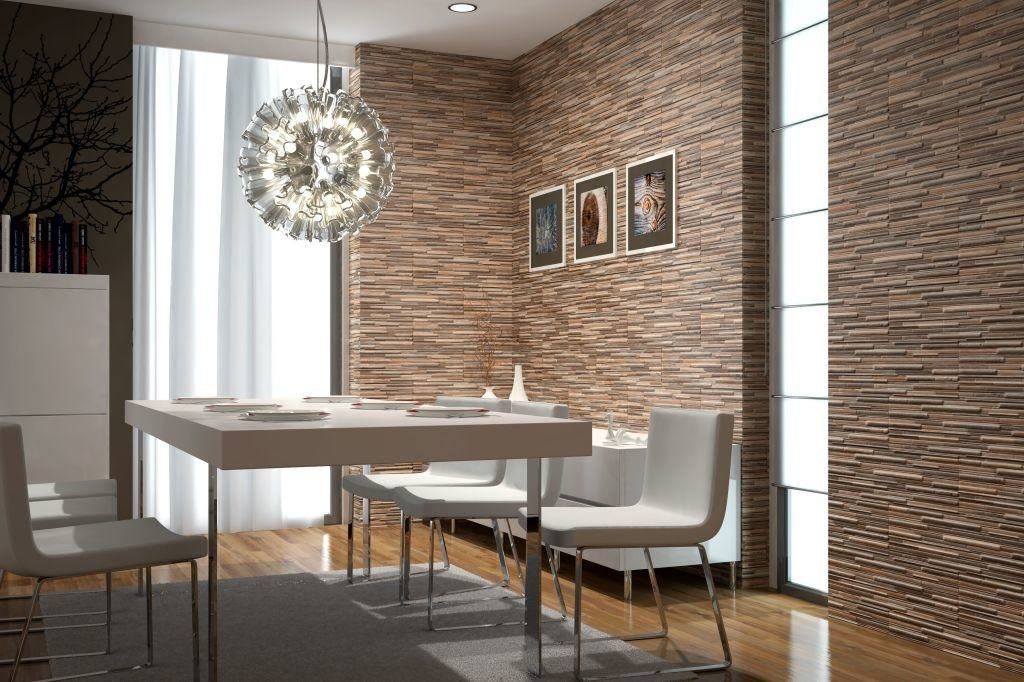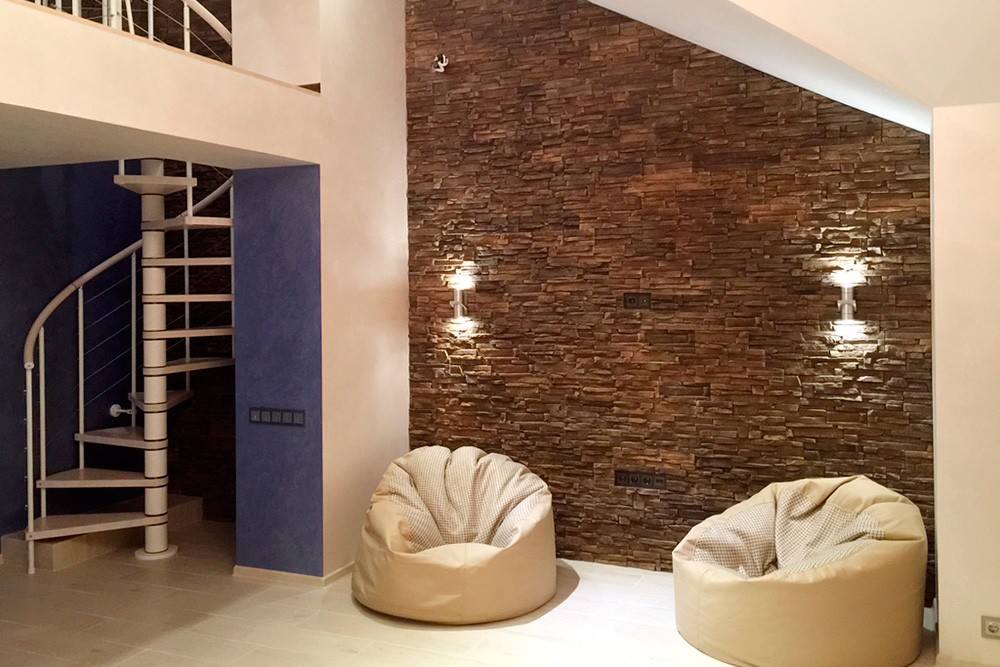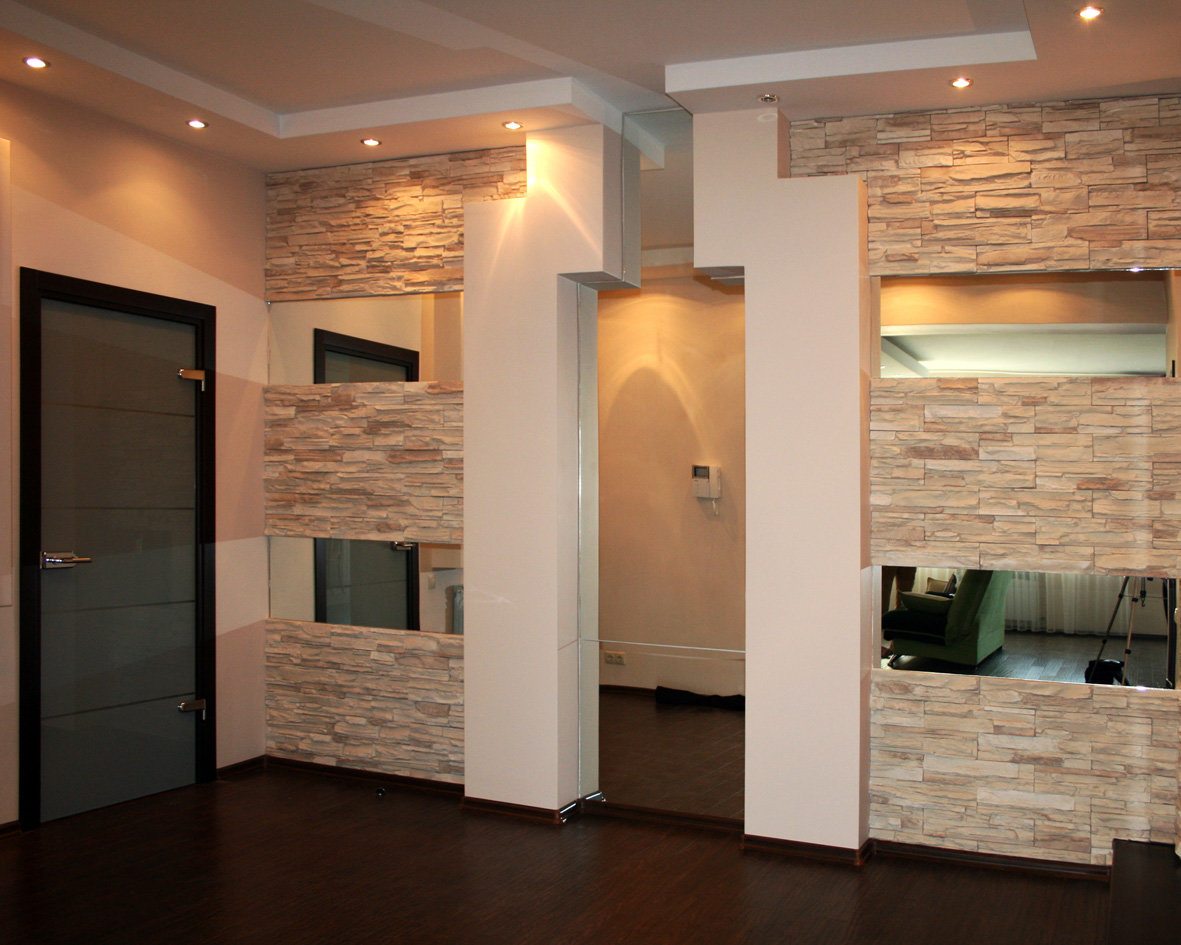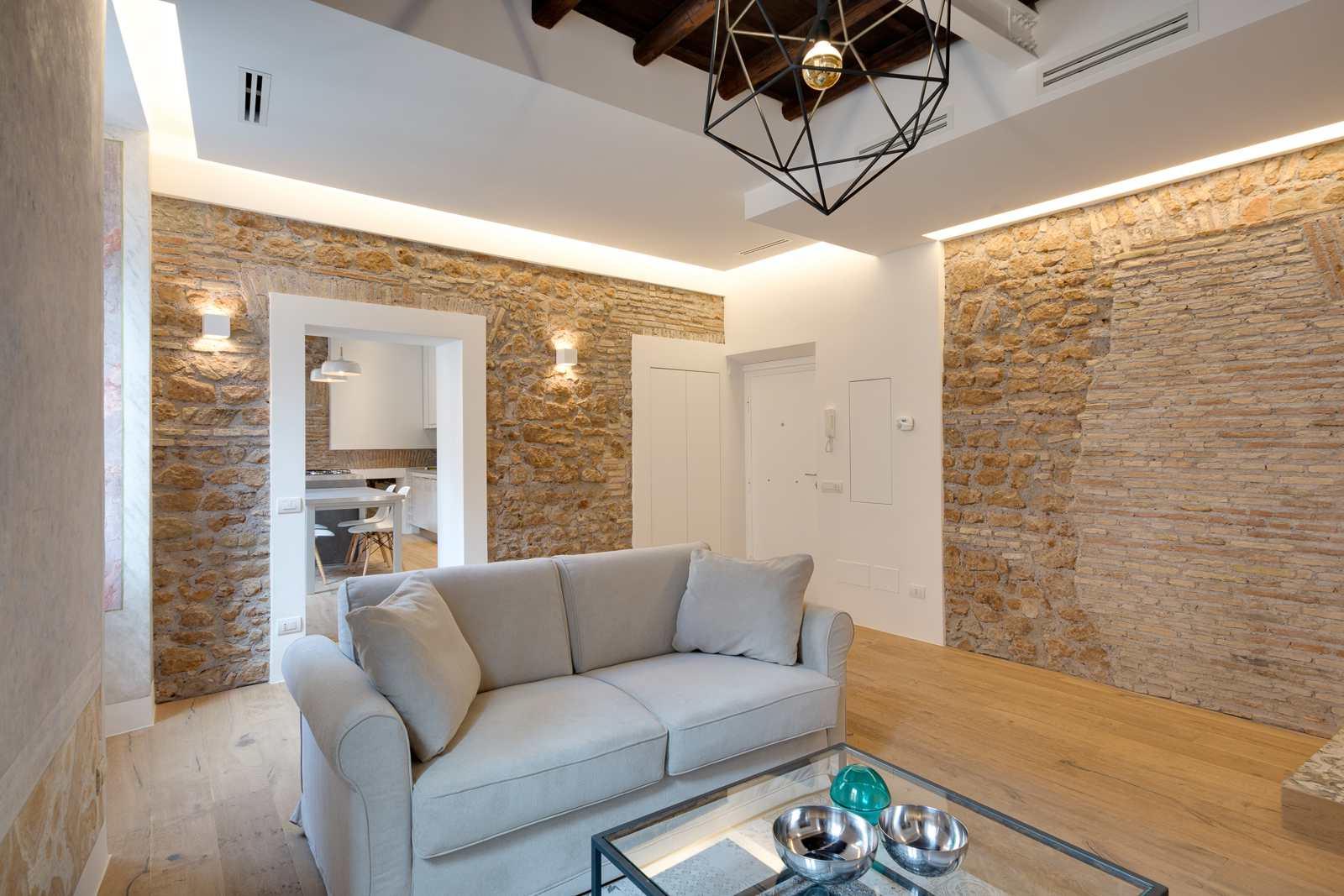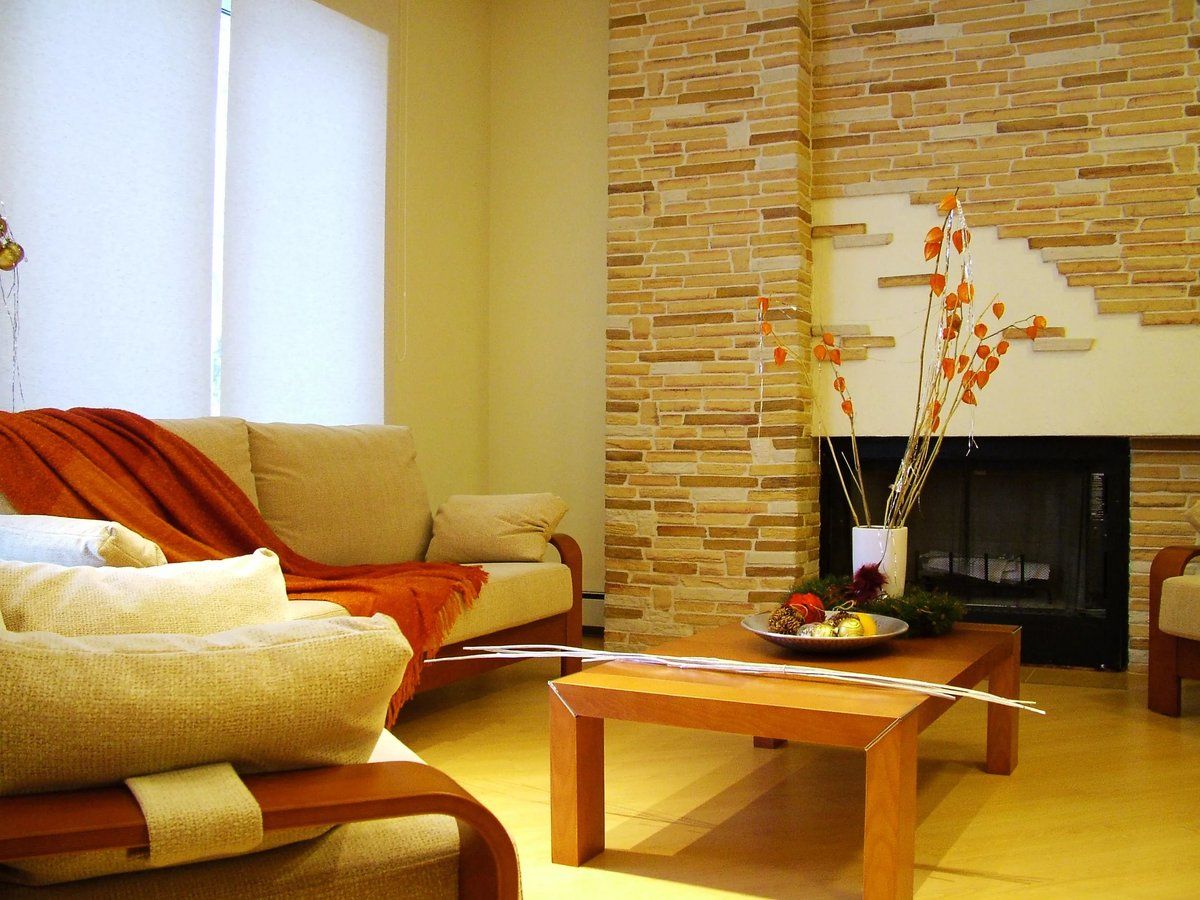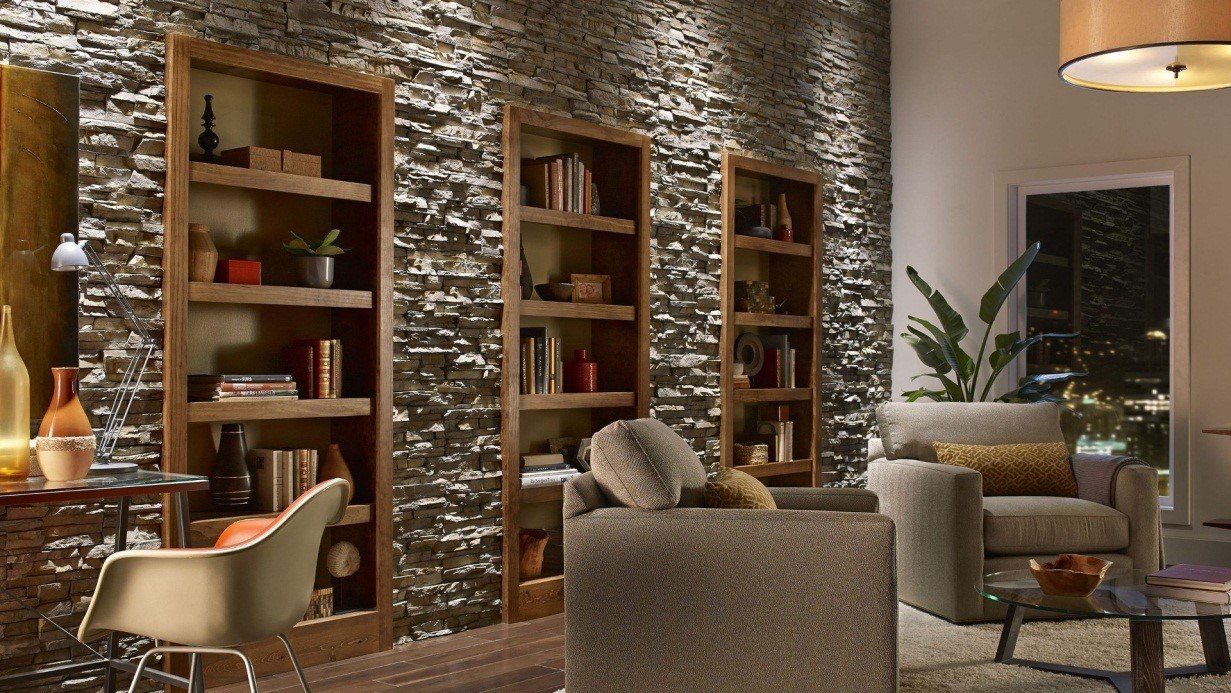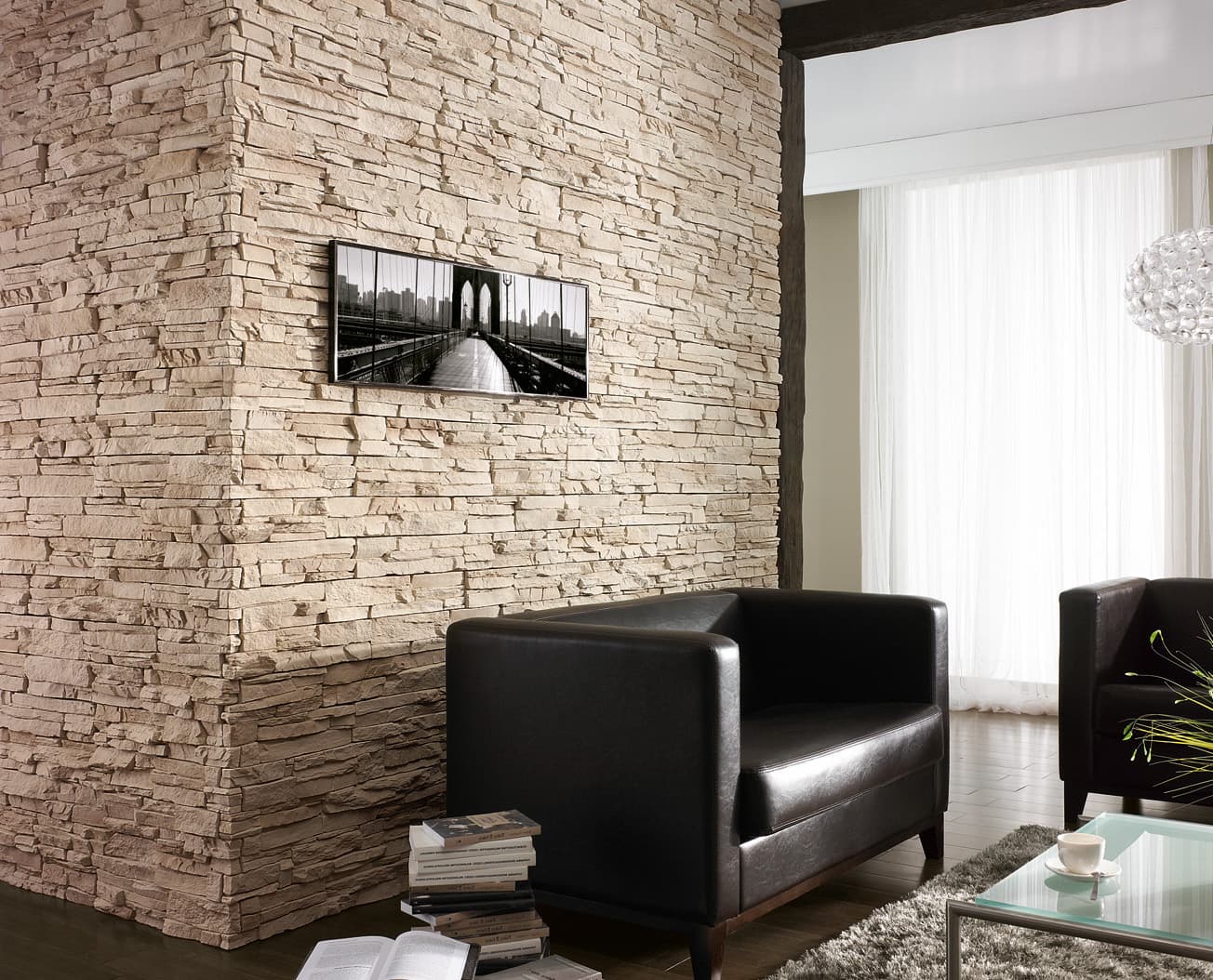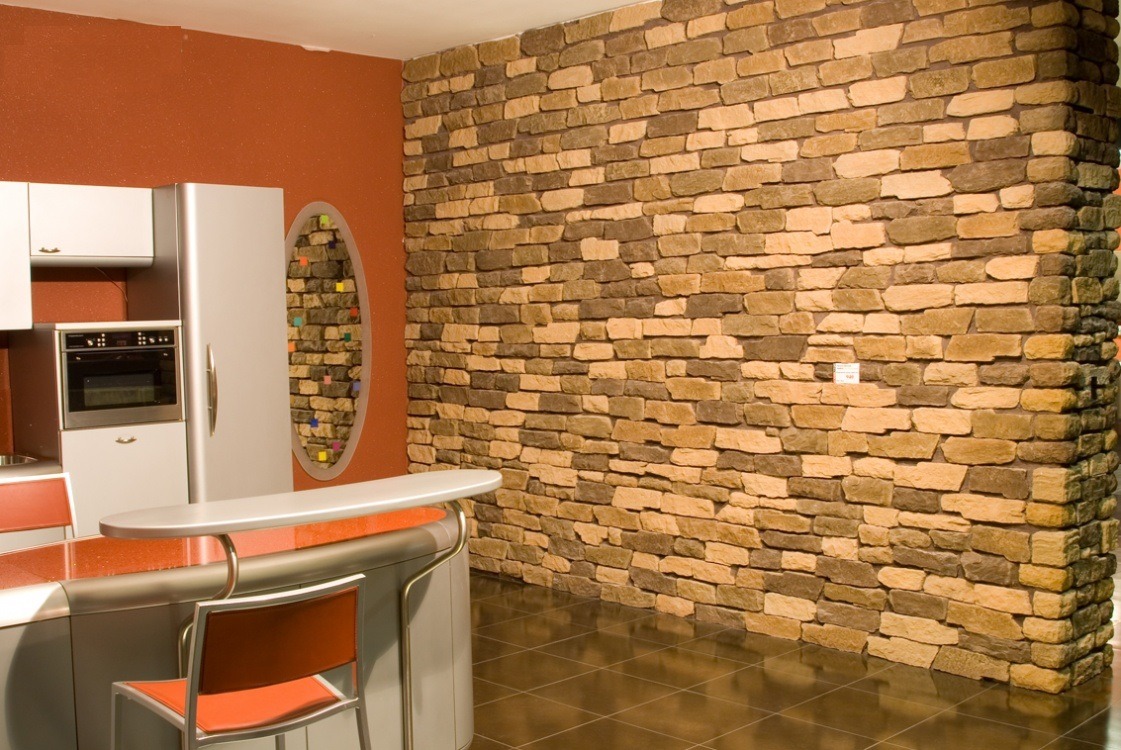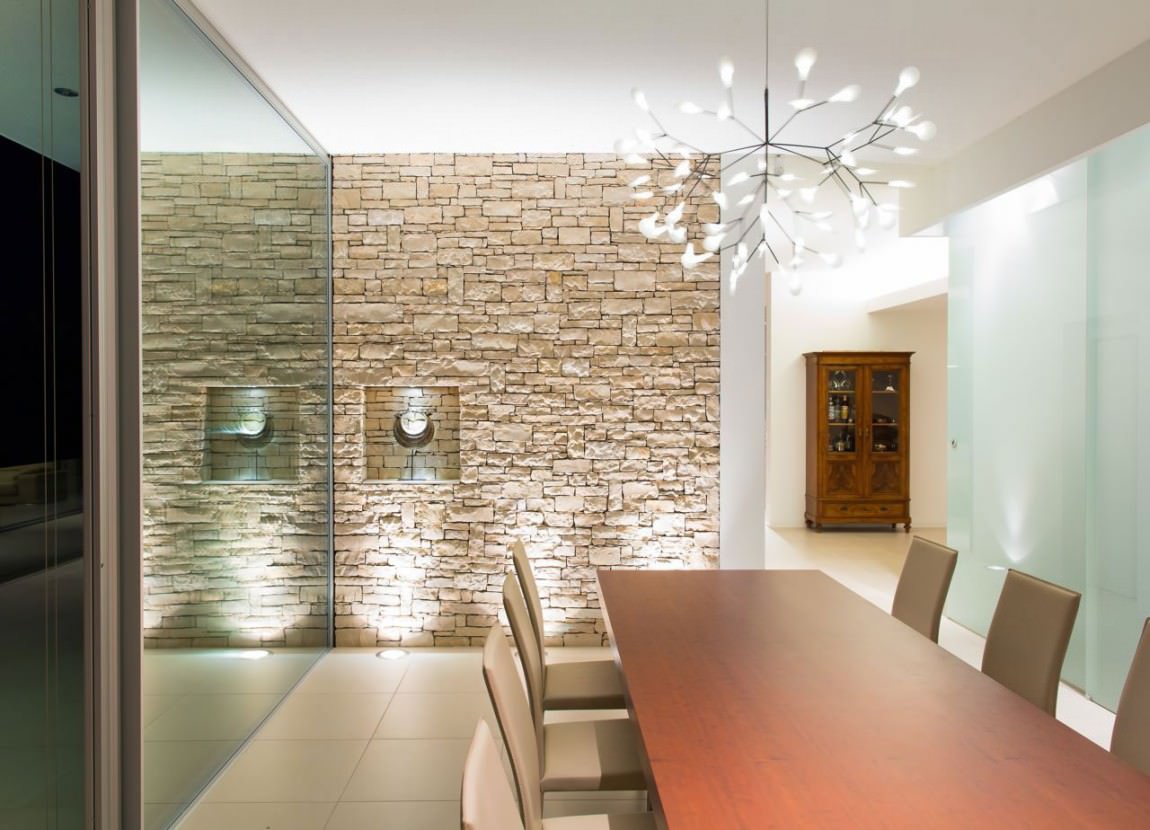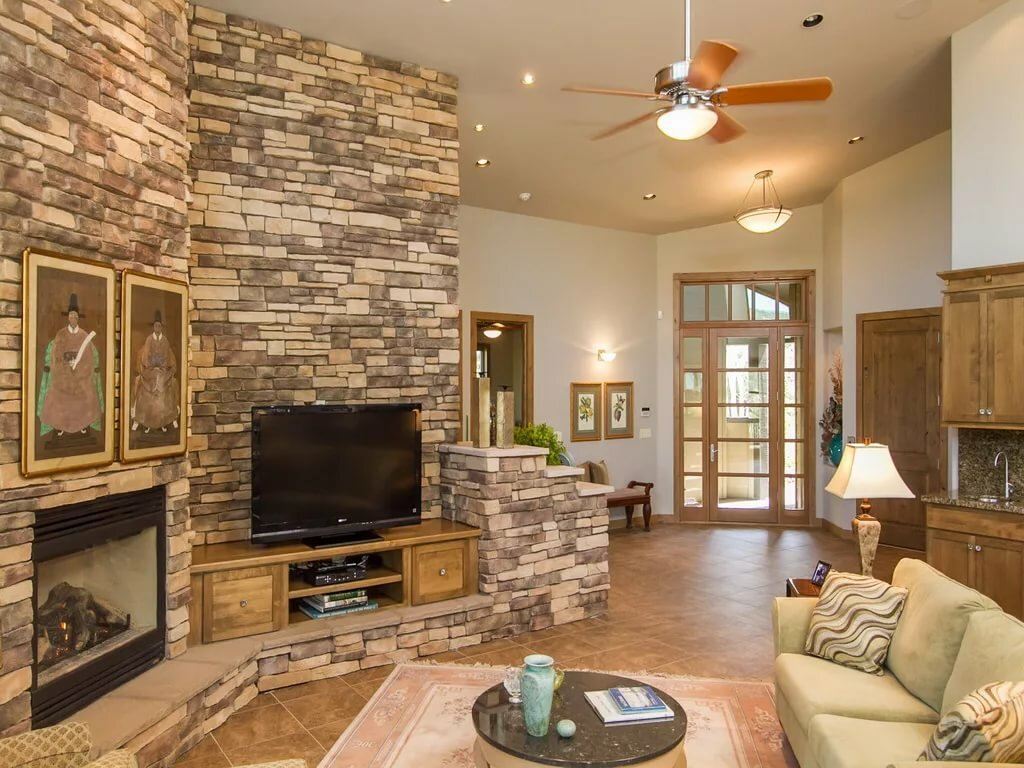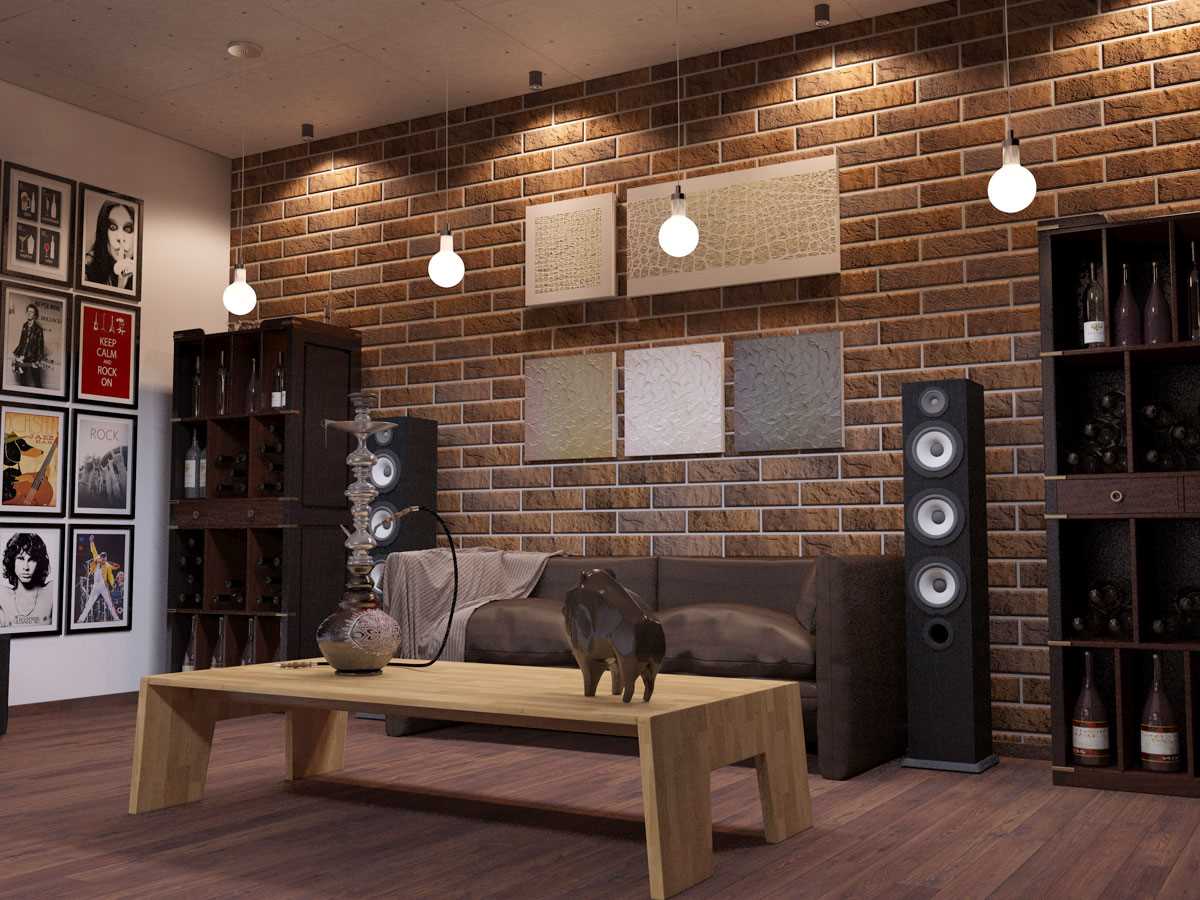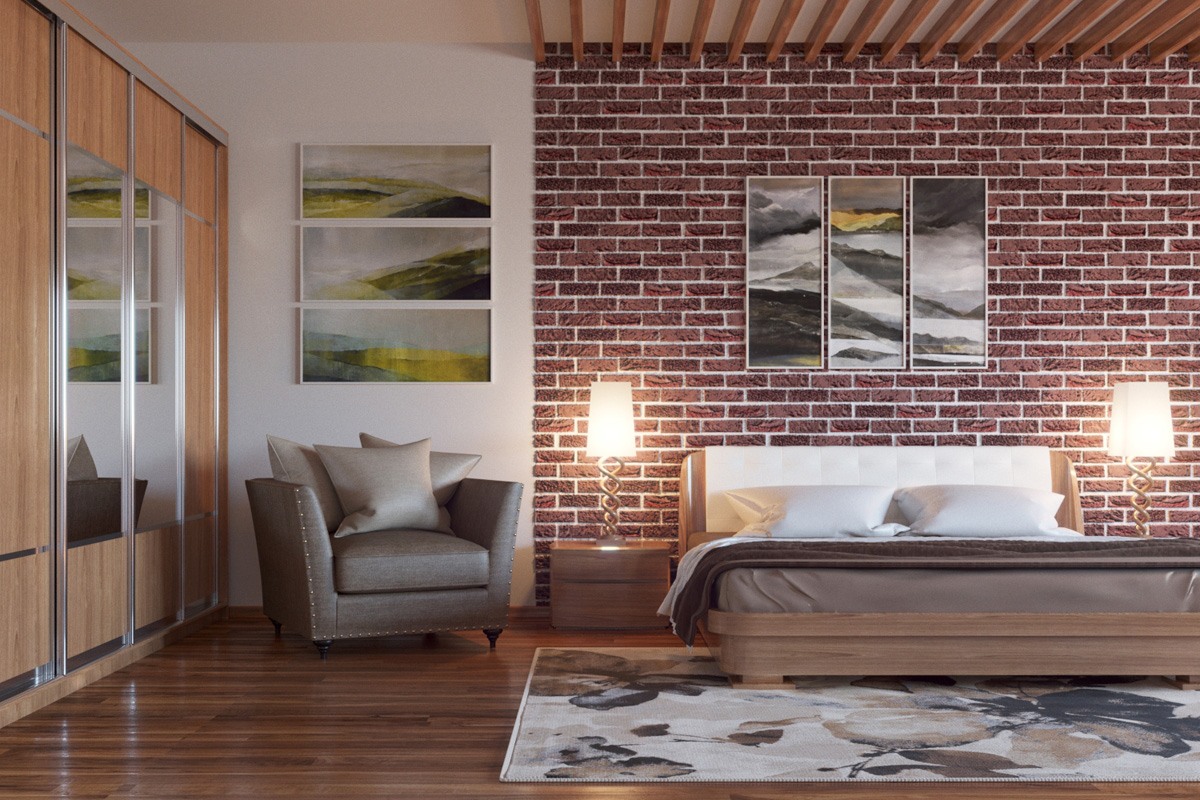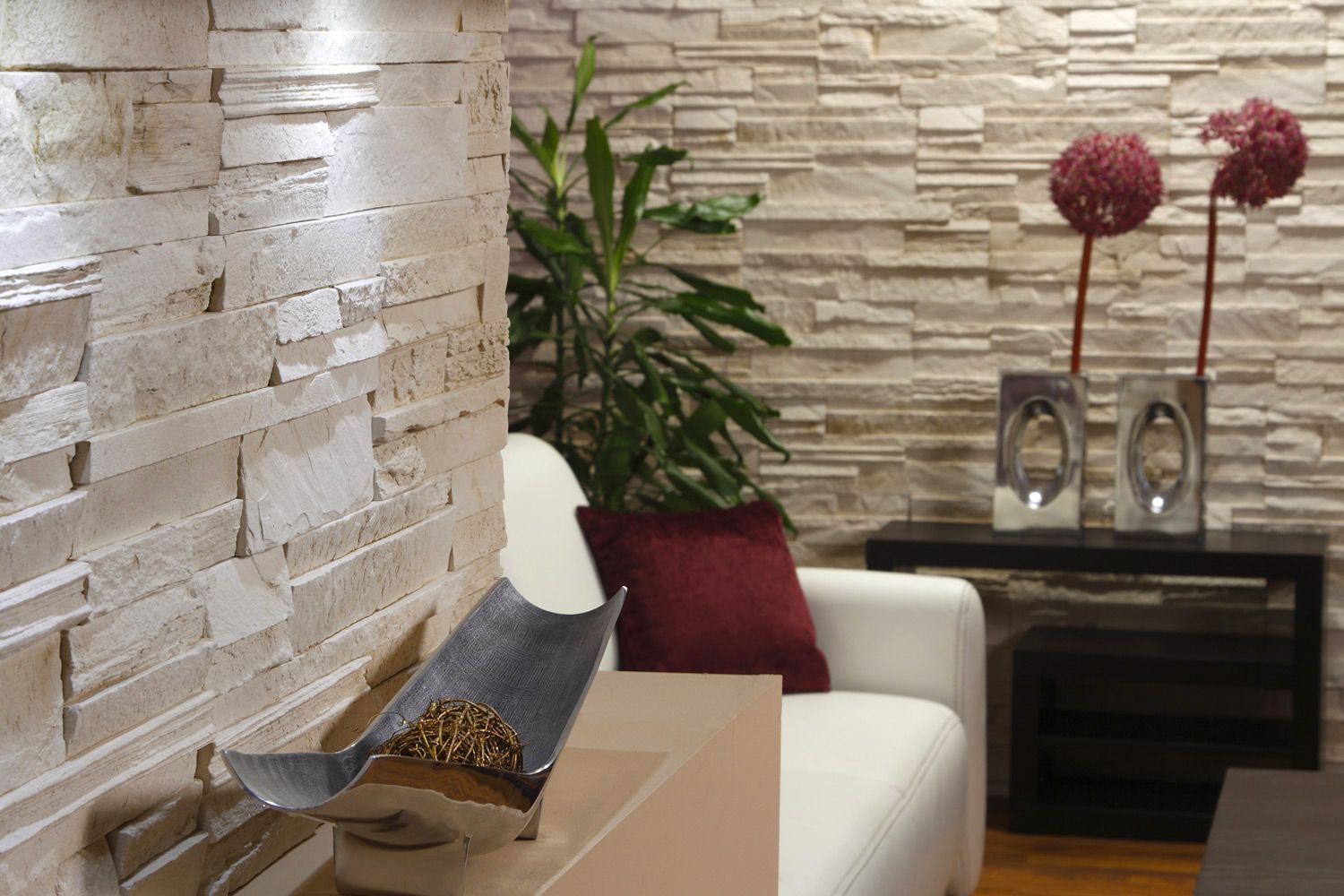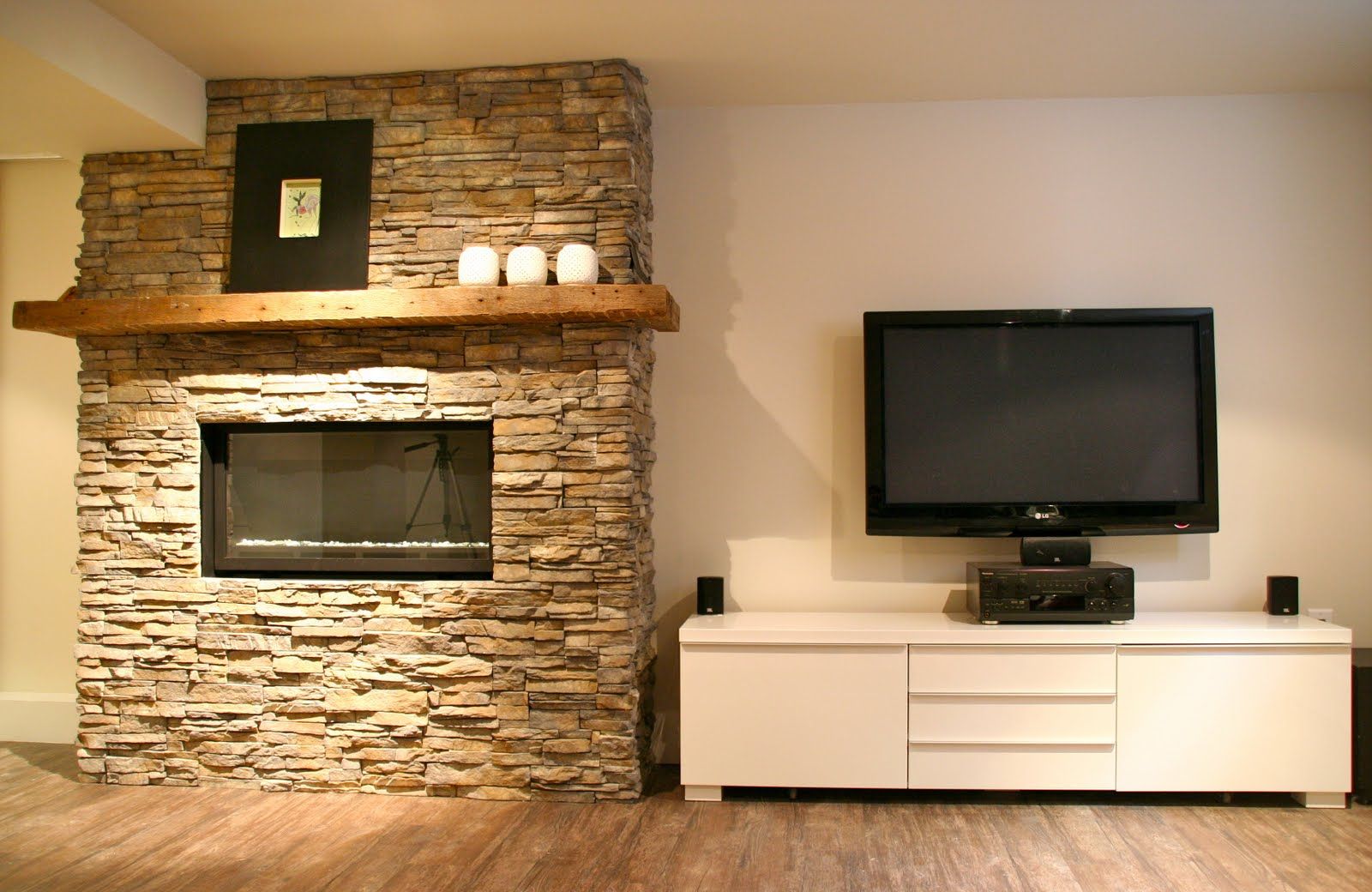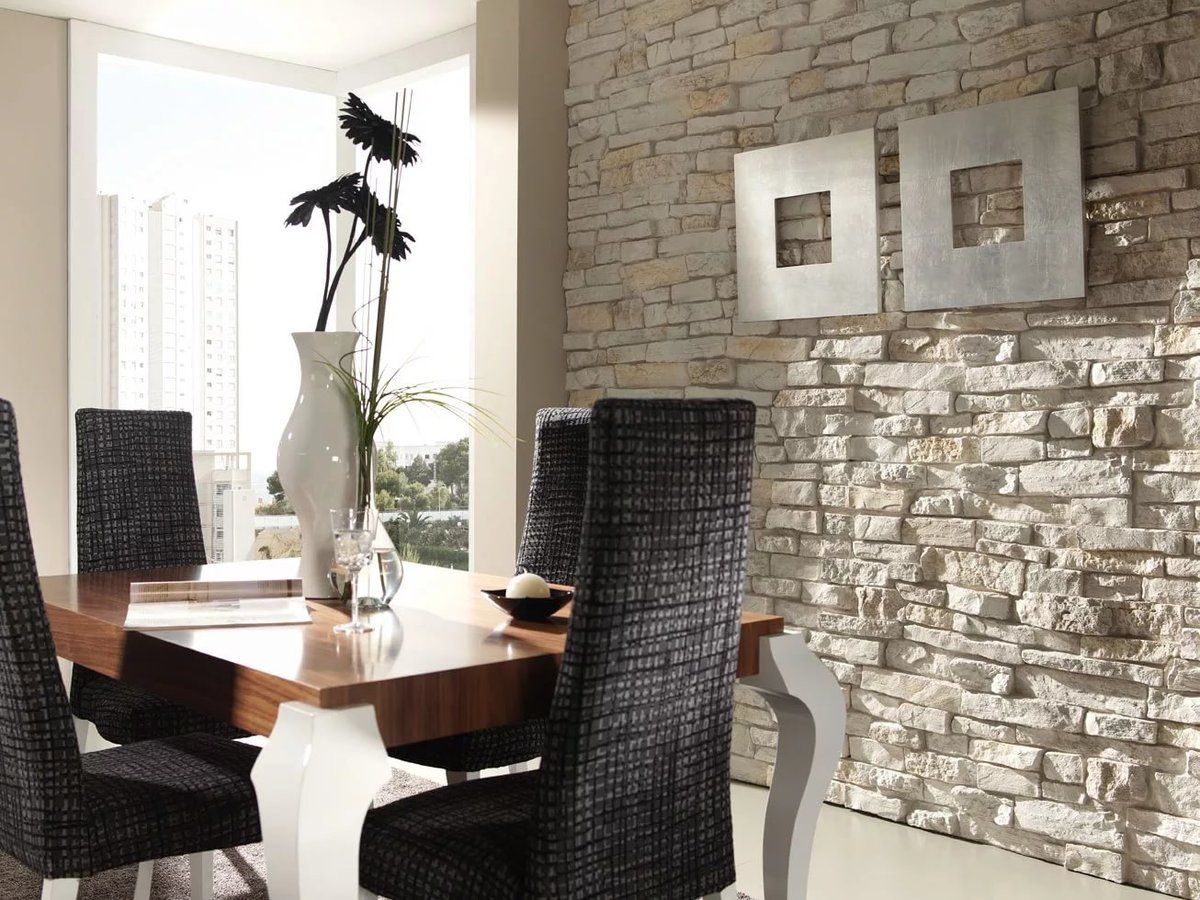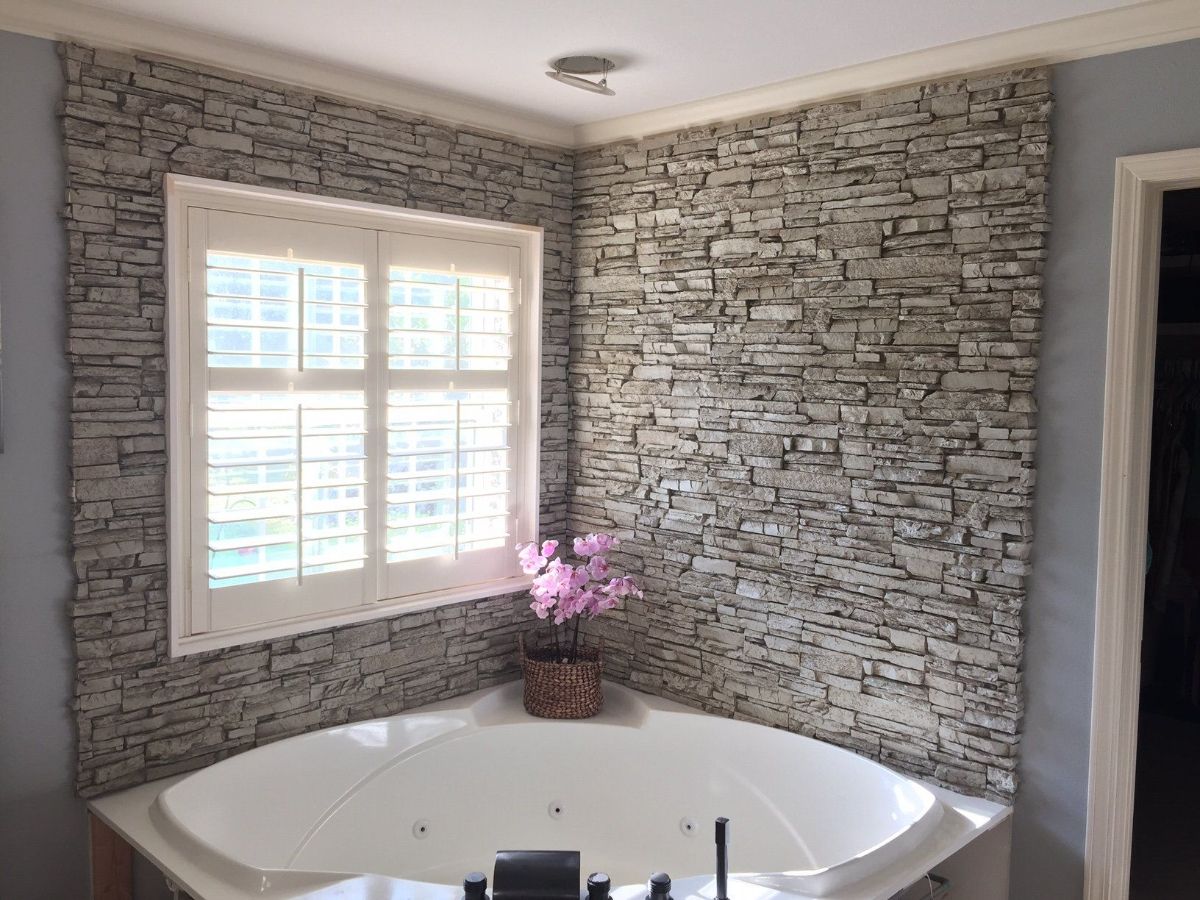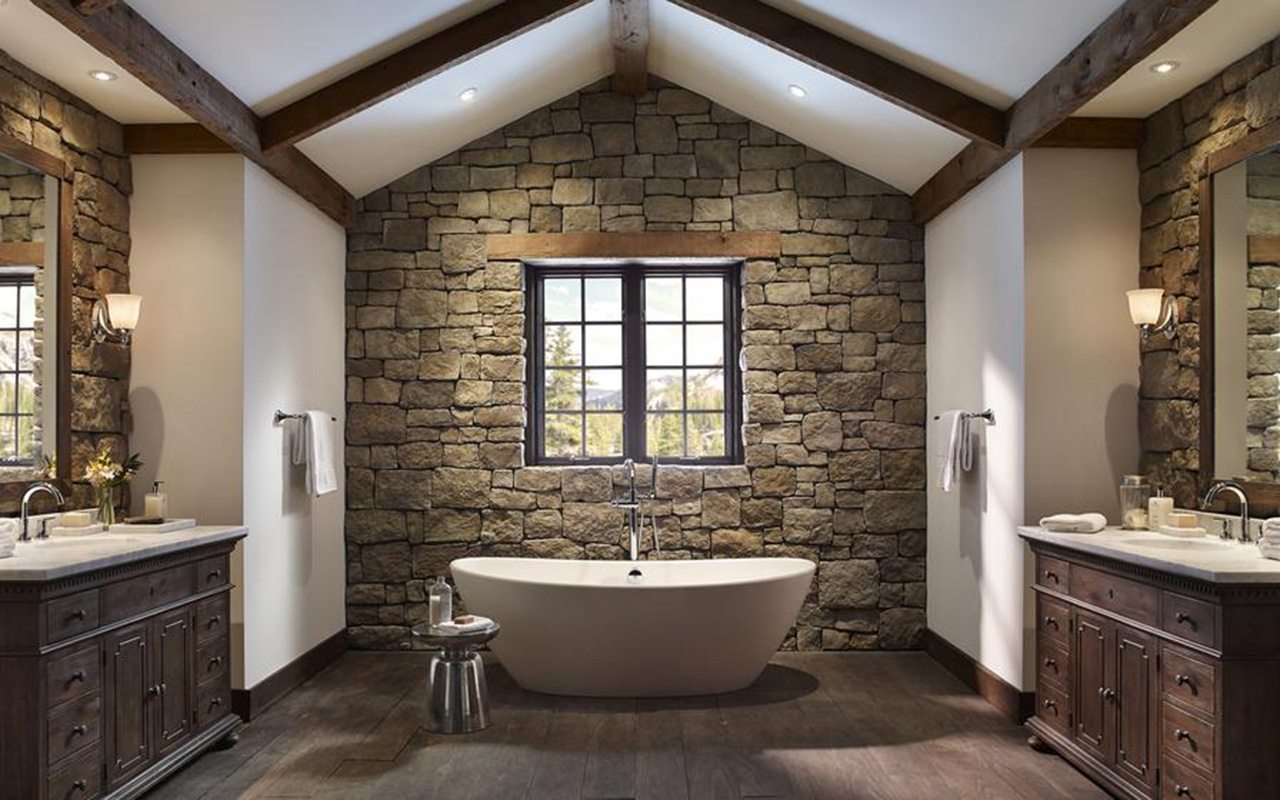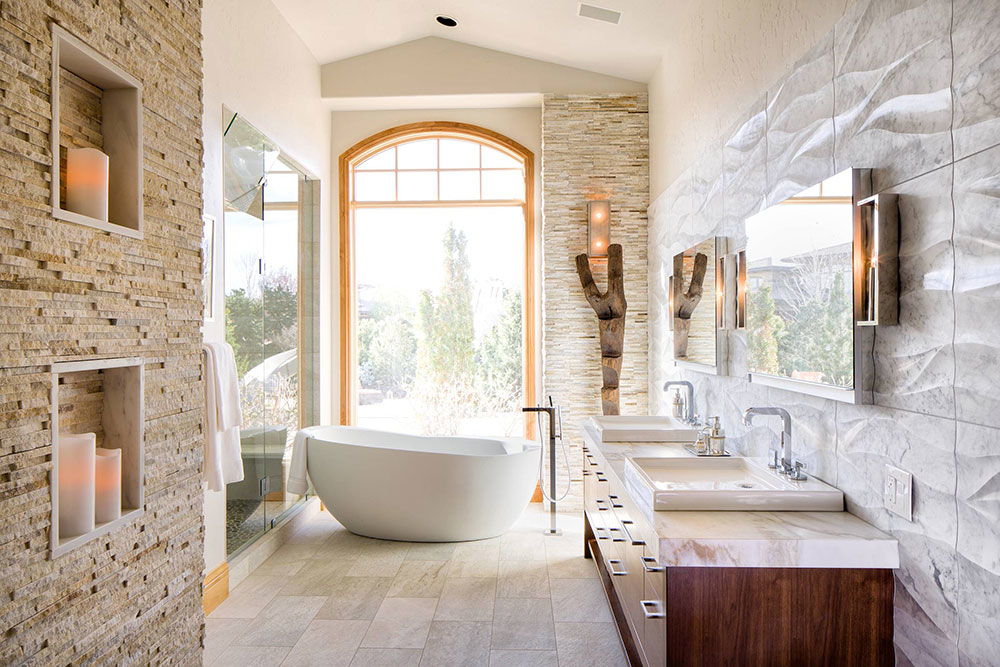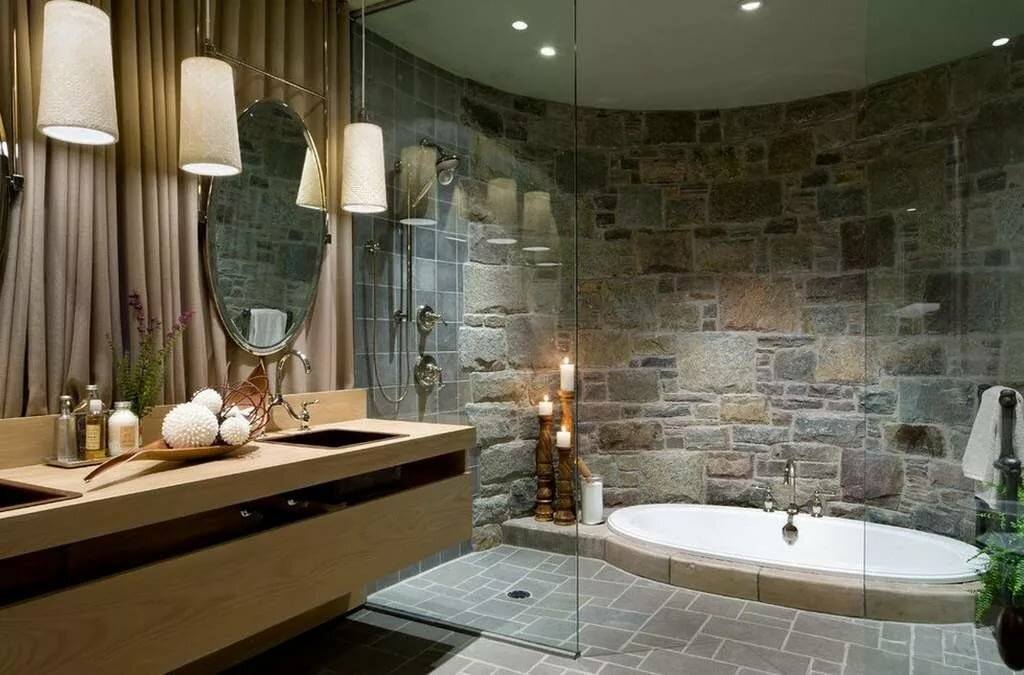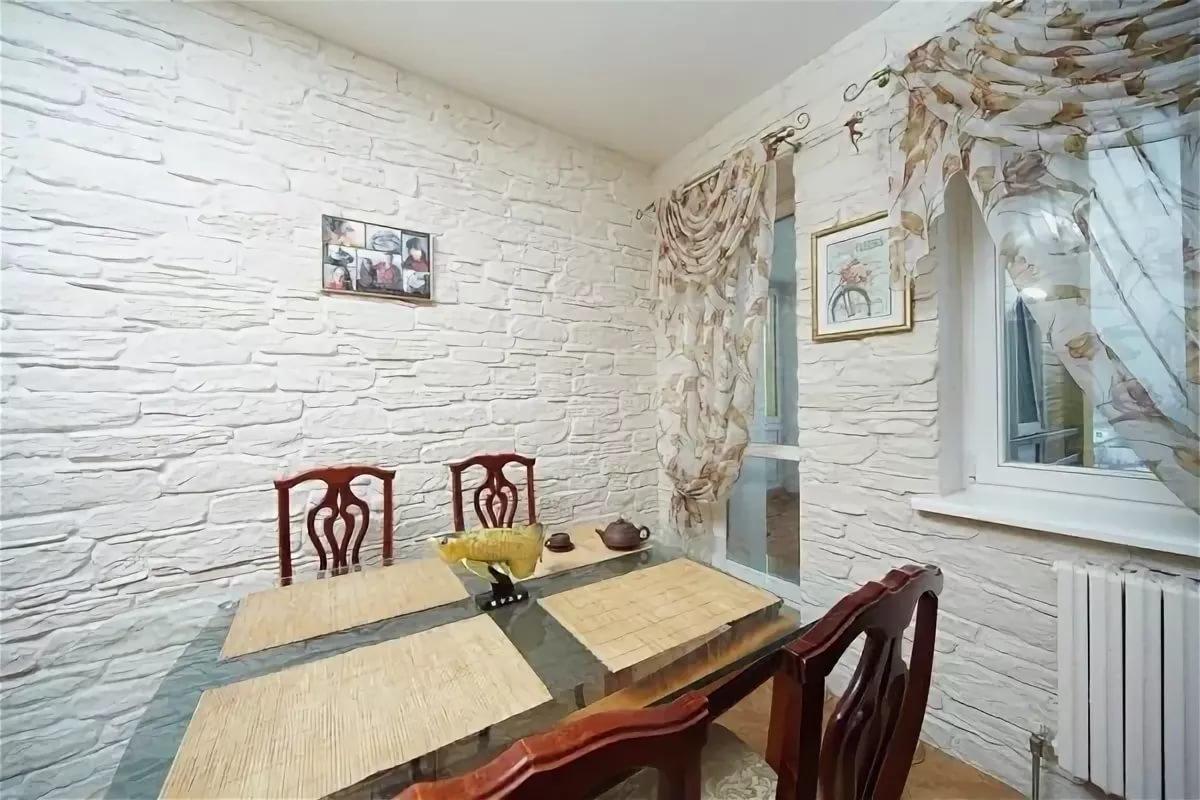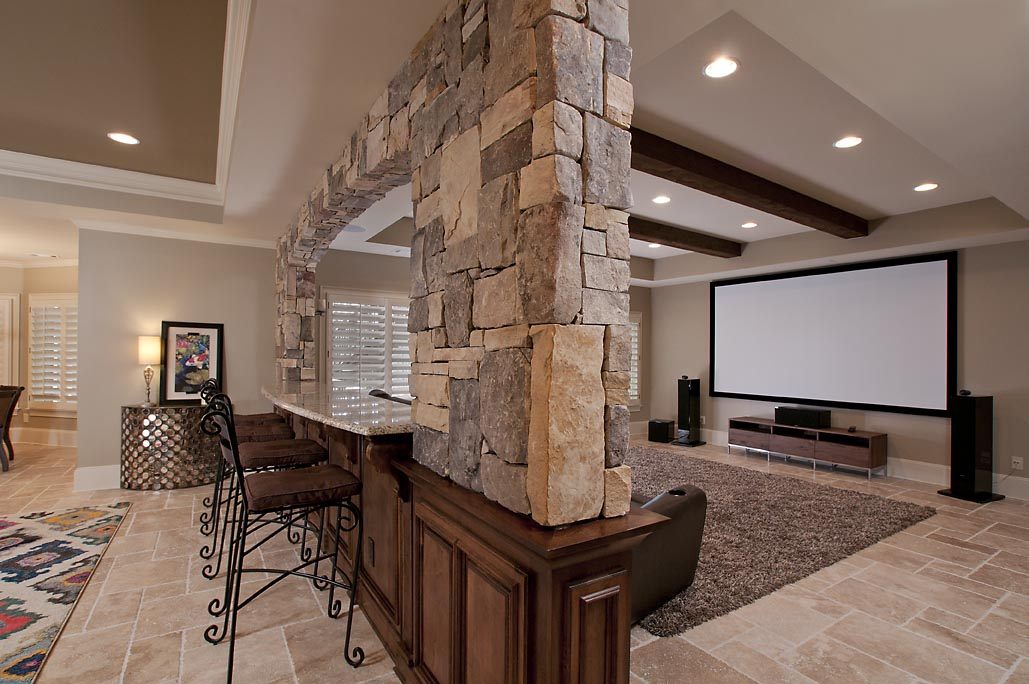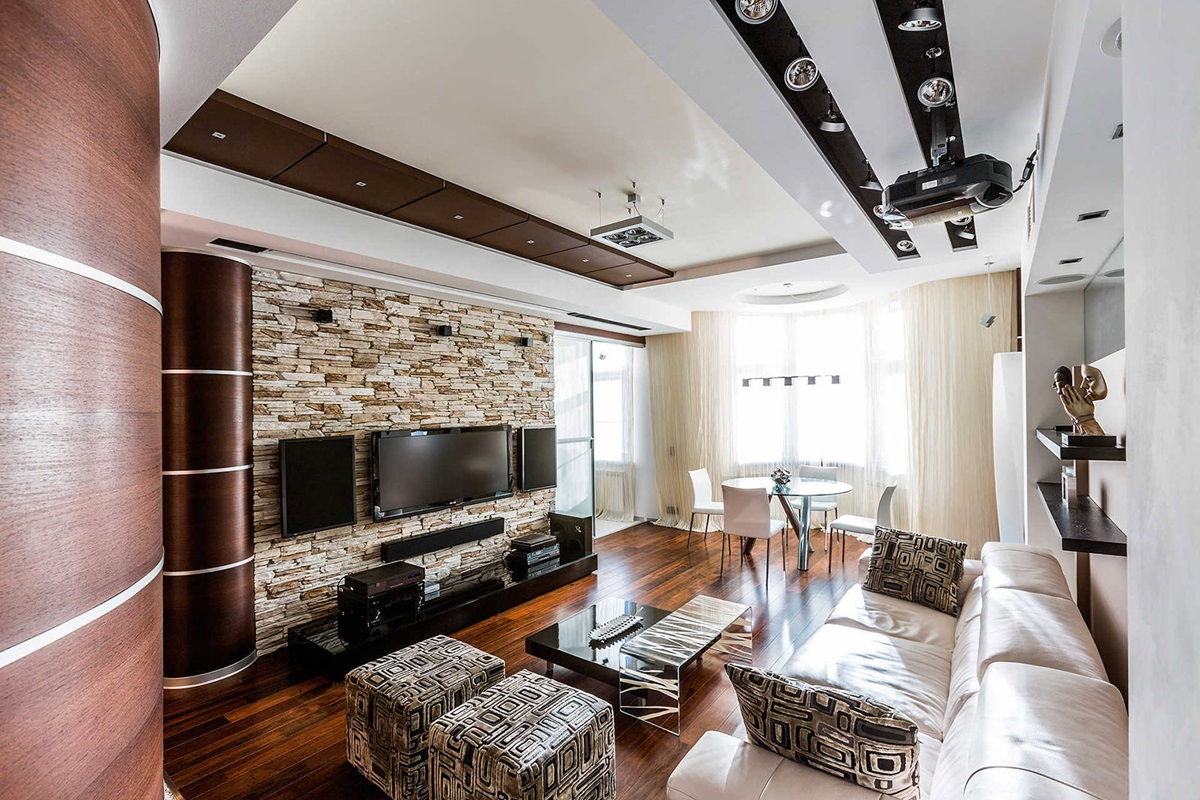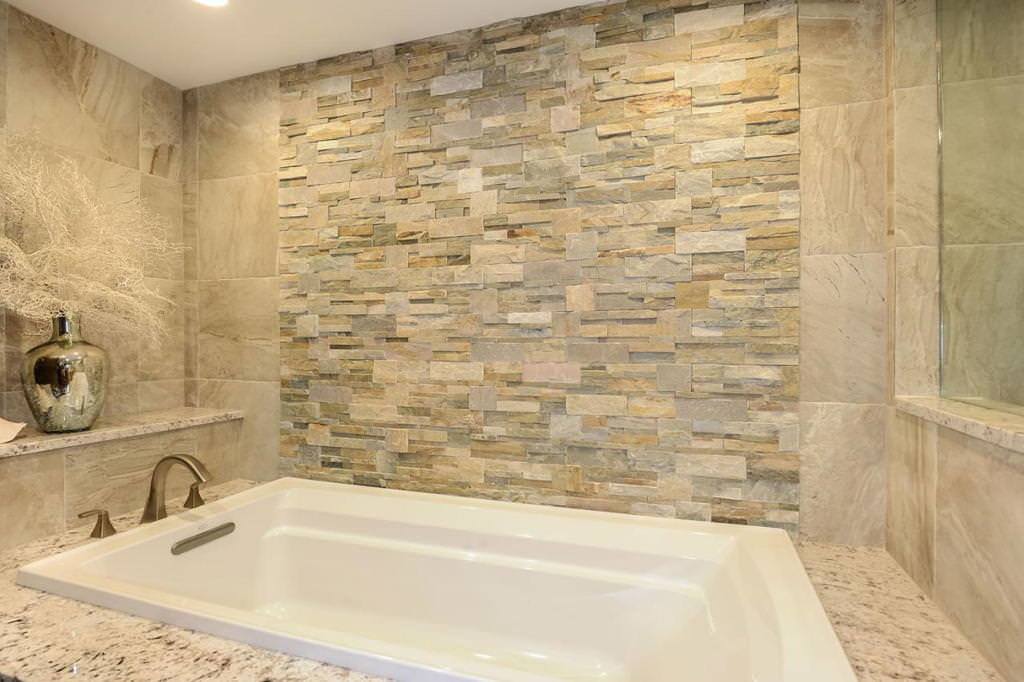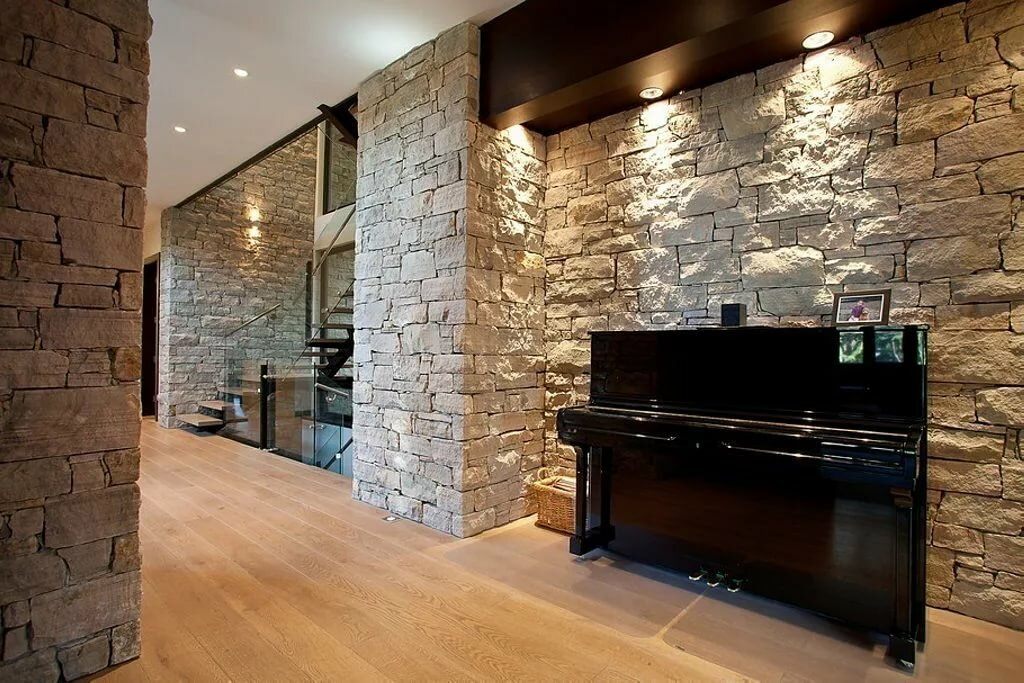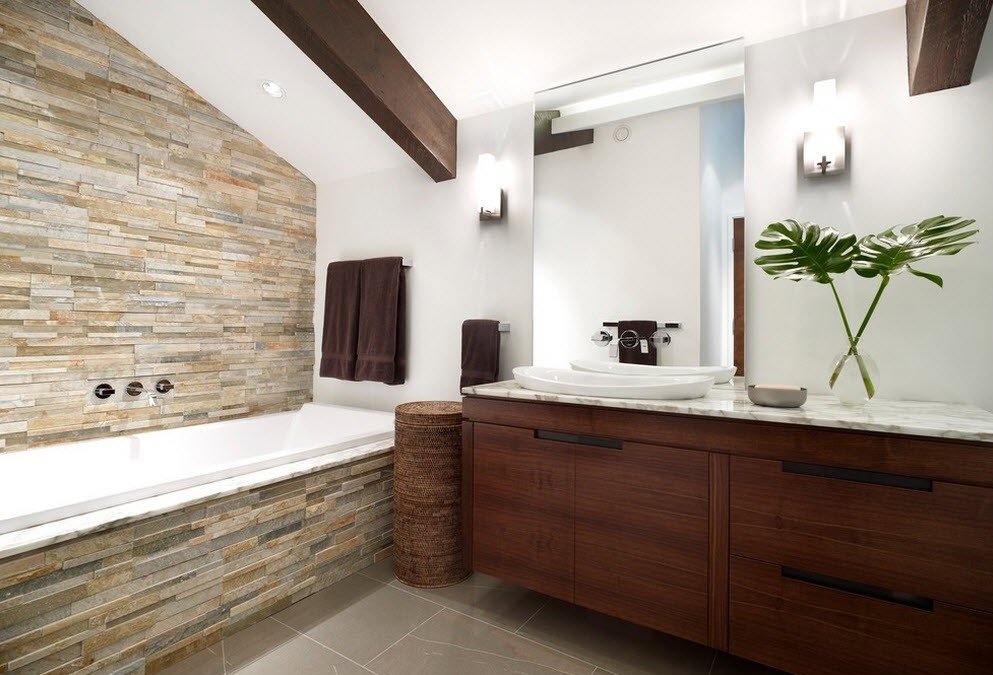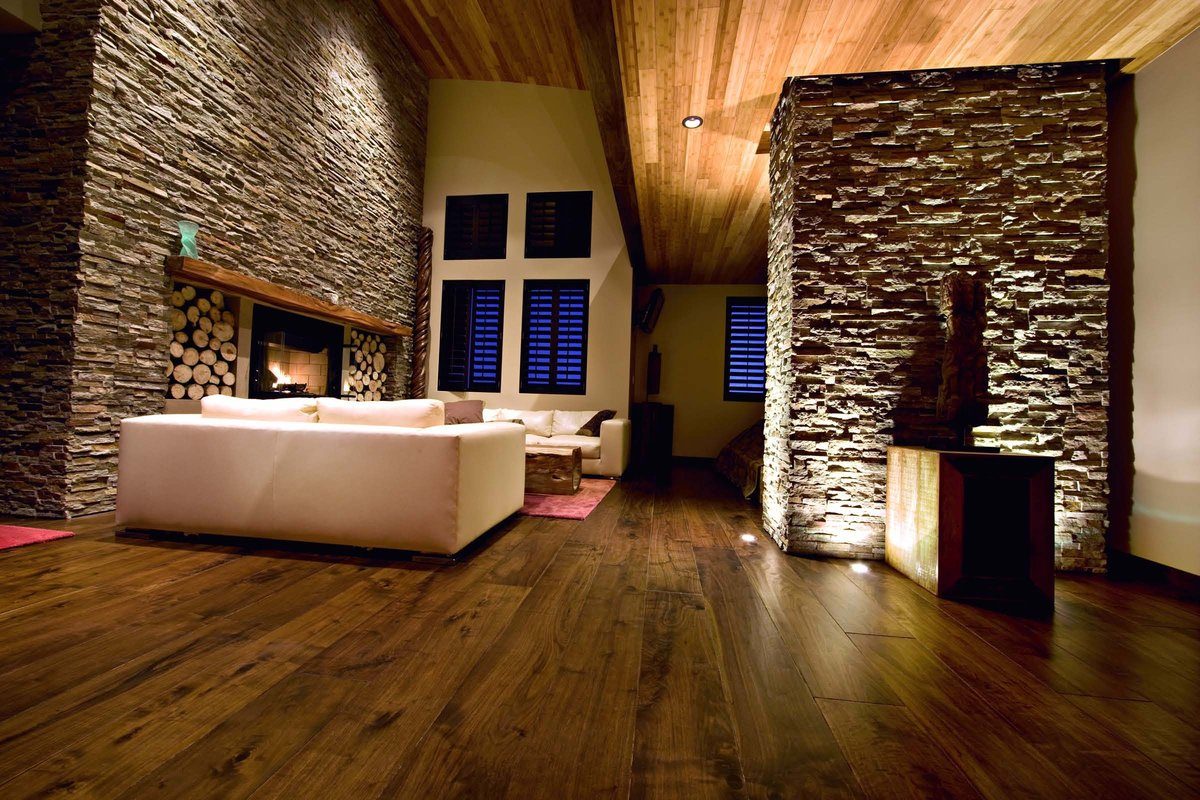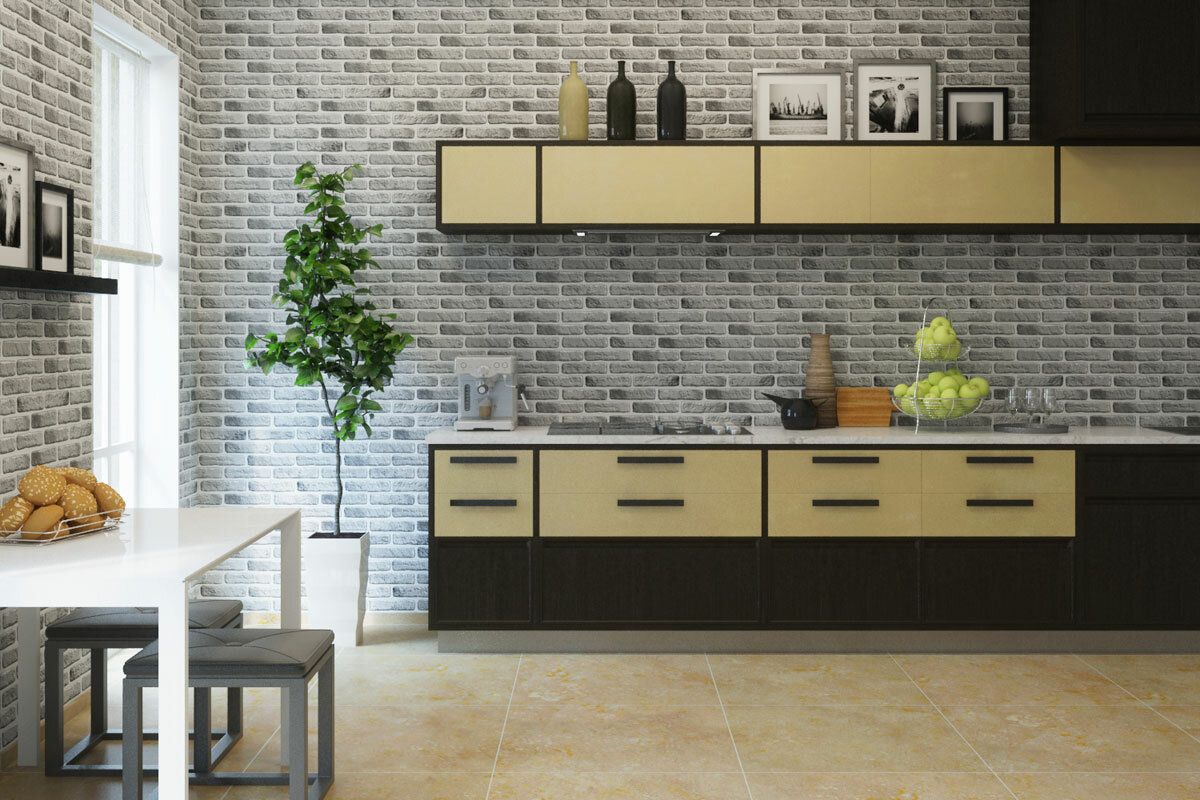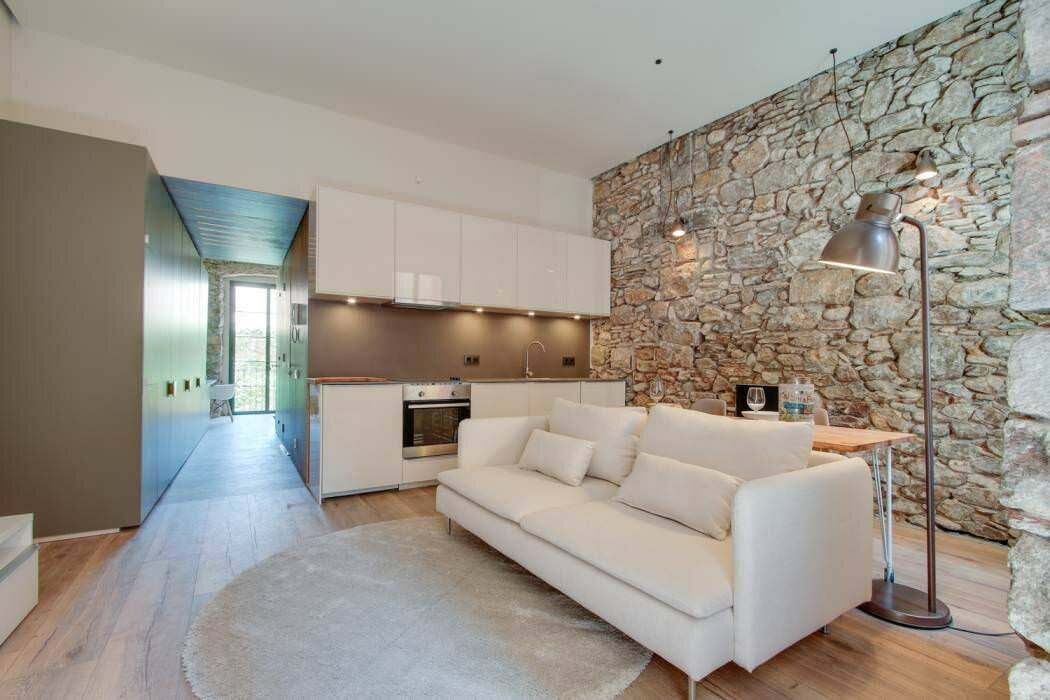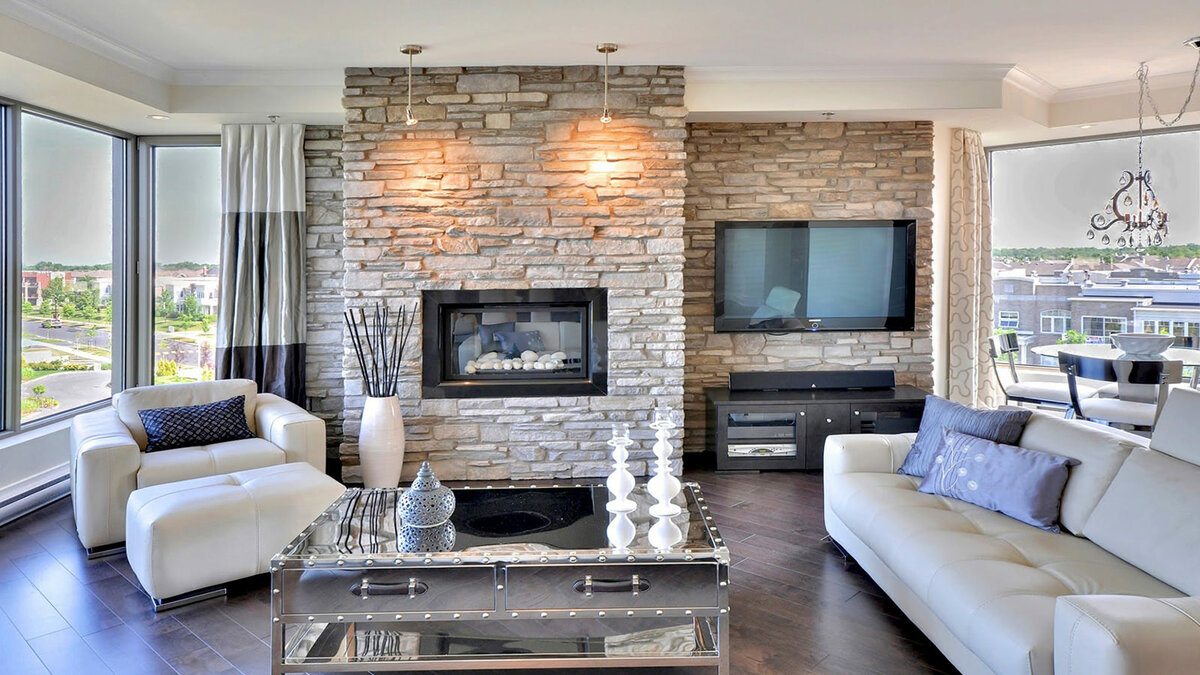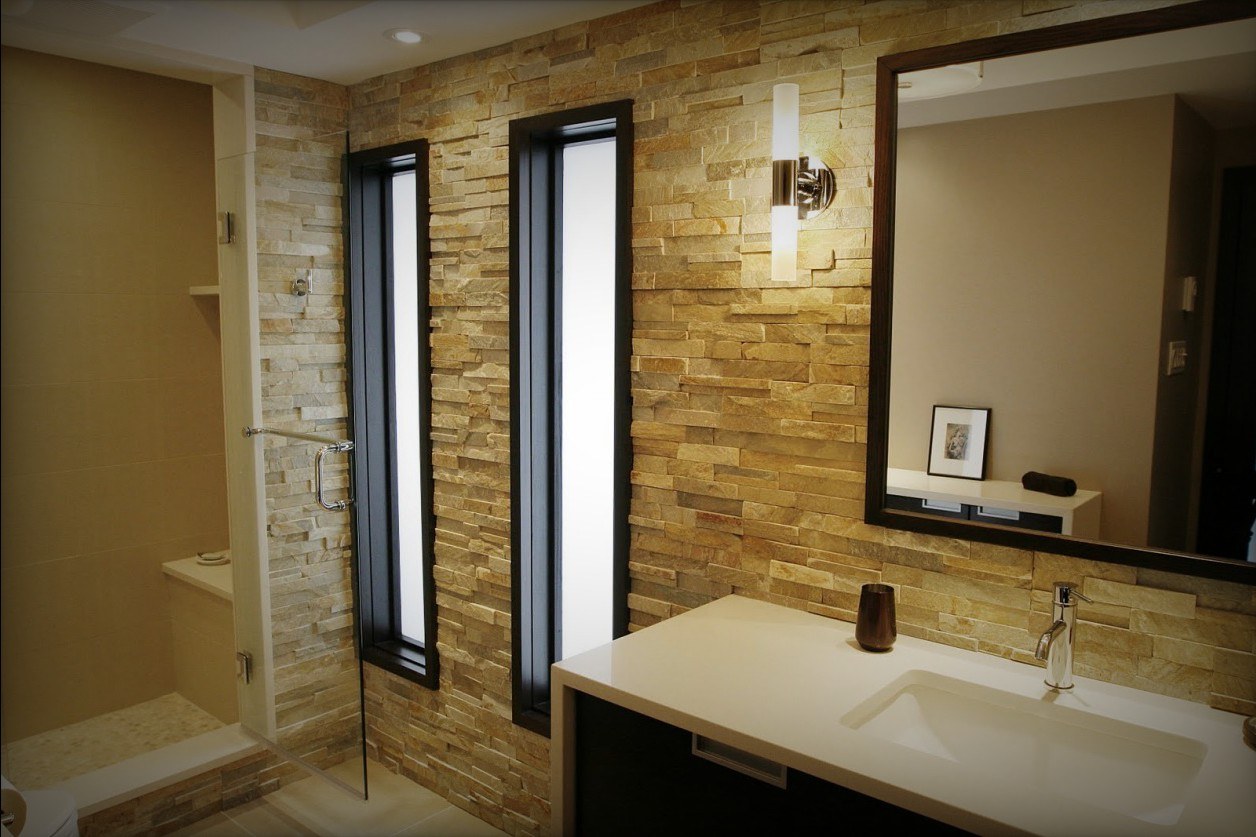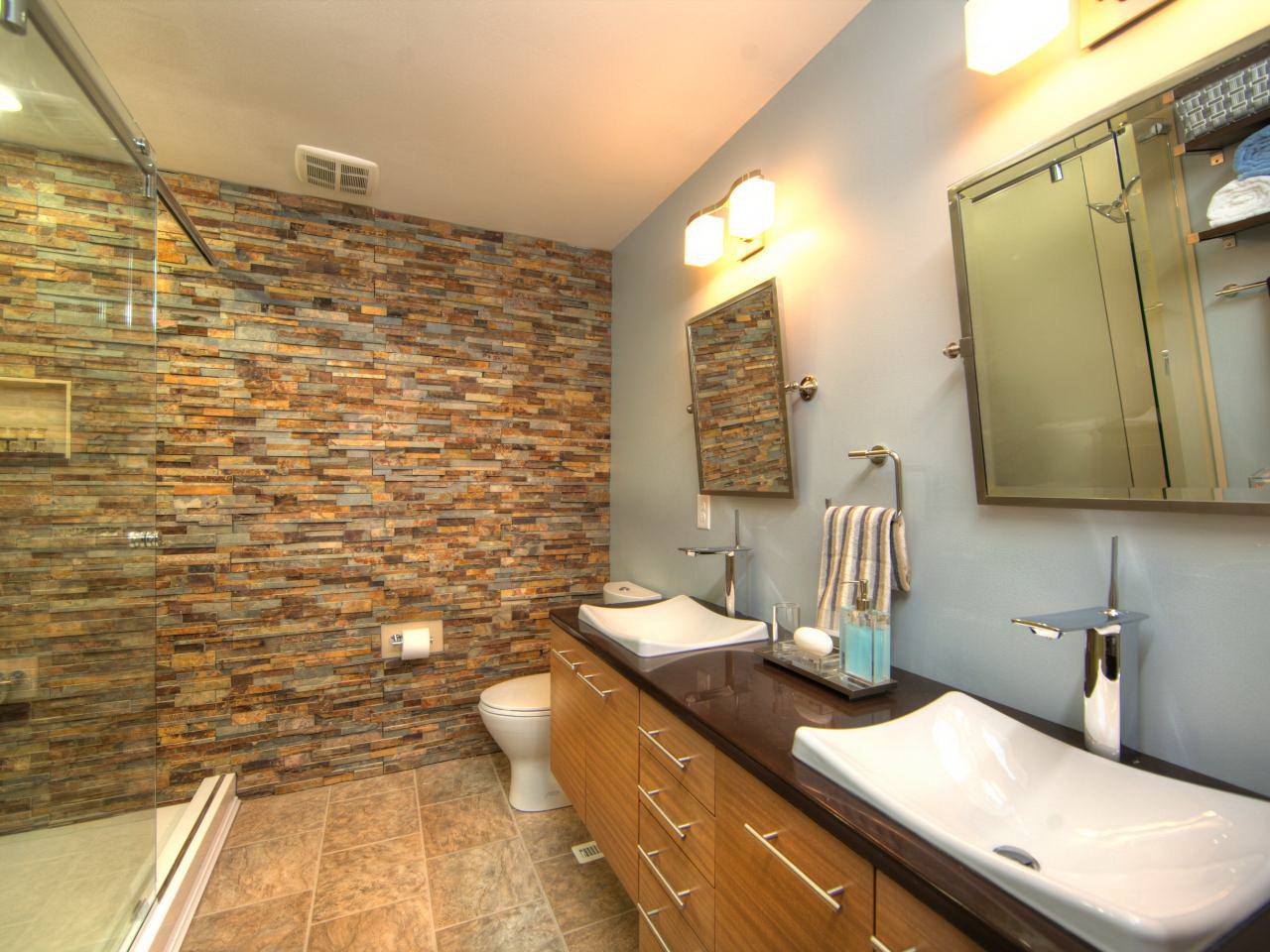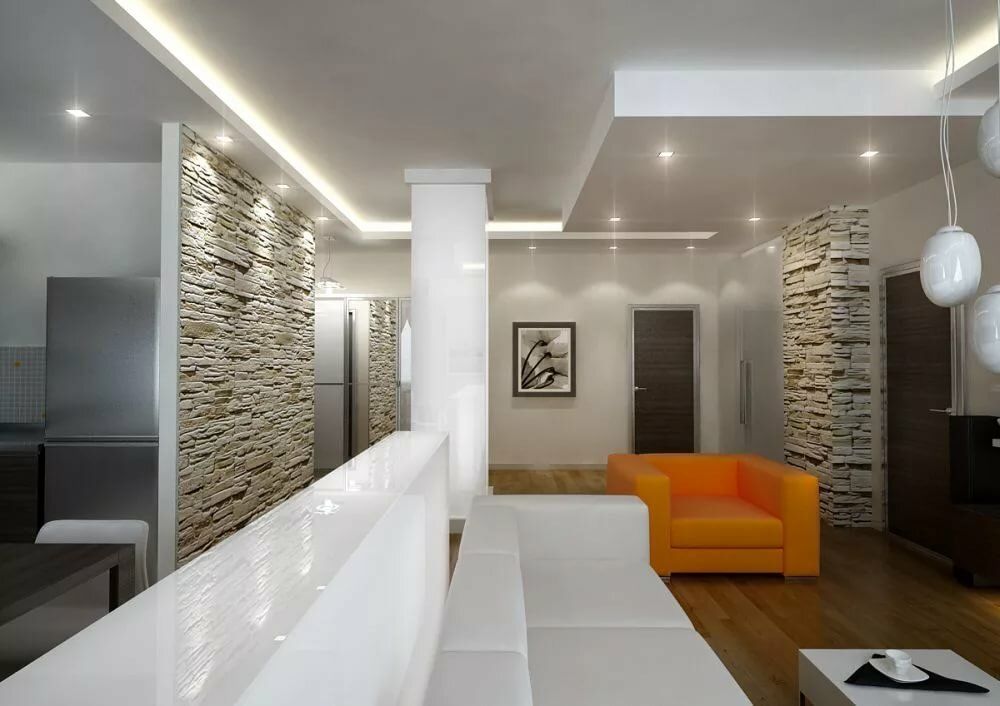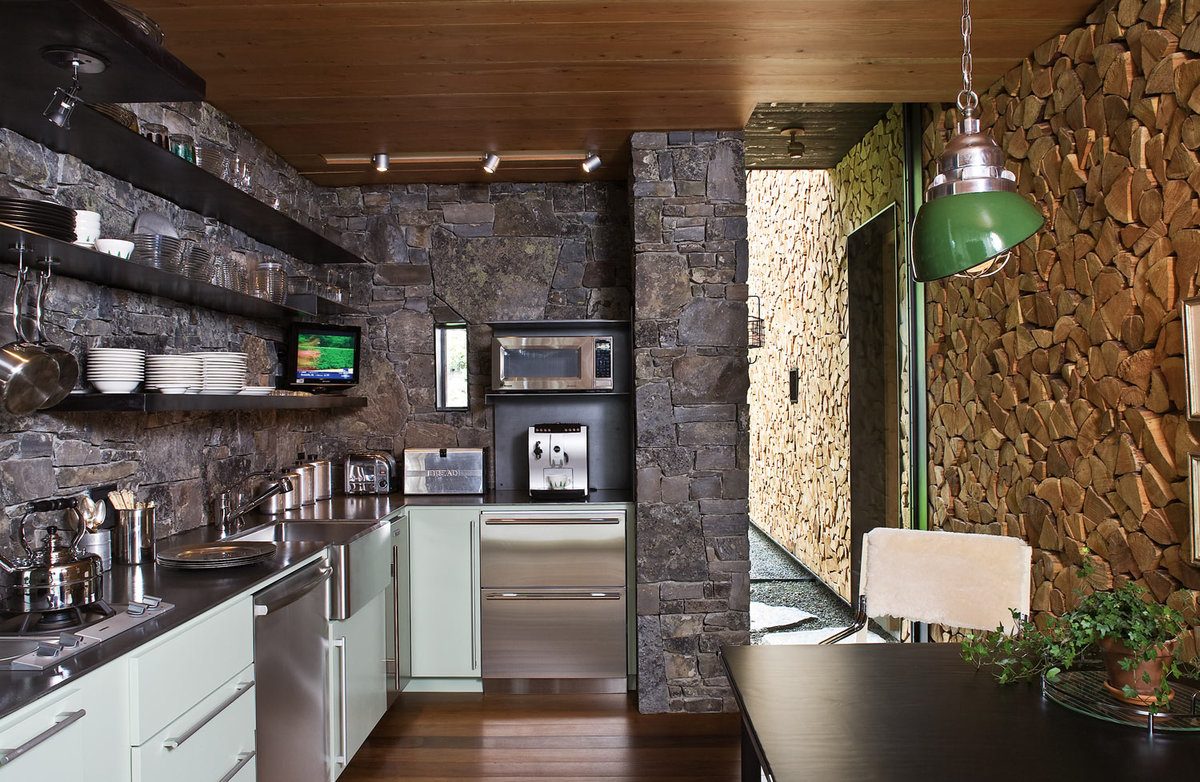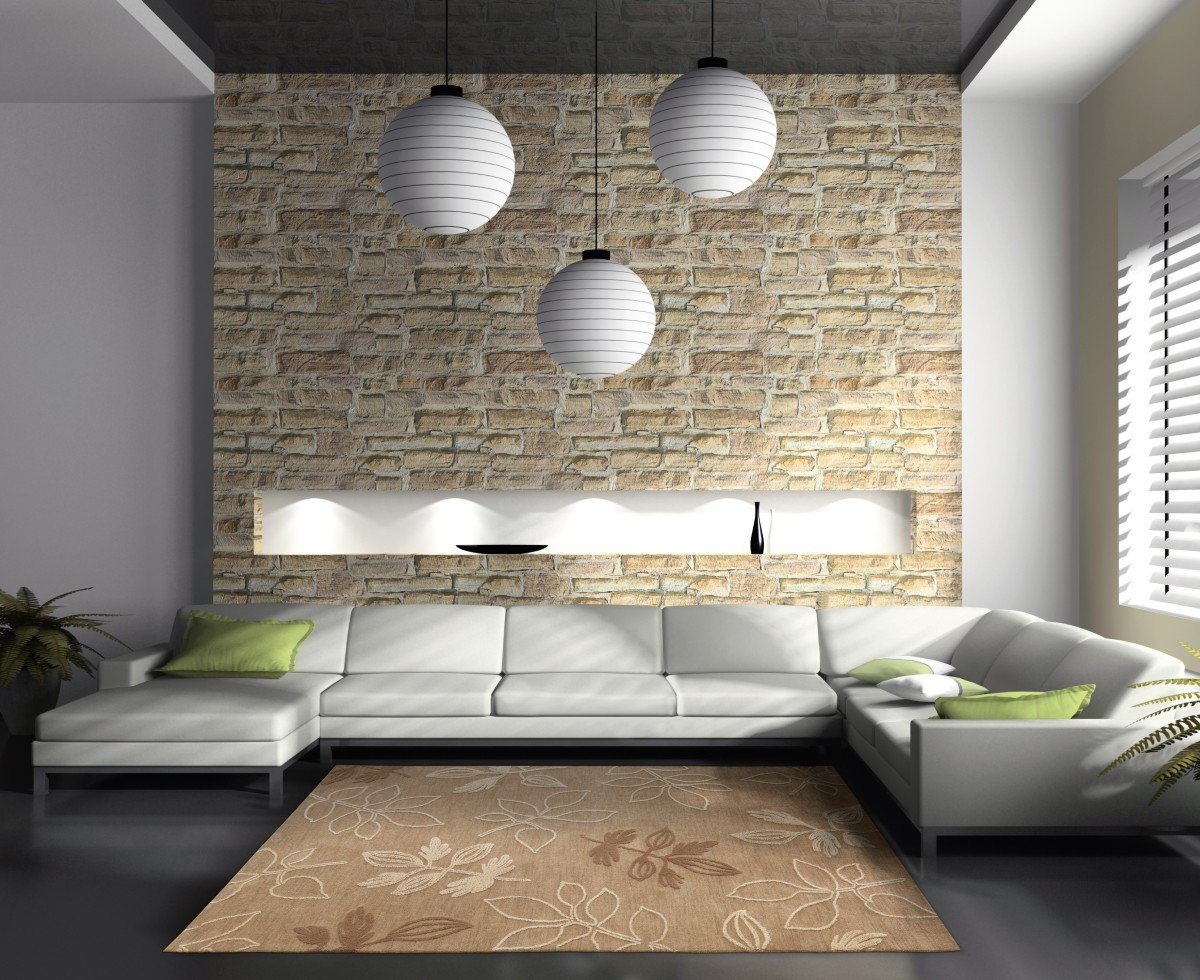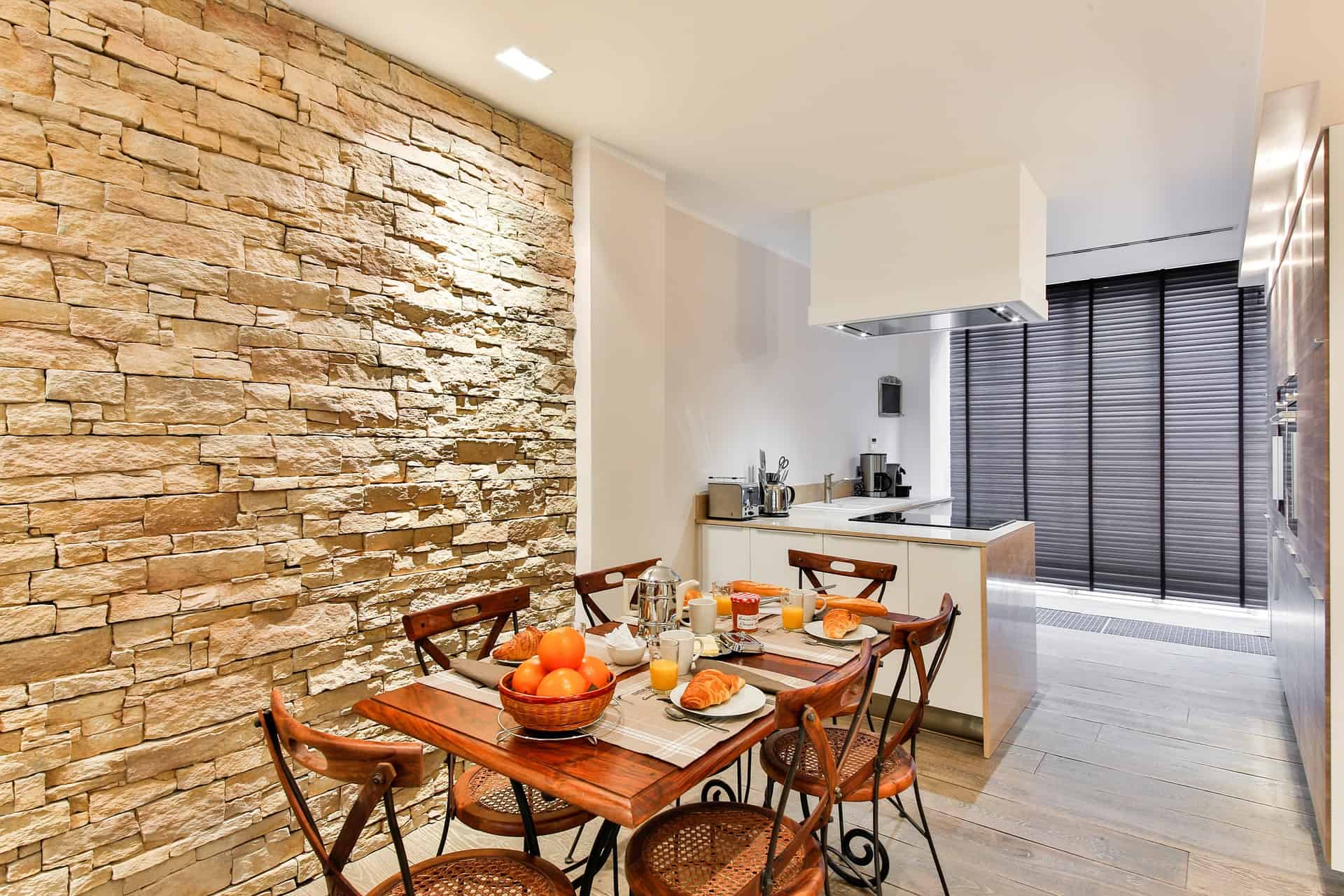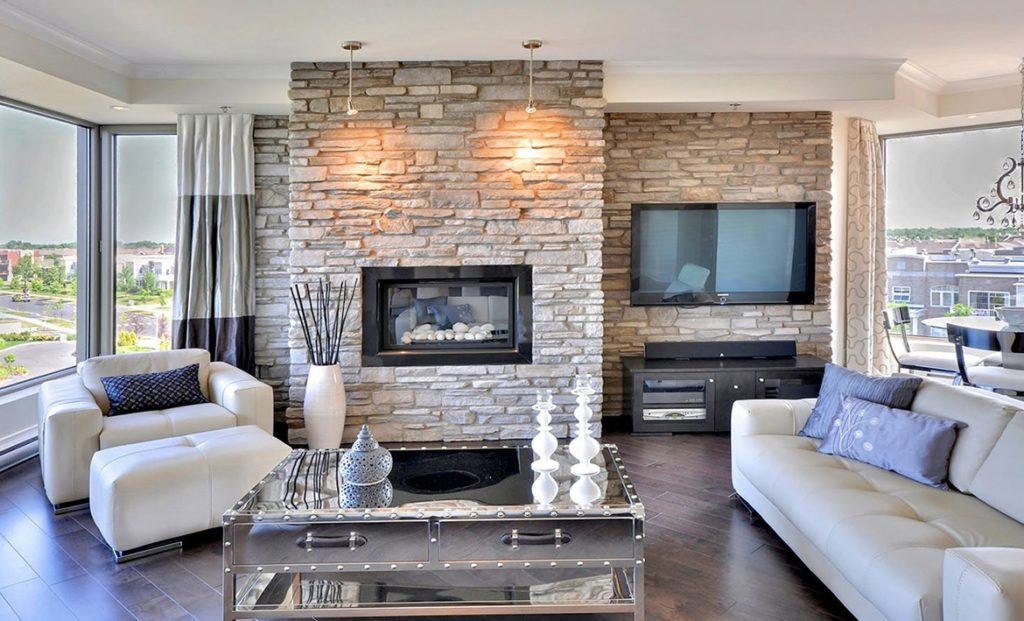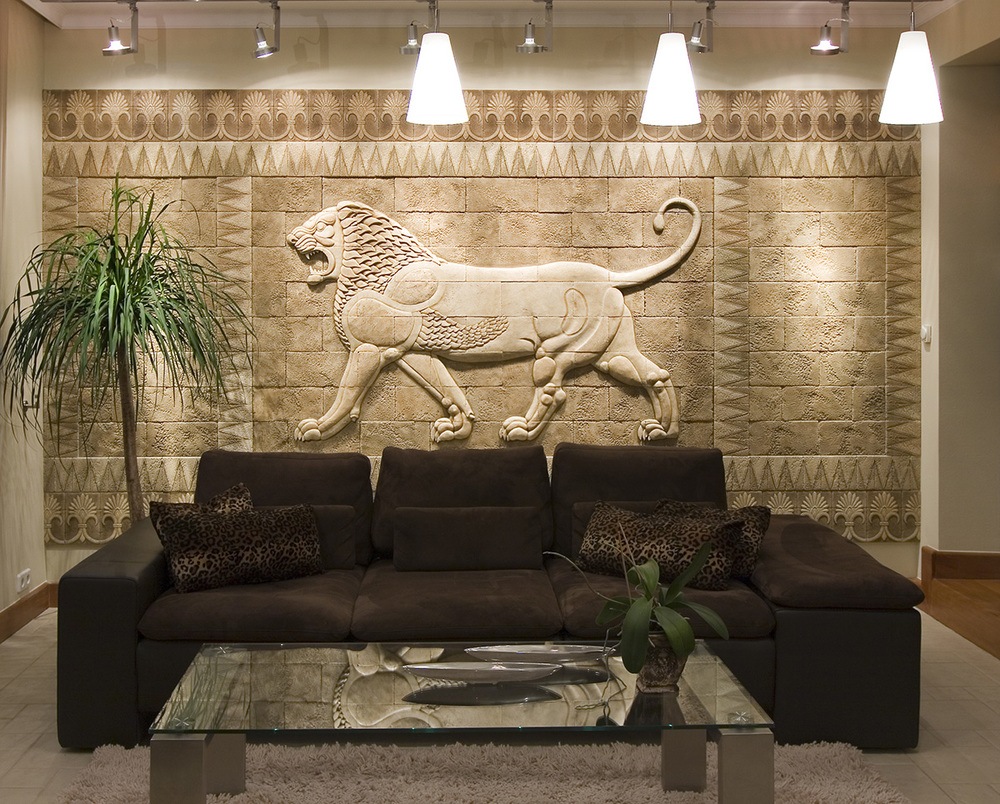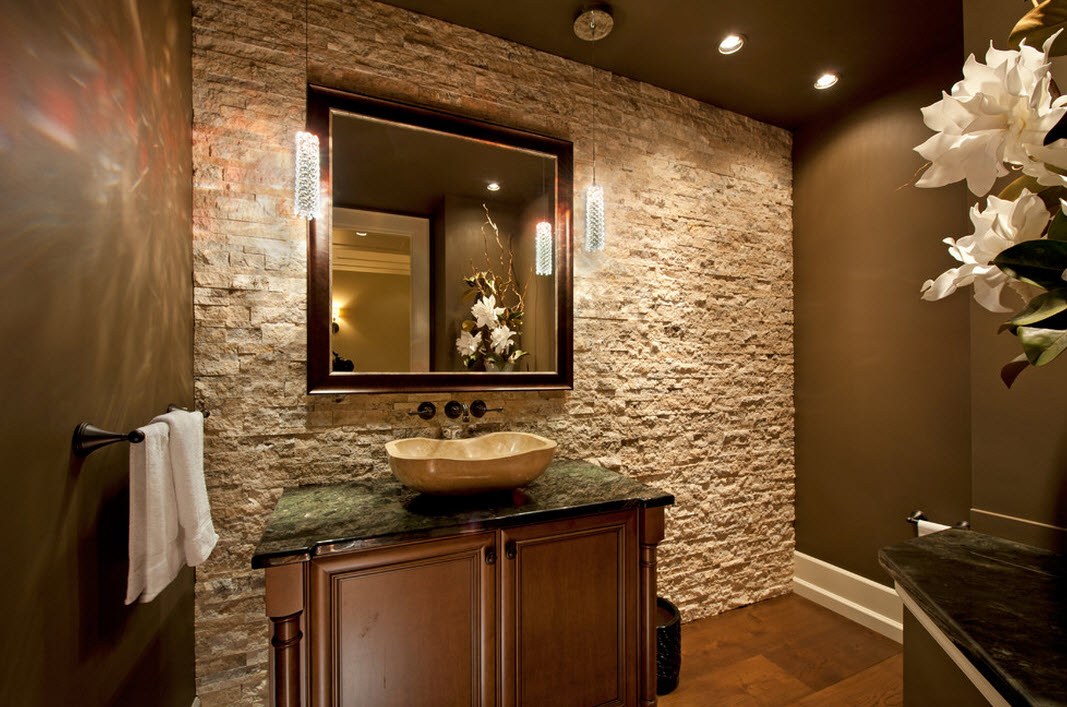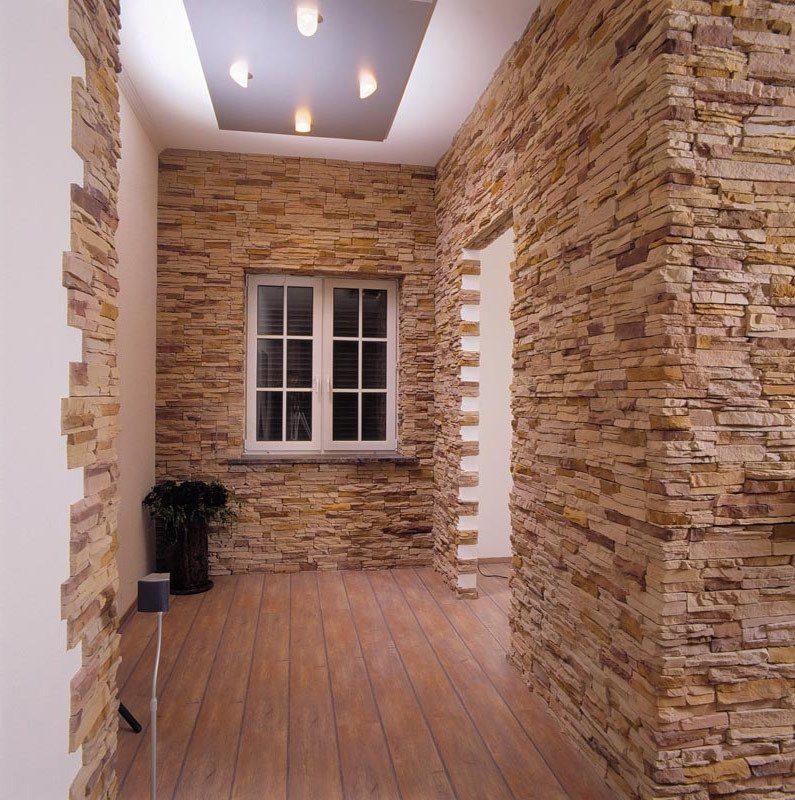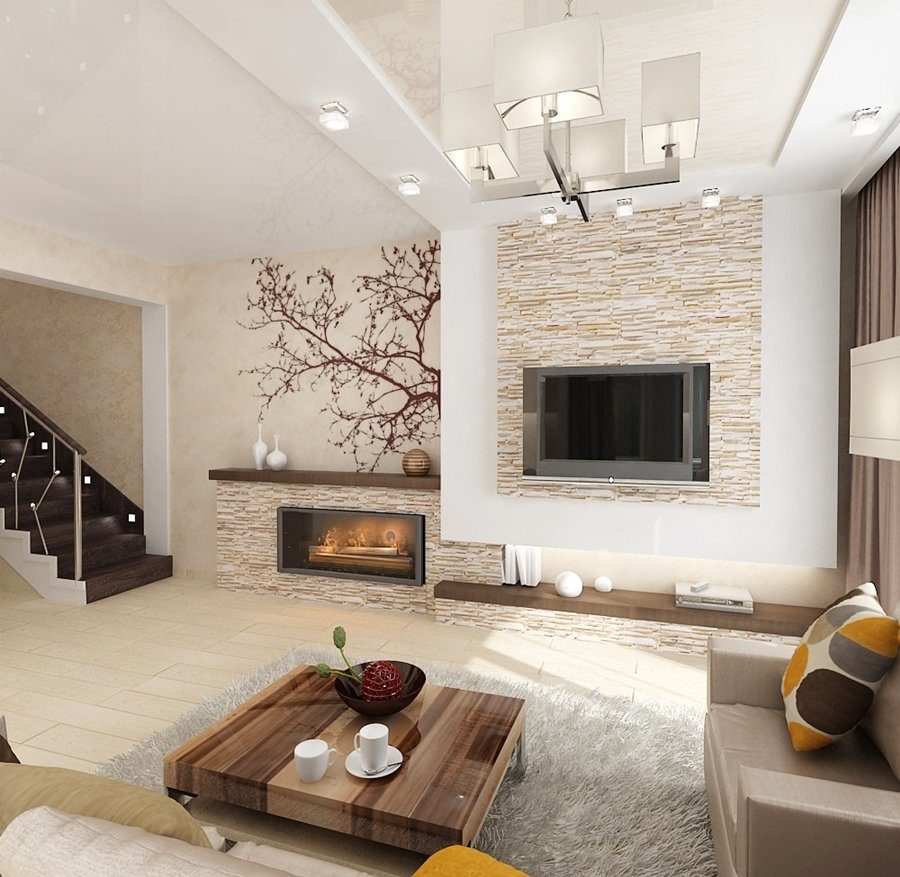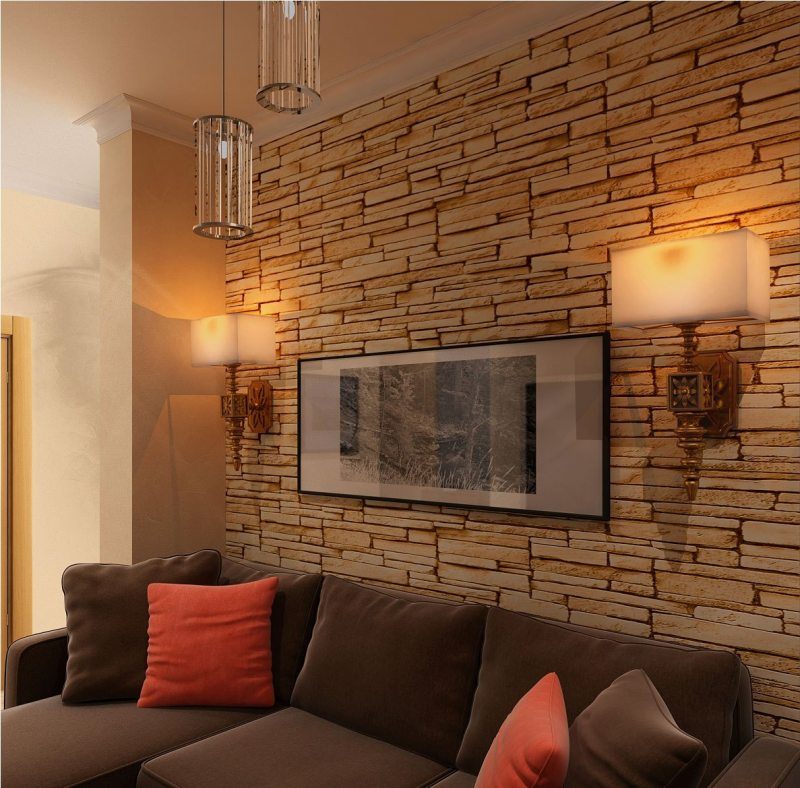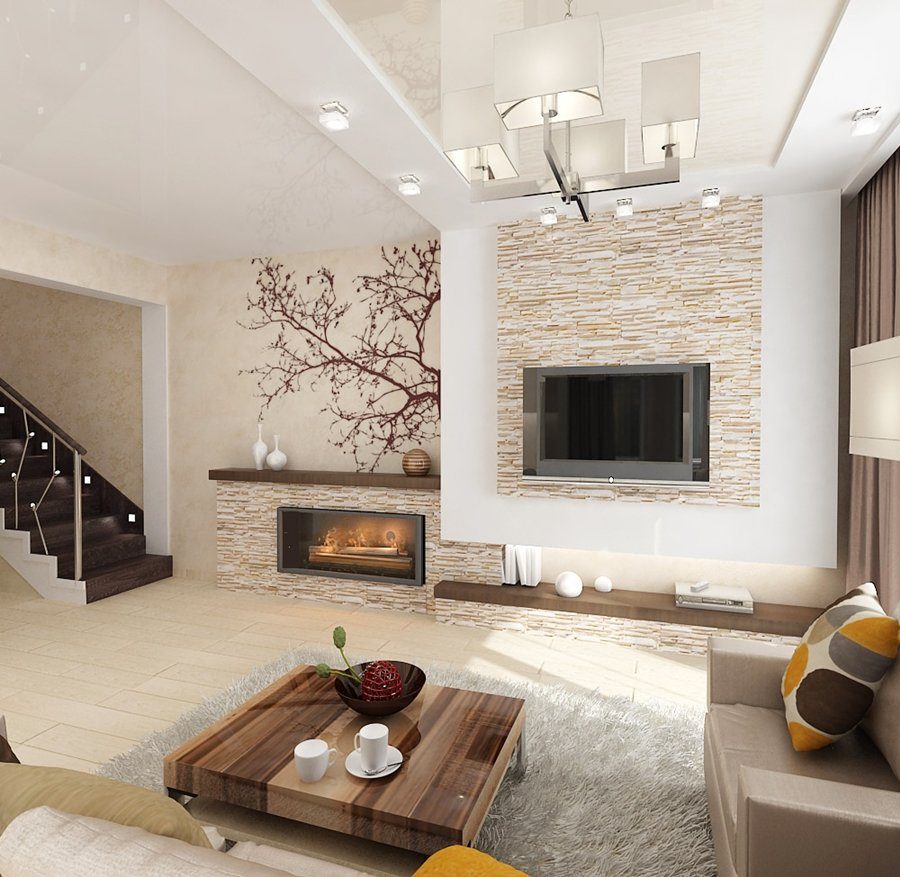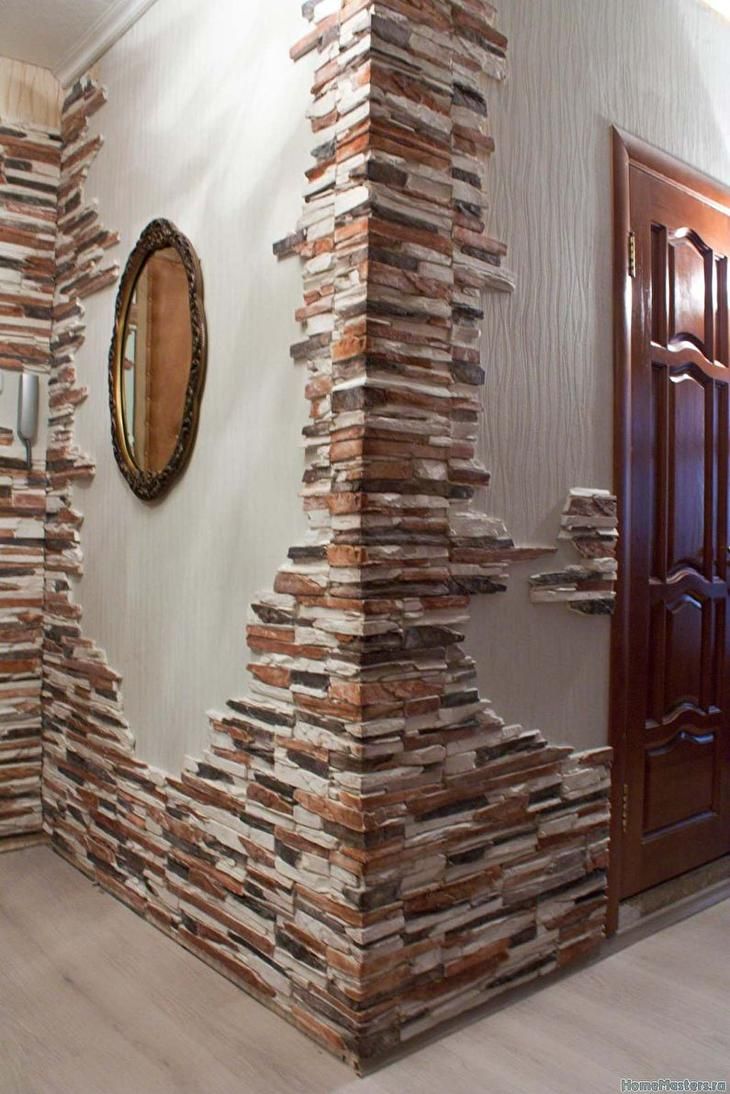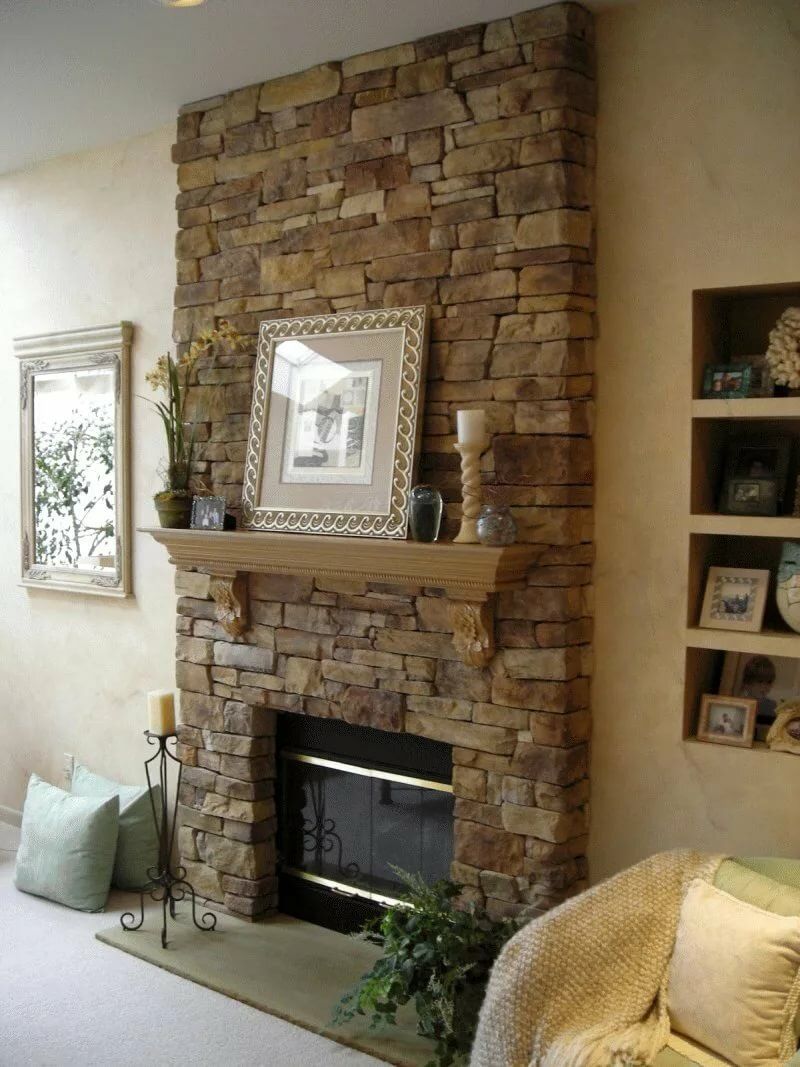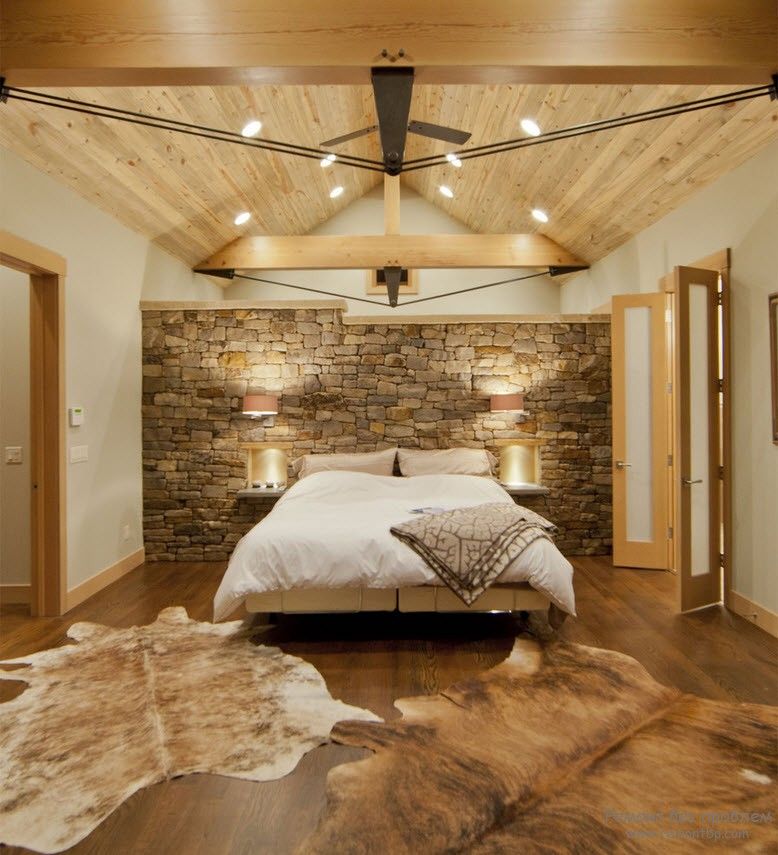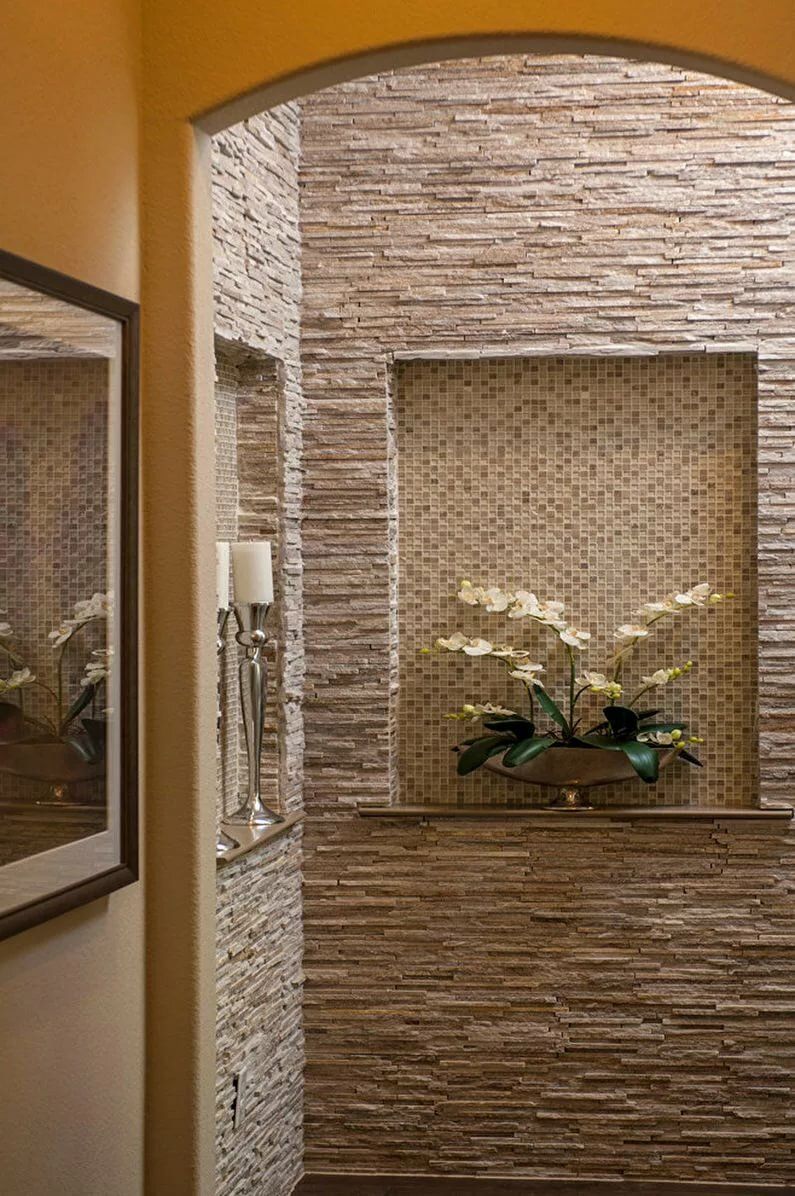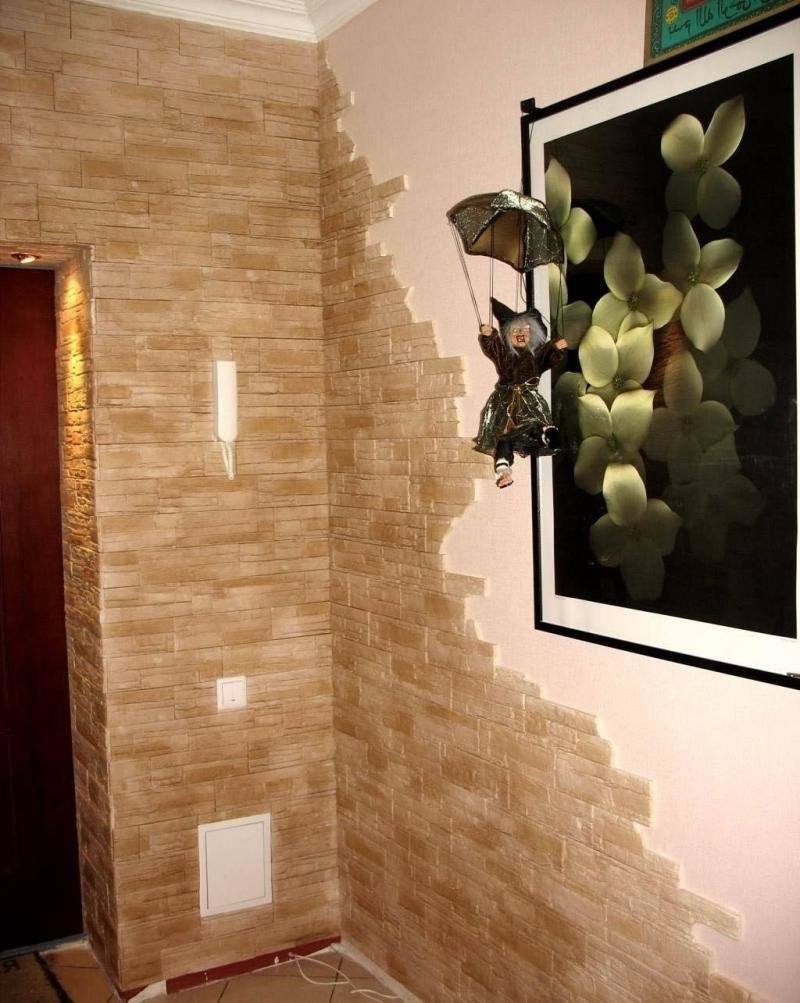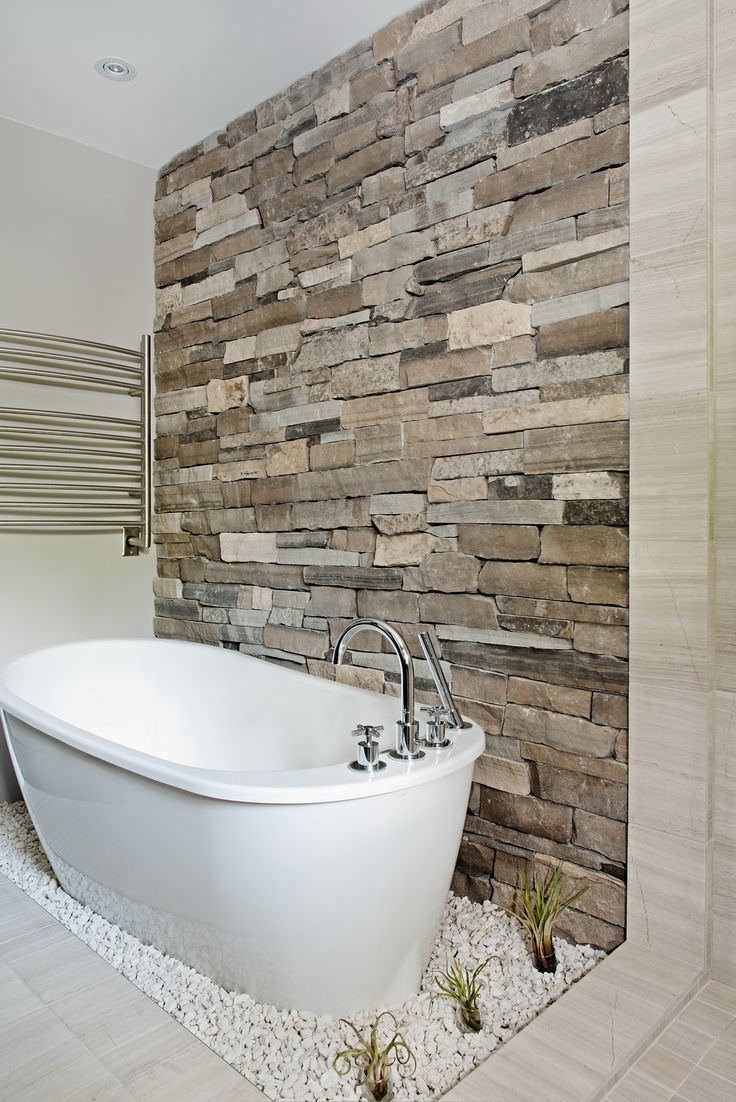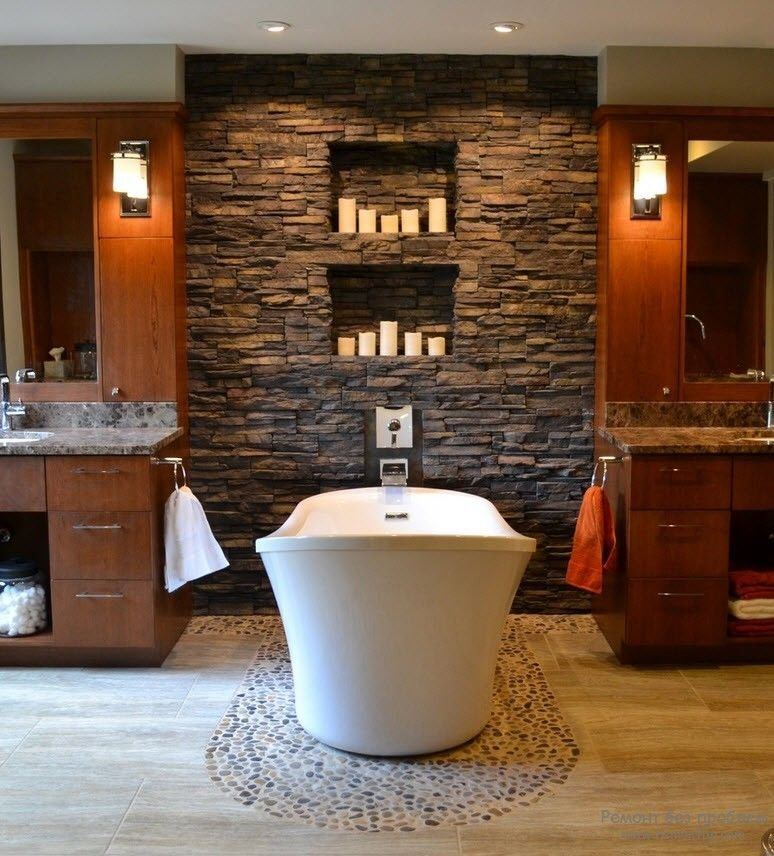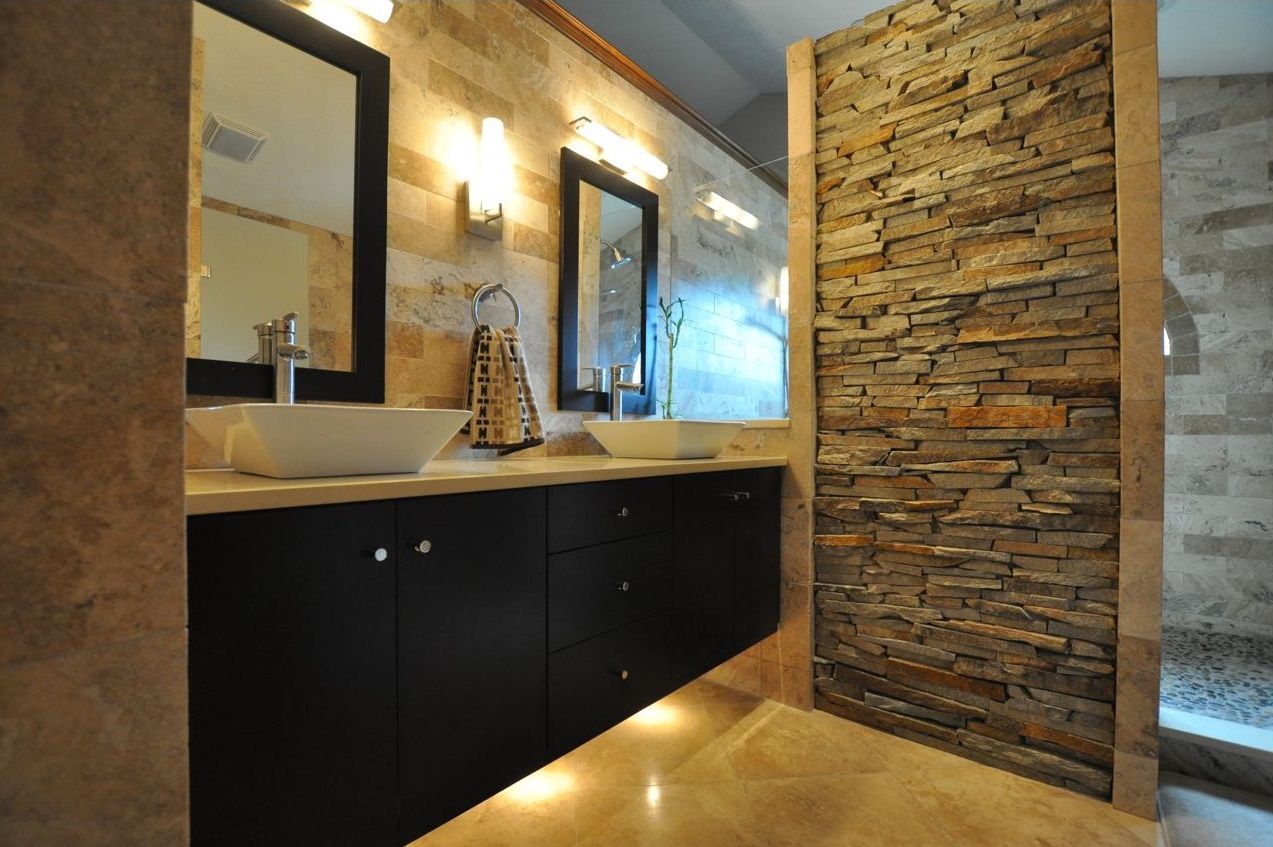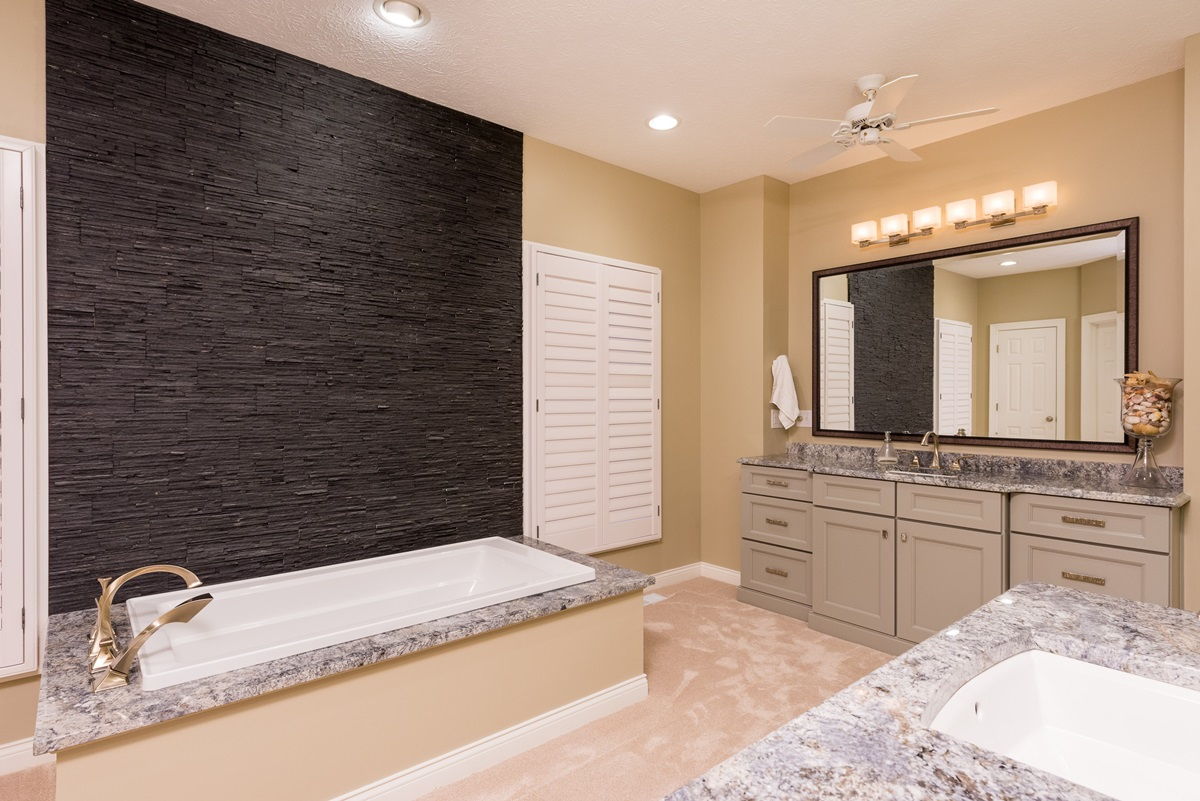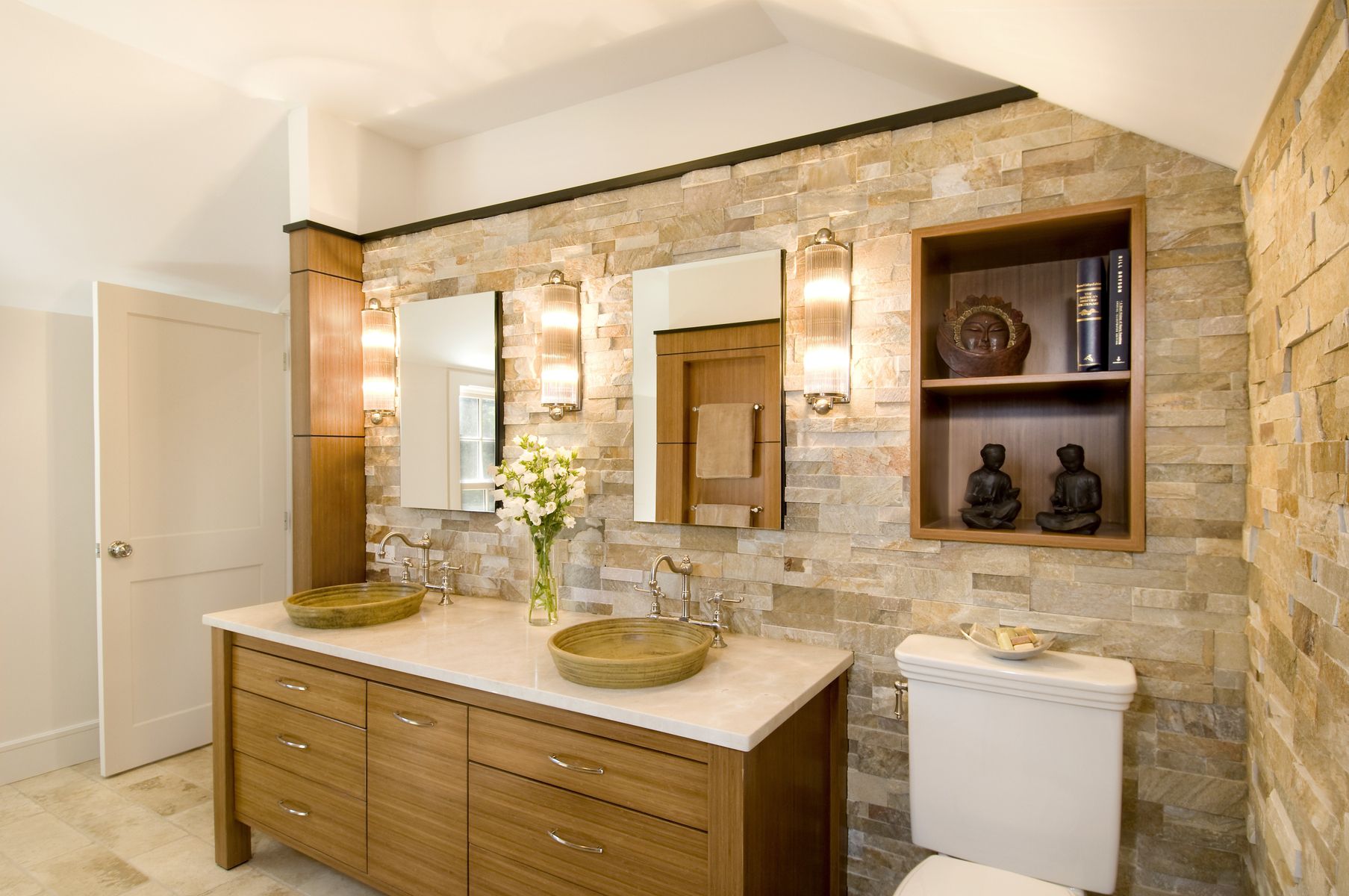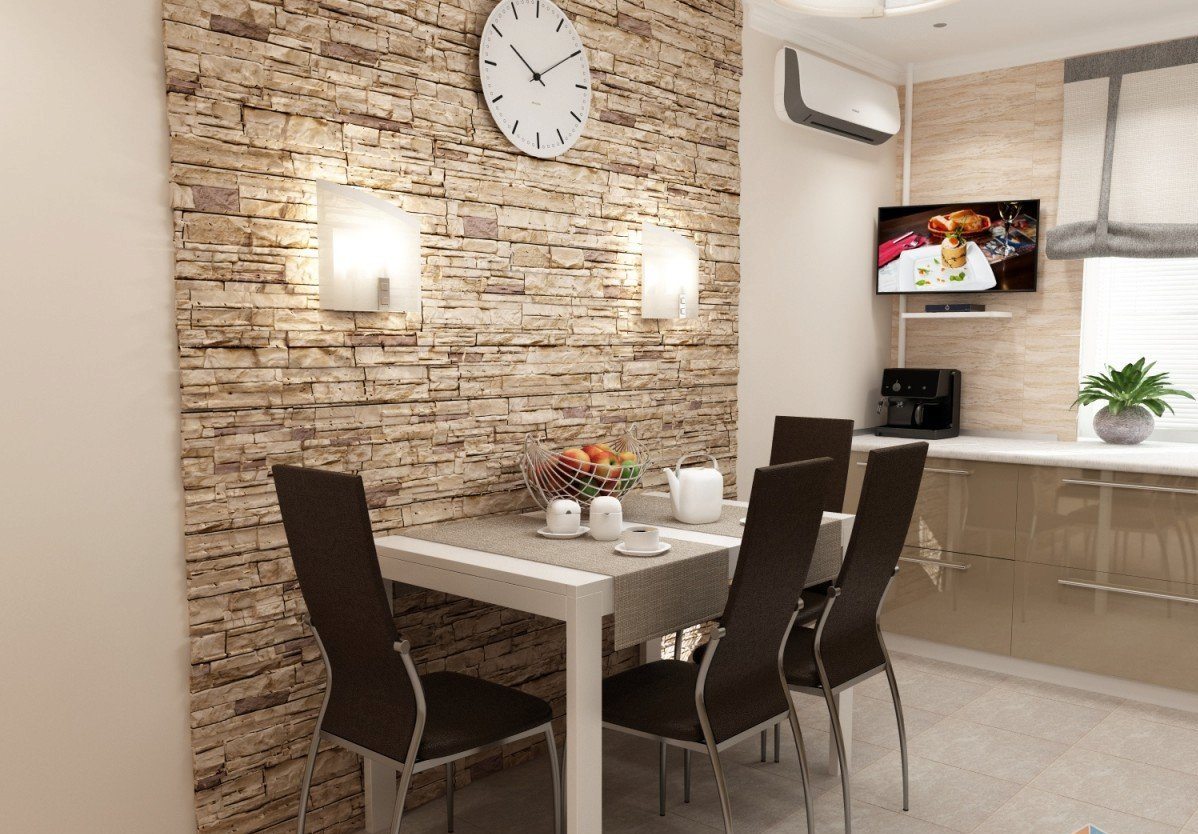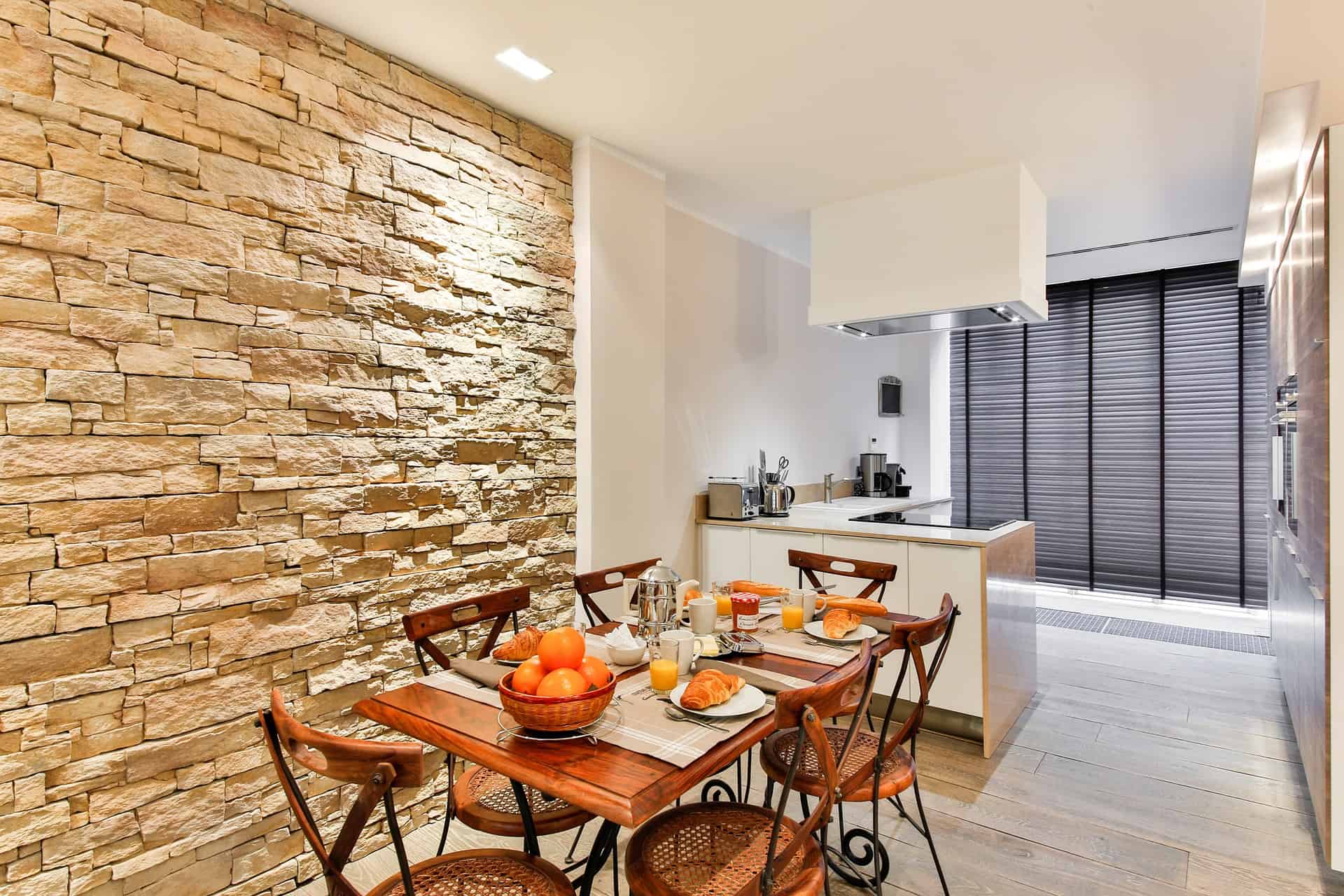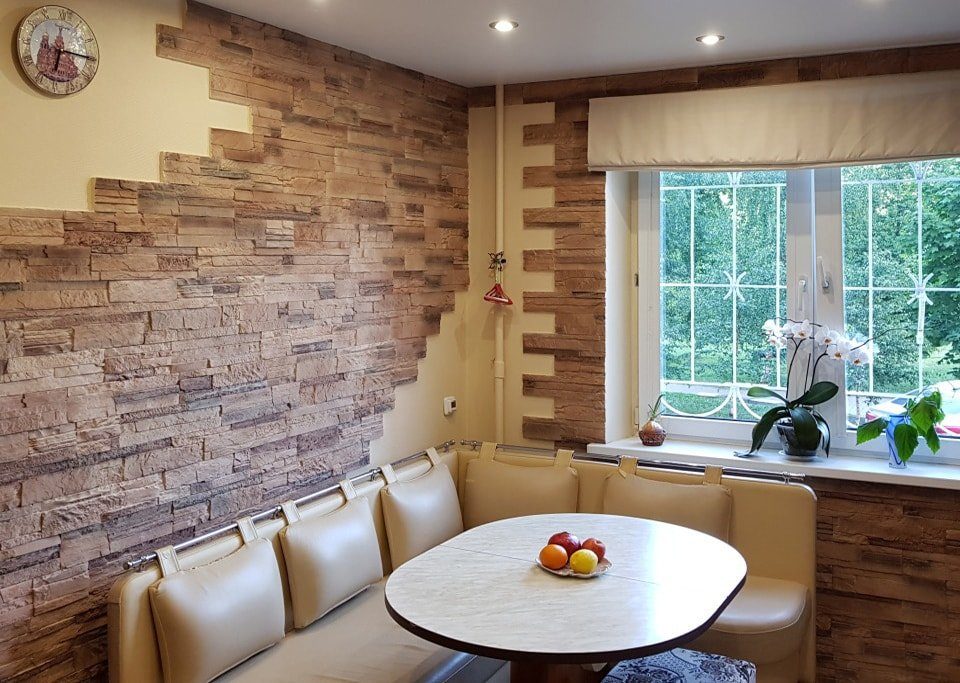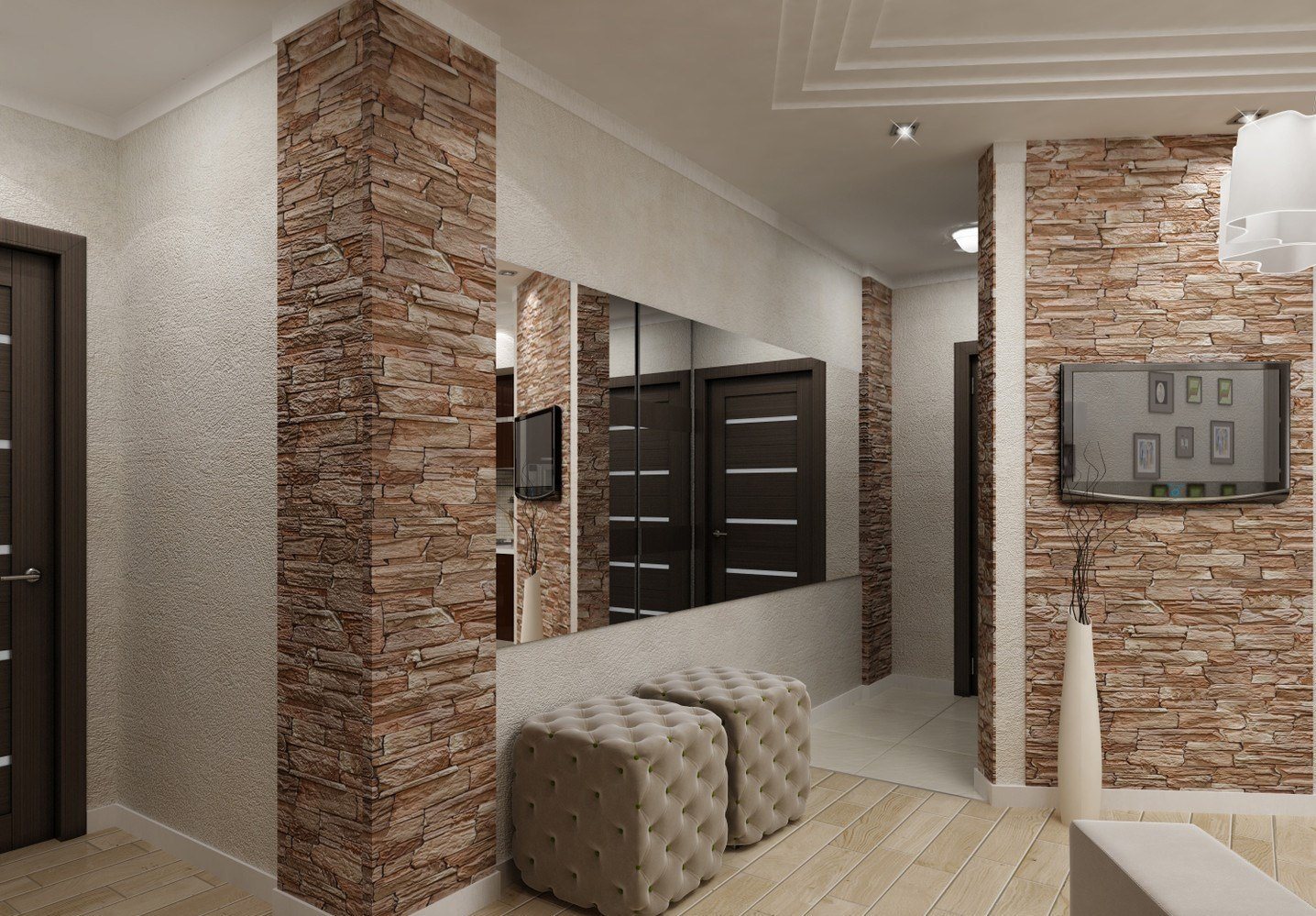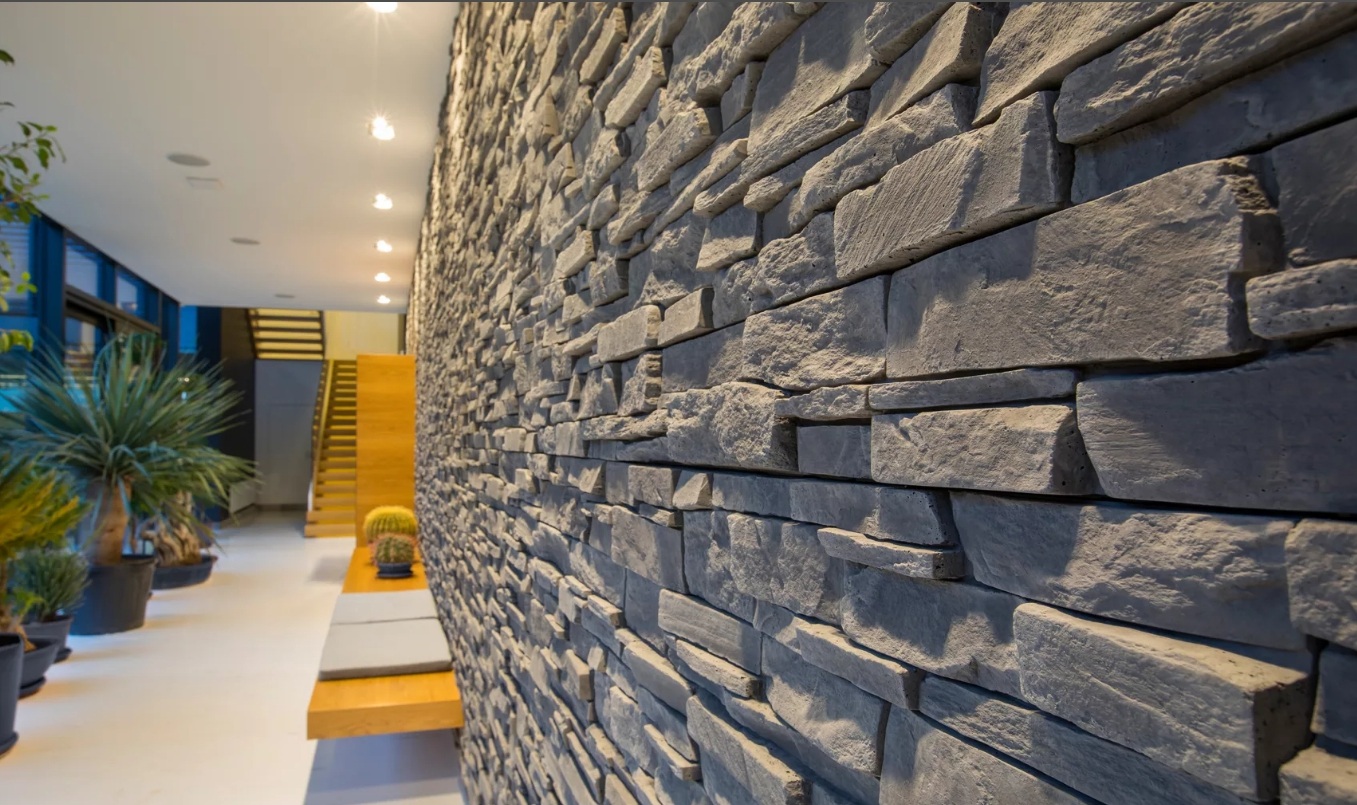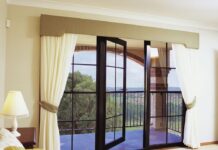Exterior and interior decorative stone was used by the ancient Romans to decorate walls and floors. The modern popularity of this material is associated with its permanent physical characteristics (resistance to damage and dirt), and after grinding or cutting tiles – aesthetic properties. Decorative stone in the interior is currently available in countless versions, which differ not only in colors, but also in texture or pattern. The most popular are models made of natural stone, such as marble, travertine, granite or slate, and their imitation of gypsum or concrete.
Decorative stone in the interior: which one to choose?
When choosing a decorative stone for the wall, several factors must be considered. One of the most important will be the price. The cost of decorative natural stone, mosaic, marble, travertine, sandstone or granite exceeds at least several times the amount that you will have to spend on artificial stone made of concrete or gypsum. It is also worth considering the question of what function the room in which the decorative stone will be located will perform. One type of stone cladding should be used in bathrooms and kitchens exposed to moisture, and a completely different one in the living room or by the fireplace. In the first case, natural non-absorbent granite, marble and shale are best suited, in the second – decorative gypsum stones (imitating natural mineral and wood), bricks (cement or painted tiles), as well as natural travertines and limestone, which, however, require impregnation.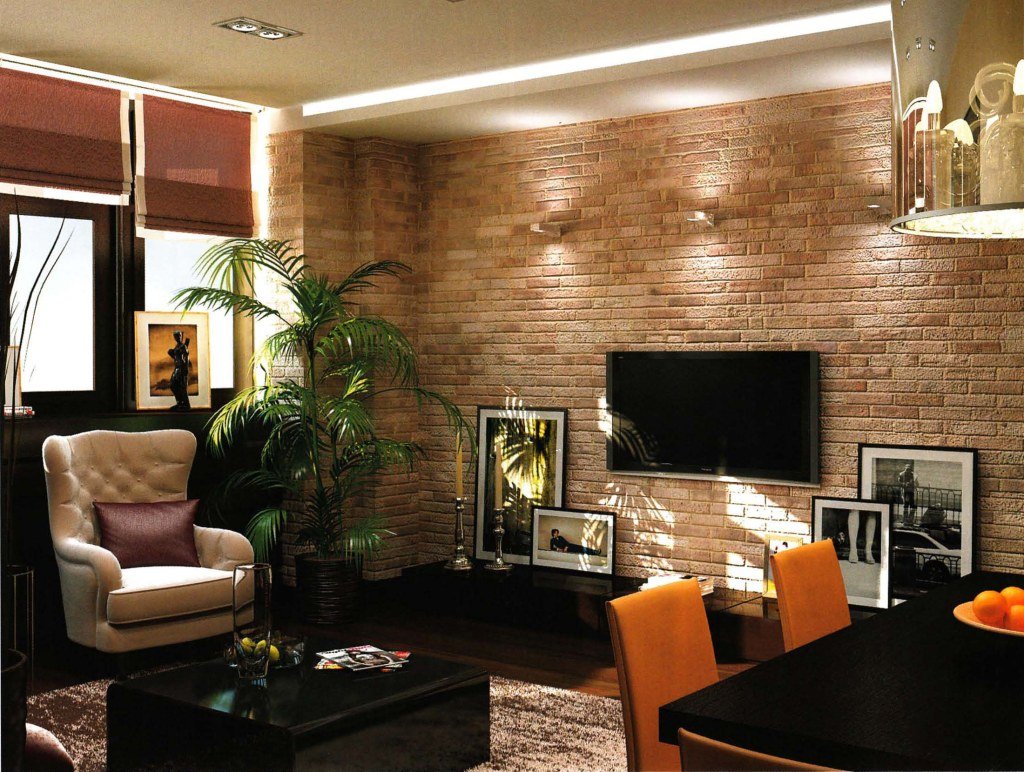
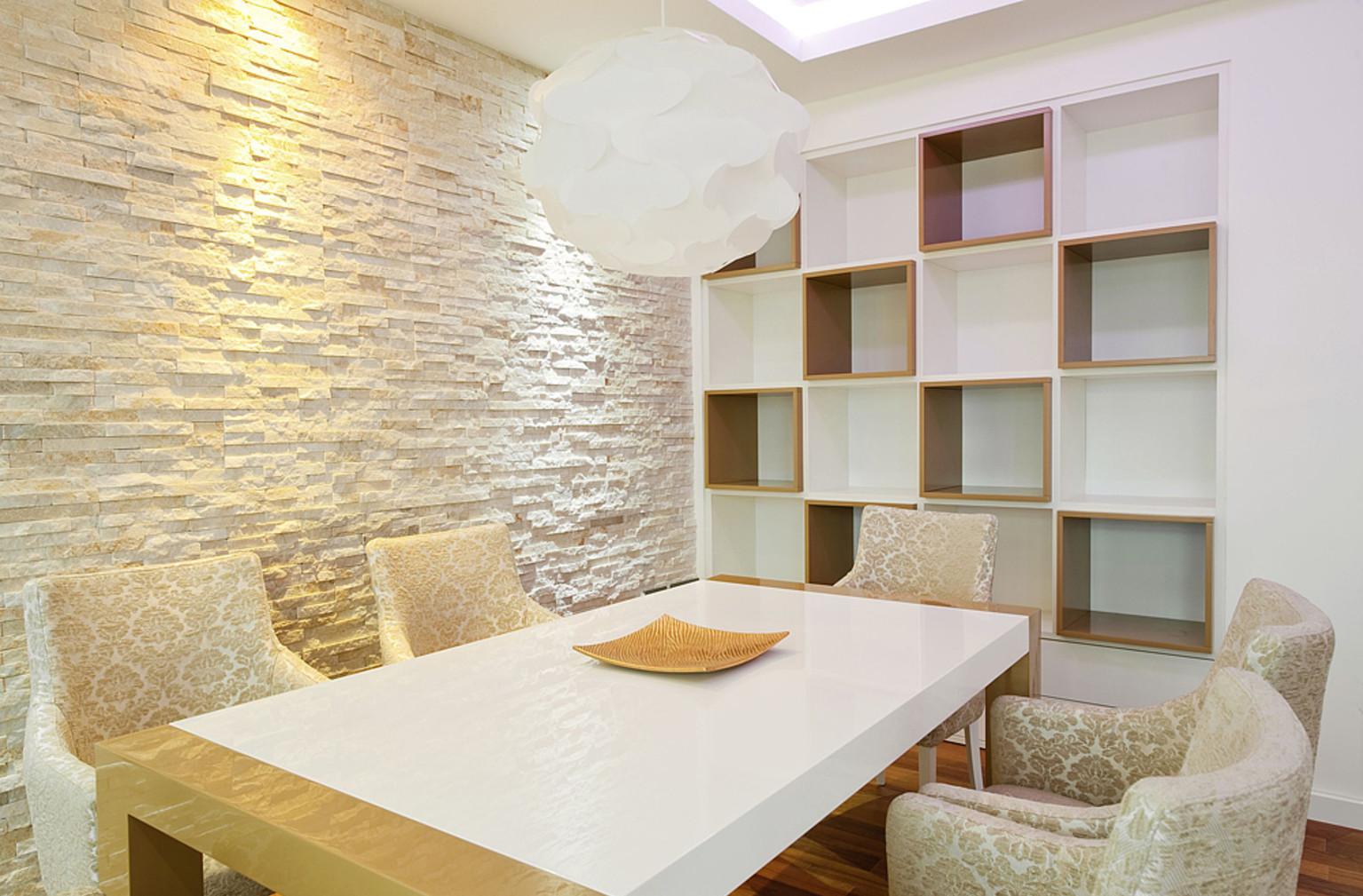
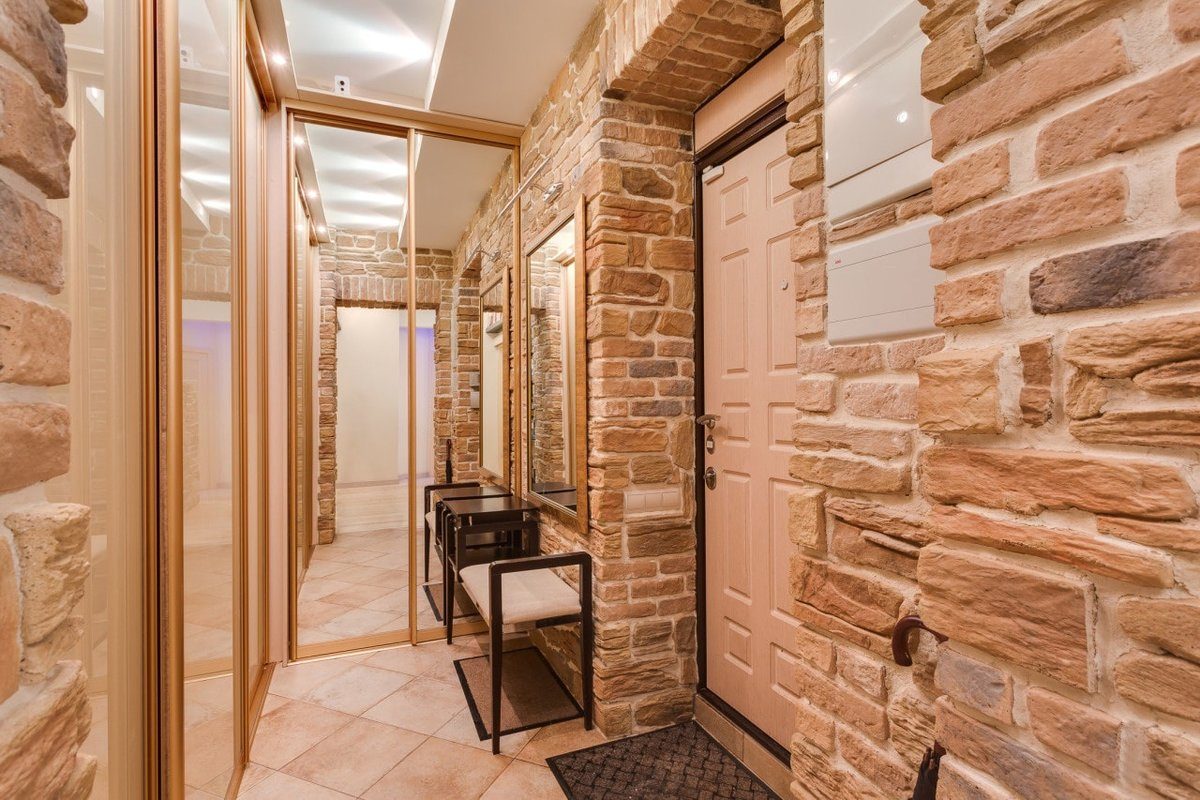
Interior decoration with decorative stone: natural material or imitation?
The decision depends most of all on the expected effect, since gypsum or concrete decorative stone will give the interior a completely different character than natural material:
- Interiors decorated in informal styles, such as Scandinavian, vintage or eclectic, will match the extremely trendy brick tiles that look good on the walls in the kitchen (above the countertop or at the dining table), in living rooms and corridors.
- Granite (as a countertop in the kitchen or dining table, as well as a fireplace body) as well as slate (on the wall in the living room or by the fireplace) are ideally combined with a minimalist or modern interior.
- Light classic marble, limestone, sandstone and travertine will suit exclusive compositions in glamorous, English or French styles. Ideal as a cladding for a fireplace portal or on the walls in a spacious hall.
When choosing a decorative stone, you should also remember about the properties of individual materials. Natural stones are often much heavier than gypsum models. As a result, they should not be used on cracked walls.
Decorative stone in the interior of the apartment: what to look for?
If you want to use decorative stone in the interior of the house, you should consider the following questions in advance:
- What surface should this material cover?
- What funds can be used for it?
- How long does it take to install?
- What color and type of cladding do you like the most?
- Does it match the style of the interior?
A very popular decorative option for walls is gypsum stone (for example, tiles imitating natural stone or brick). Its advantages are a quick and easy installation method and the ability to paint the walls so that you can change the appearance of the material.
Однако следует помнить, что гипс, бетон и природные камни приобретут более глубокий оттенок при пропитке, и, кроме того, они могут выглядеть совершенно иначе при дневном свете, чем при искусственном освещении. Поэтому перед размещением заказа на целую партию декоративного камня для дома стоит проверить, например, на примере одной плитки, как этот материал будет выглядеть в месте монтажа с учетом постоянного освещения и цвета соседних стен. Также стоит выбрать правильные вещества для сборки и пропитки материала, которые подходят для конкретной модели камня.
Decorative stone in the interior: photos of fashionable rooms
</a Although astone wall undoubtedly adds exclusivity to the interior, improper use of this cladding material can make the interior depressing. So how to skillfully decorate the interior with decorative stone?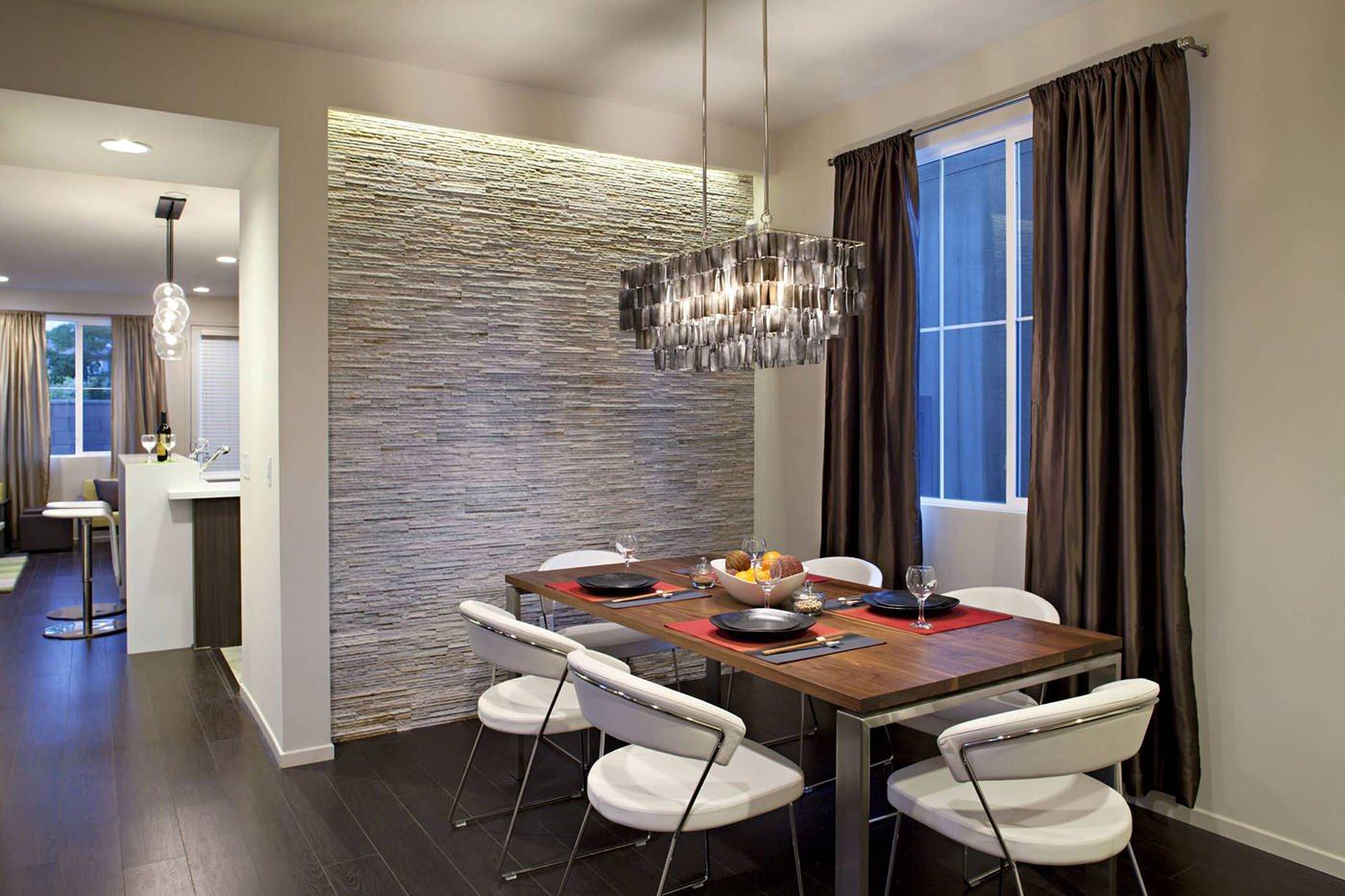
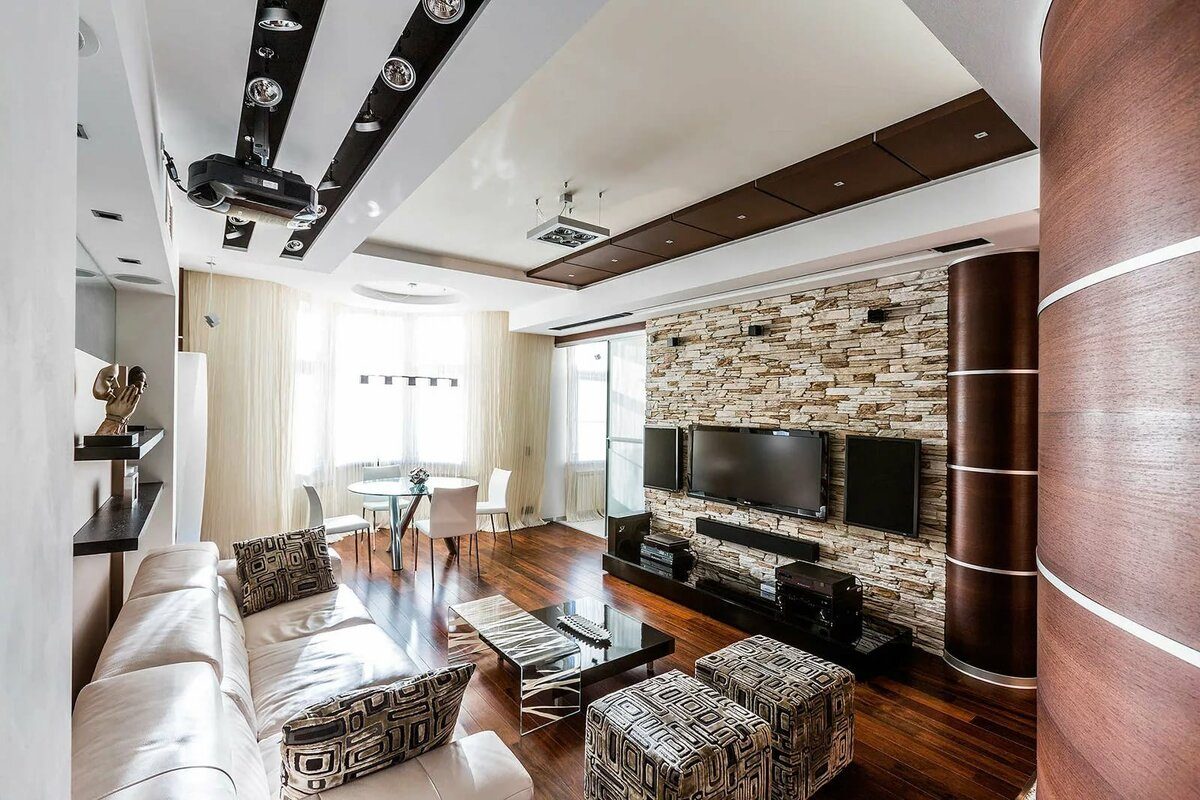
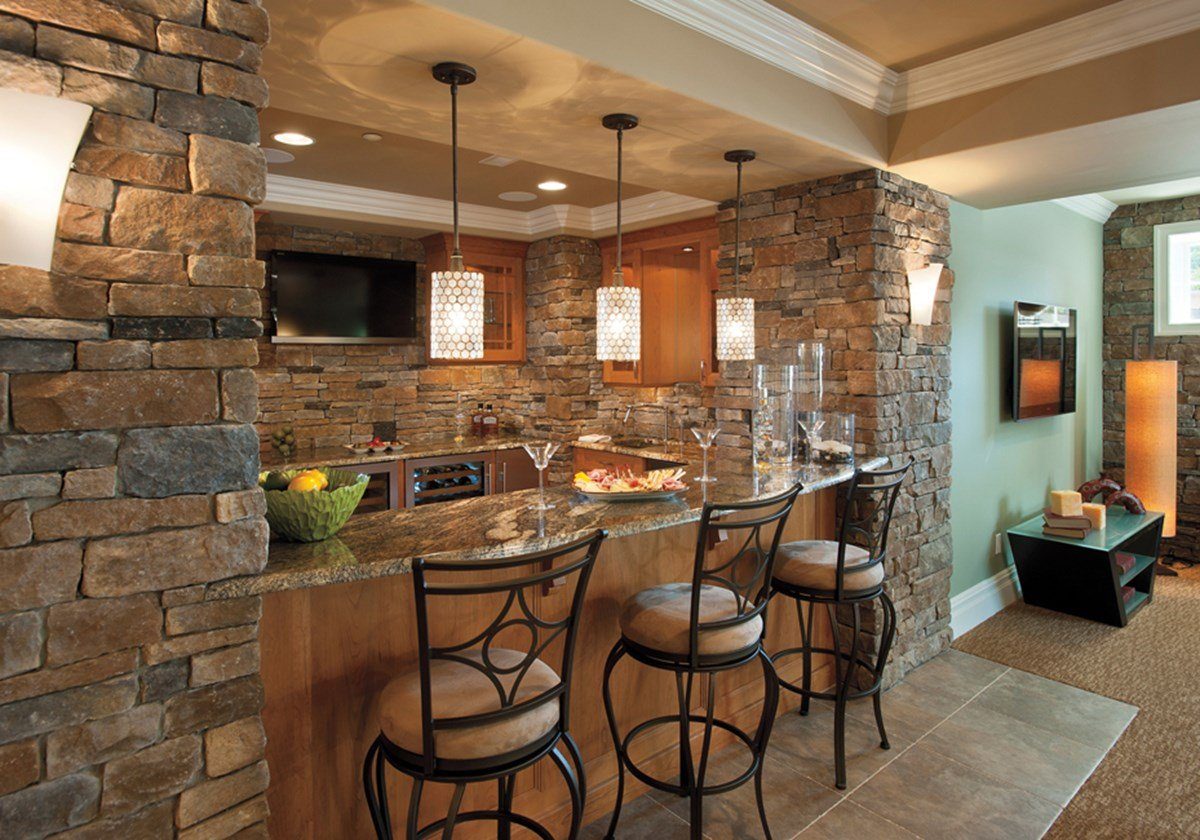
Interior design – decorative stone in the bathroom
Decorative stone for walls, as a material with high resistance and strength, can also be used in bathrooms. The original decoration will make the place of daily hygiene look like an elegant SPA-salon. Decorative stone can be freely used as a part or decorate the entire wall. Just be sure to check before installing the material in a place prone to flooding, such as behind a crane, whether the decorative stone model you have chosen is suitable for such use.
The stone in the bathroom should give the room a classic style. This effect can be achieved by applying stone cladding to both walls and floors. However, it is increasingly abandoned, covering the walls from floor to ceiling with stone, since it is more fashionable to apply a moisture-resistant layer only in the area of the shower tray, bath or sink or only up to 2/3 of the height of the wall.
Decorative stone in the interior of the kitchen
The high strength of decorative stones to the wall and their moisture resistance allow the use of this type of decoration in kitchens and dining rooms. Decorative stone in the kitchen, depending on the furniture and accessories used, can give the whole room a modern or slightly rustic character. The material can be used in places under cabinets, decorate the opposite wall from the dining table or decorate the bar.
Decorative stone in the kitchen can be used in the area of the work surface (both natural and gypsum after impregnation) or on one of the walls of the kitchen island, as well as at the dining table.
Decorative stone in the interior of the living room
Impressive wall decorations are usually placed in the living room. And it is not surprising, since this is the room in which most often the whole family relaxes and welcomes guests. Decorative stone for the wall will be great in such a place. Where to place wall decorations in the living room? Most opt for impressive stone walls with a TV. The second popular place is the corner walls near the armchair or sofa, as the decorative stone creates an elegant backdrop for the living area. In the living room, sturdy cladding is usually used in the fireplace area. In small rooms, it is worth using white or light gray material, preferably with a smooth texture and not very wide grout, so as not to reduce the interior space.

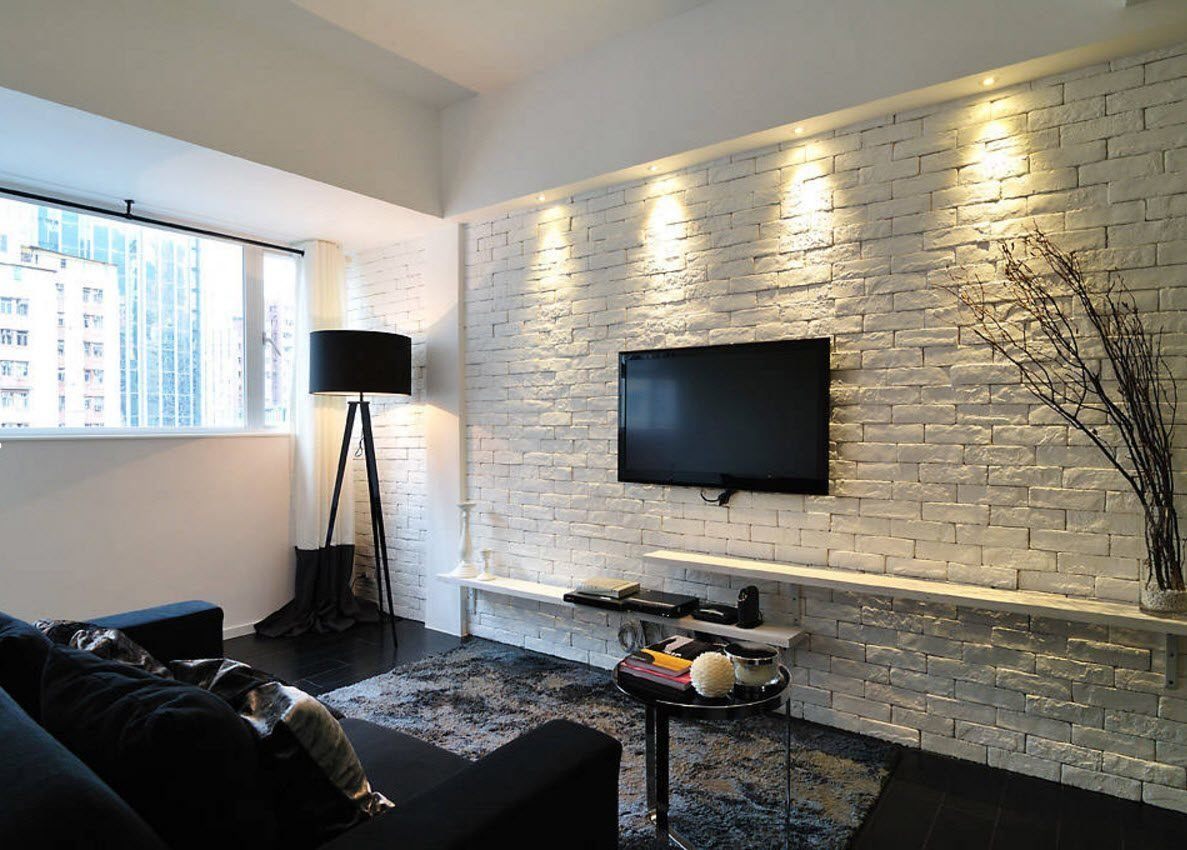
Decorative stone in the interior of the hallway
As you know, the first impression is the most important. That is why the interior design of the corridor is so important when arranging an apartment. Even if you have a beautiful living room, but guests after passing through an unsightly corridor will not want to look at the house further. The decorative stone finish also works wonderfully in the room that greets you from the entrance. It can be a spectacular detail or a whole wall – the choice is personal. Be sure to take care of this apartment showcase to make sure that the guests visiting you will be pleasantly surprised.
Cream stone placed in dark corridors will add elegance and effect. It is worth paying attention to the lighting used on the stairs, as it emphasizes the pattern of the stone and at the same time facilitates navigation along the corridor in the evening. Sometimes, instead of decorating with stone, it is better to limit the entire wall to a spectacular detail. In the arrangement of the corridor, you can use light vanilla stone in the form of vertical stripes. The corridor looks great in an elegant white and gray design.
Decorative stone in the bedroom – beautiful and romantic
Decorative stone for the walls also looks great in bedrooms. With this decoration, you can easily transform an ordinary bedroom into a luxurious boudoir. In addition, the effective shape of the stone and the natural nature of this arrangement will have a positive effect on the quality of sleep. Where are wall decorations usually placed in the bedroom? Of course, on the wall behind the bed is by far the most popular place.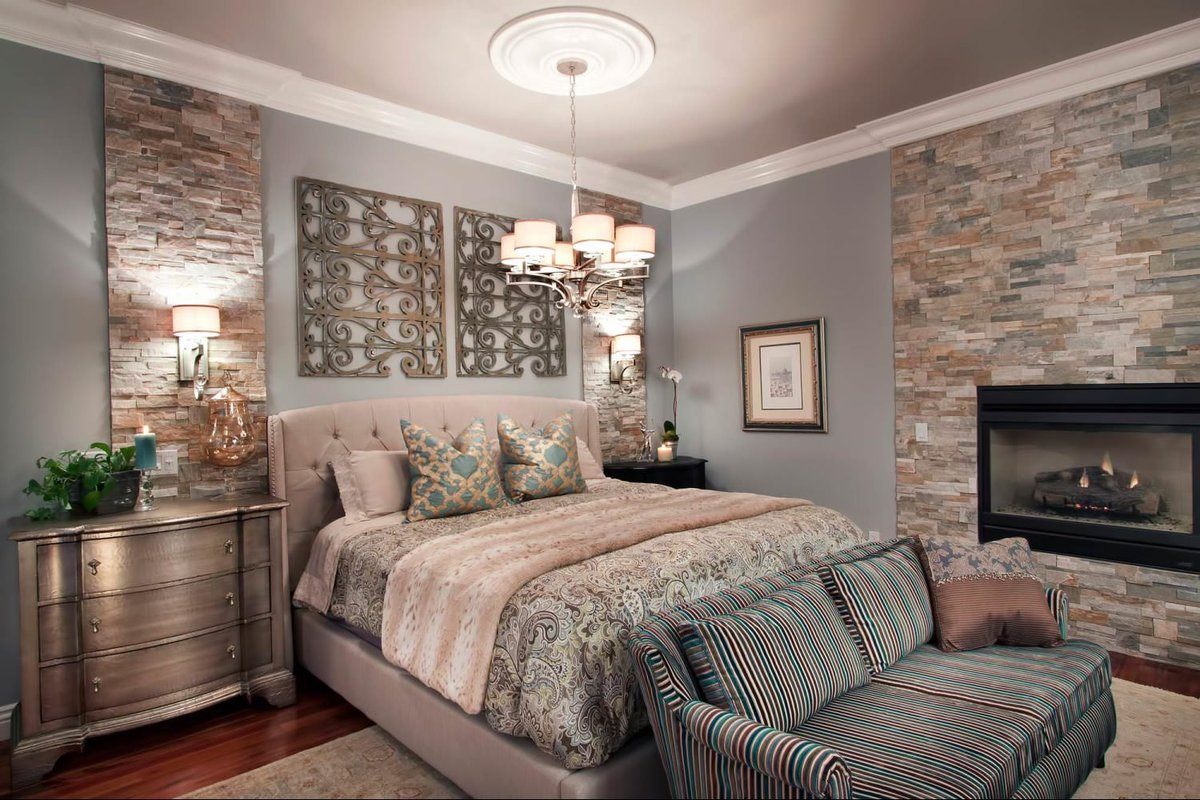
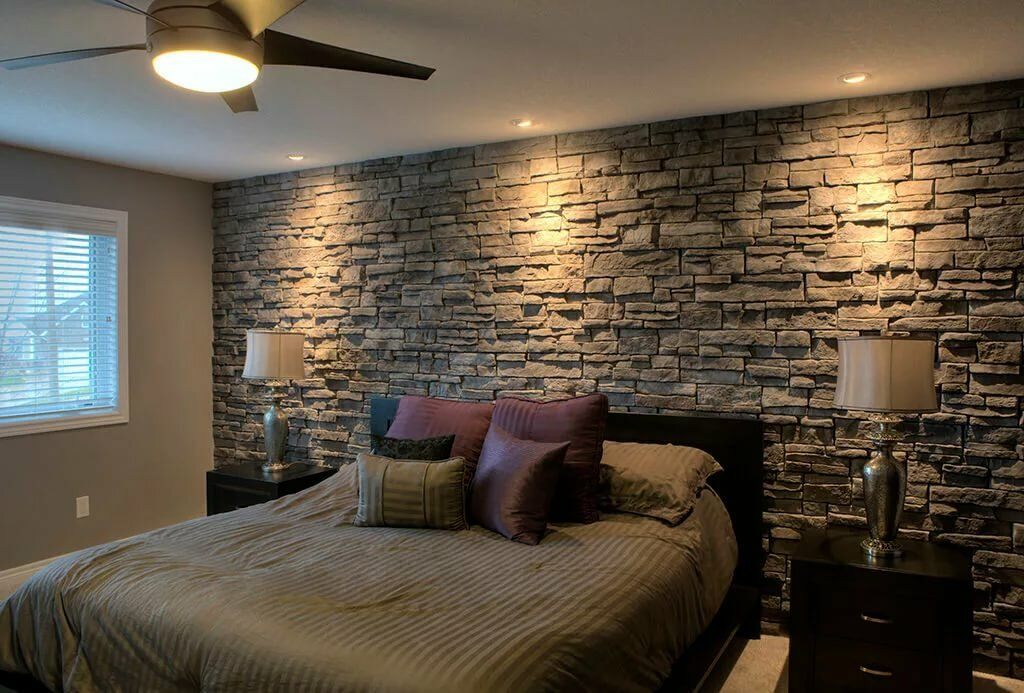

What are stone walls associated with? The first thought is a wide hotel lobby or a luxurious apartment, which can be seen in photographs from glossy magazines. However, the fashion for stone and the proliferation of cheaper decorative stone mean that you can easily achieve a similar effect in your own home. How to use such a decoration to emphasize the style of the owners and give the apartment an appropriate elegant look? See the photo gallery.